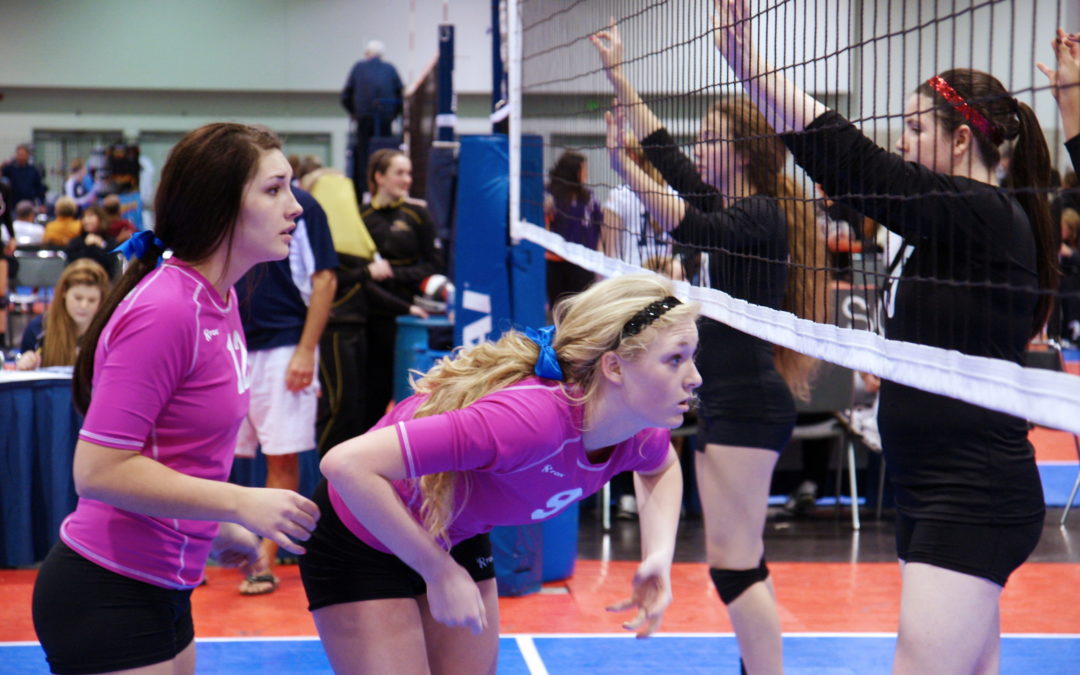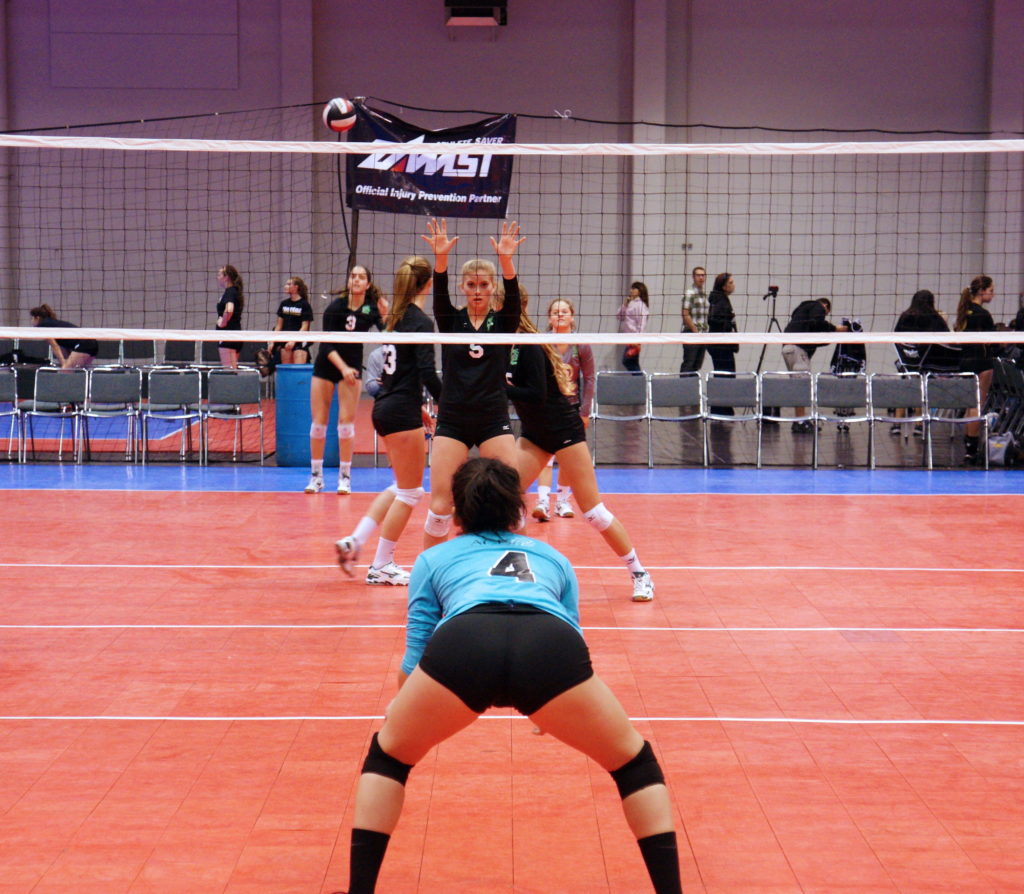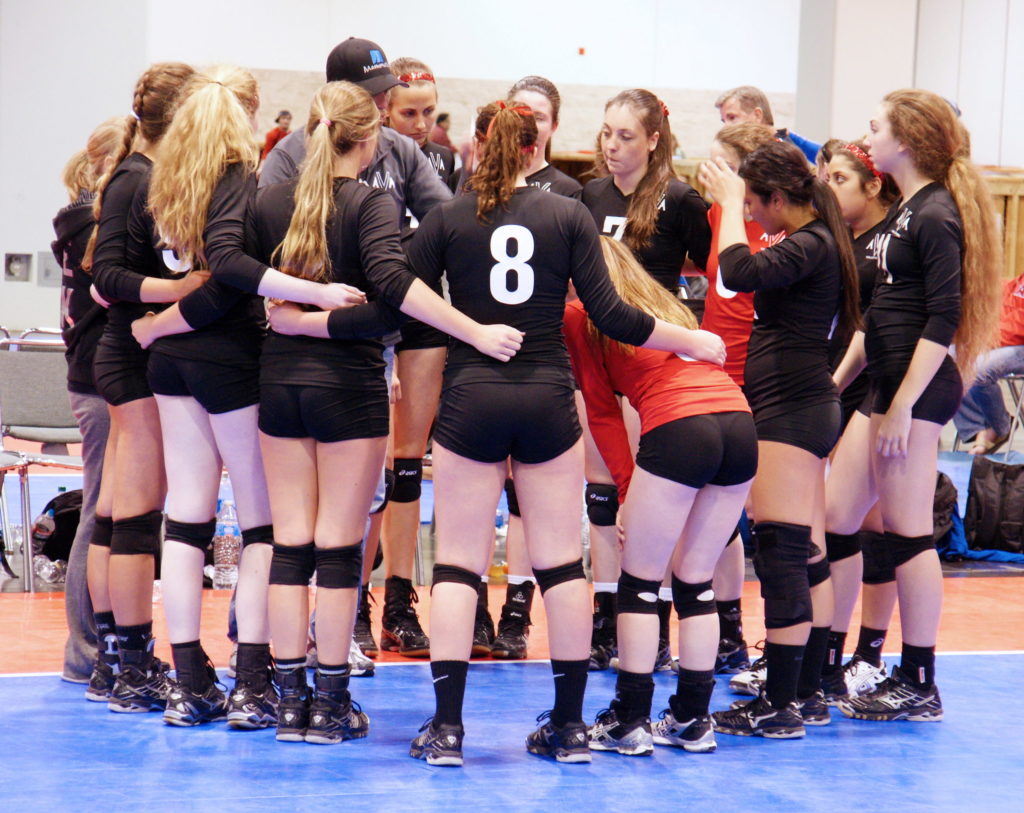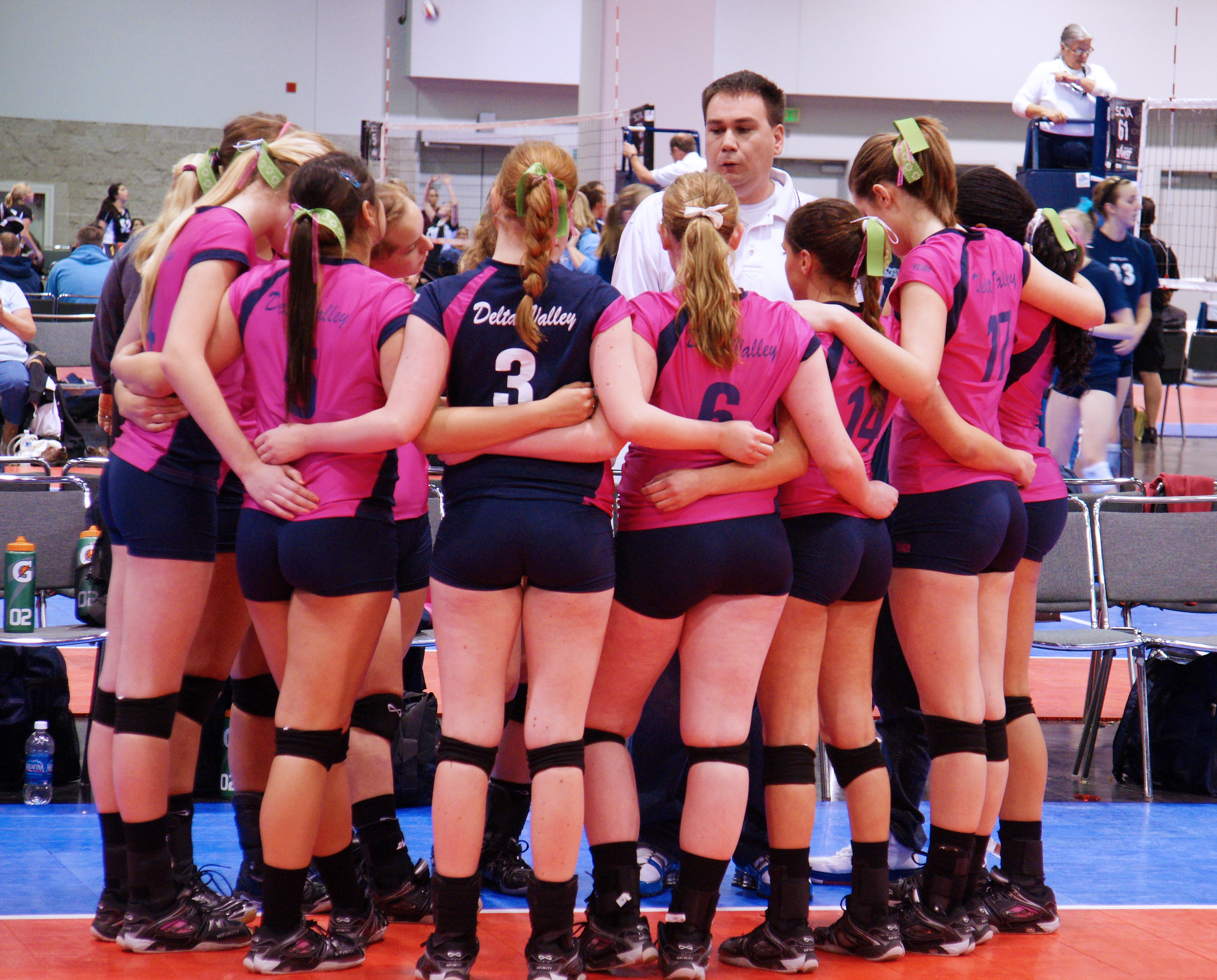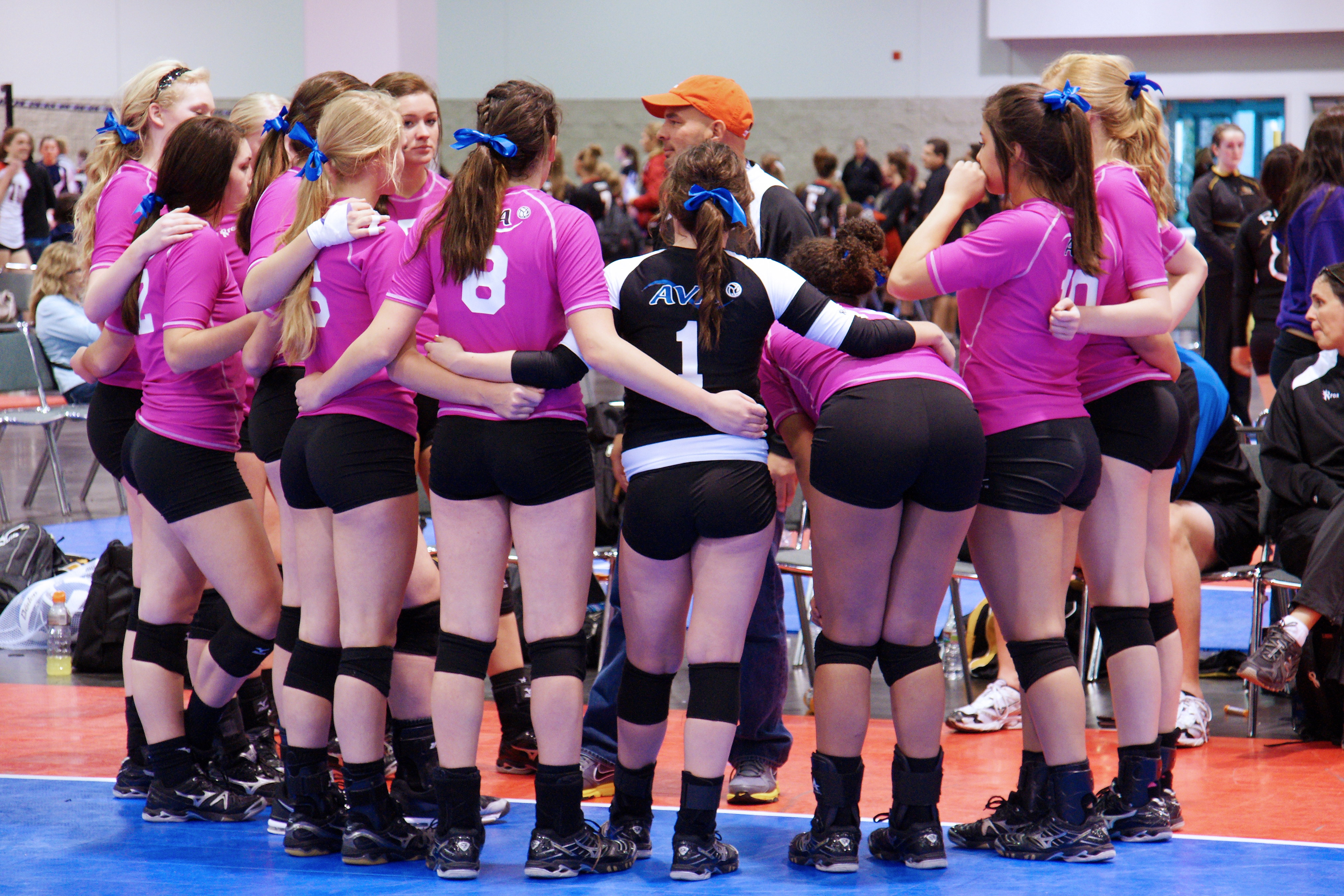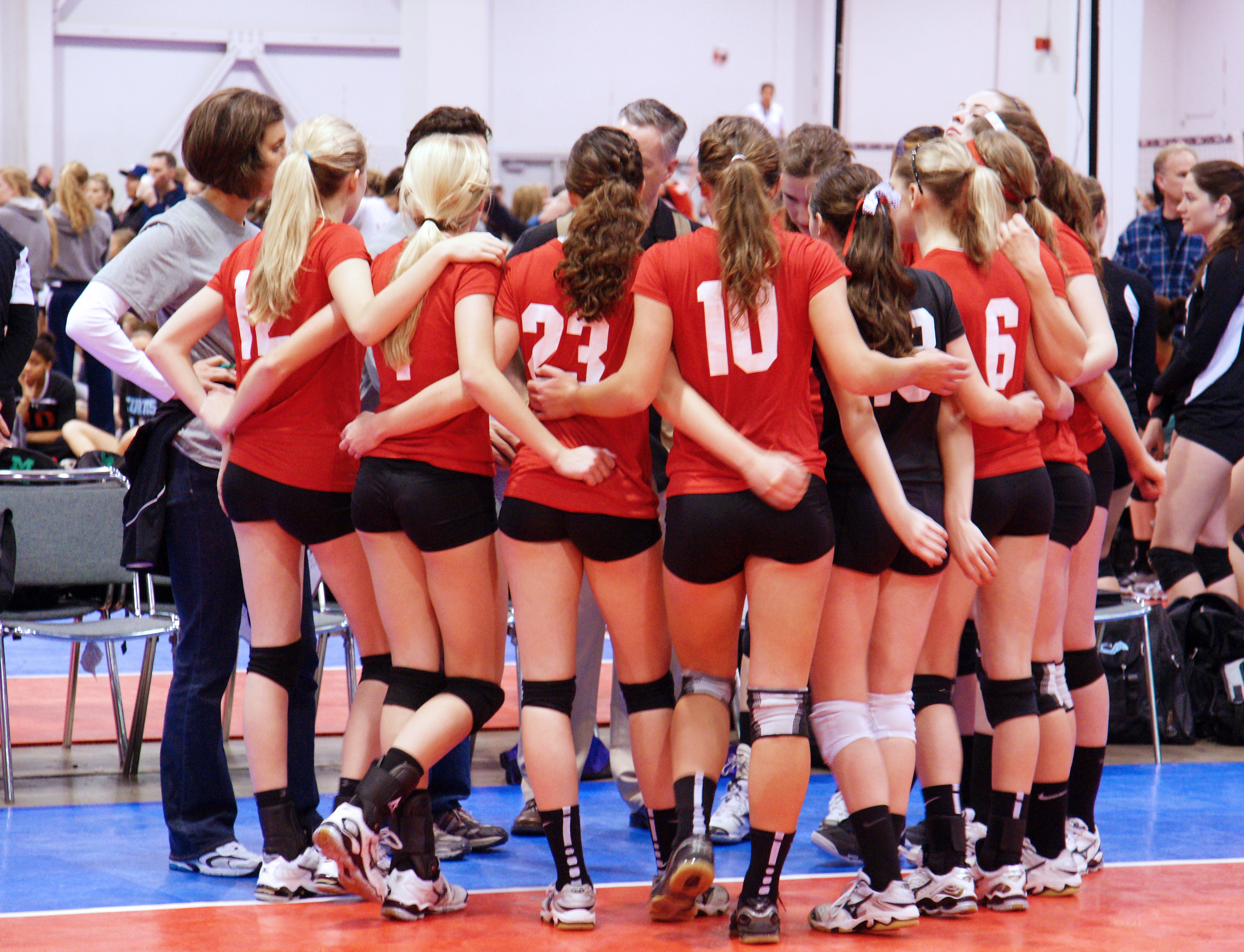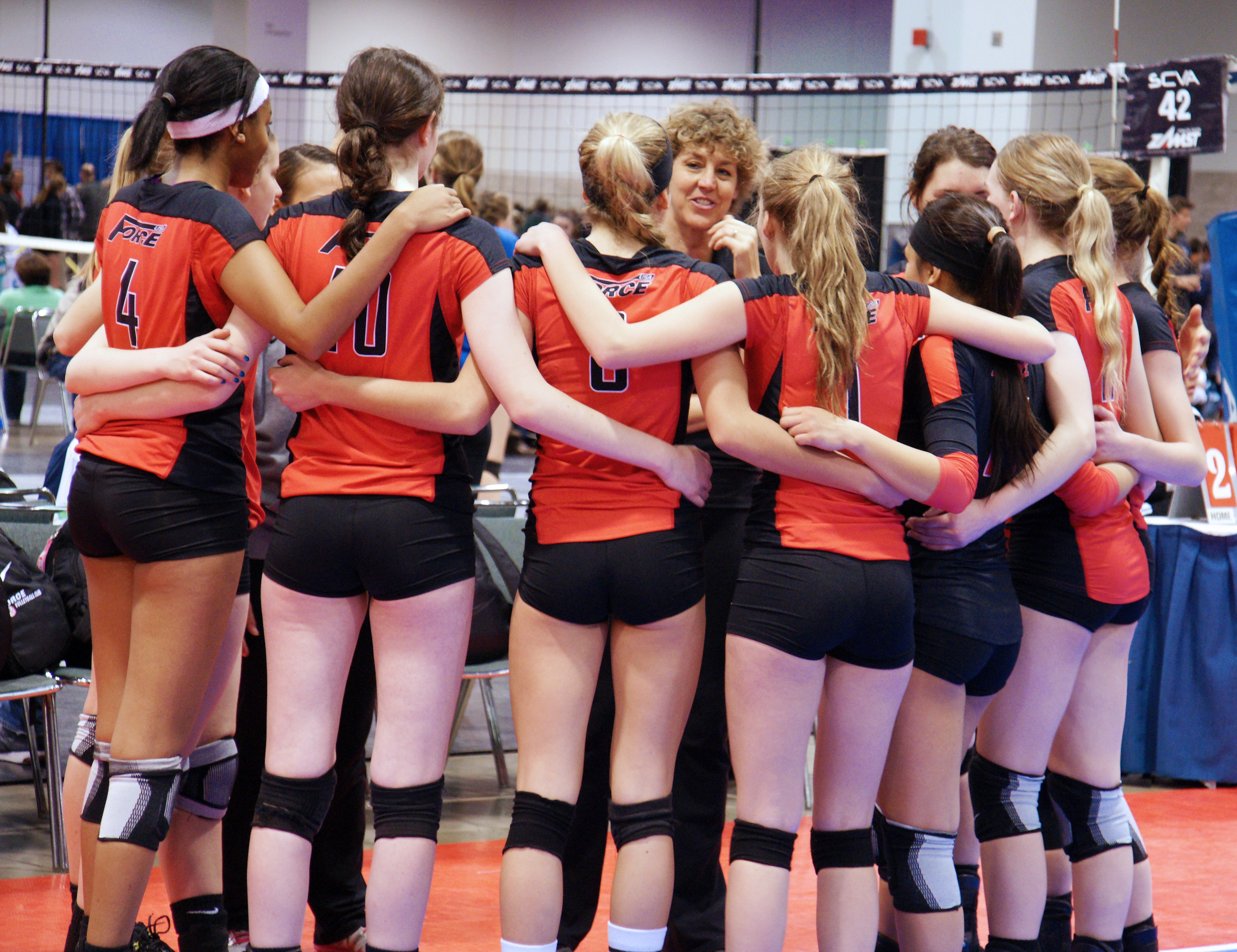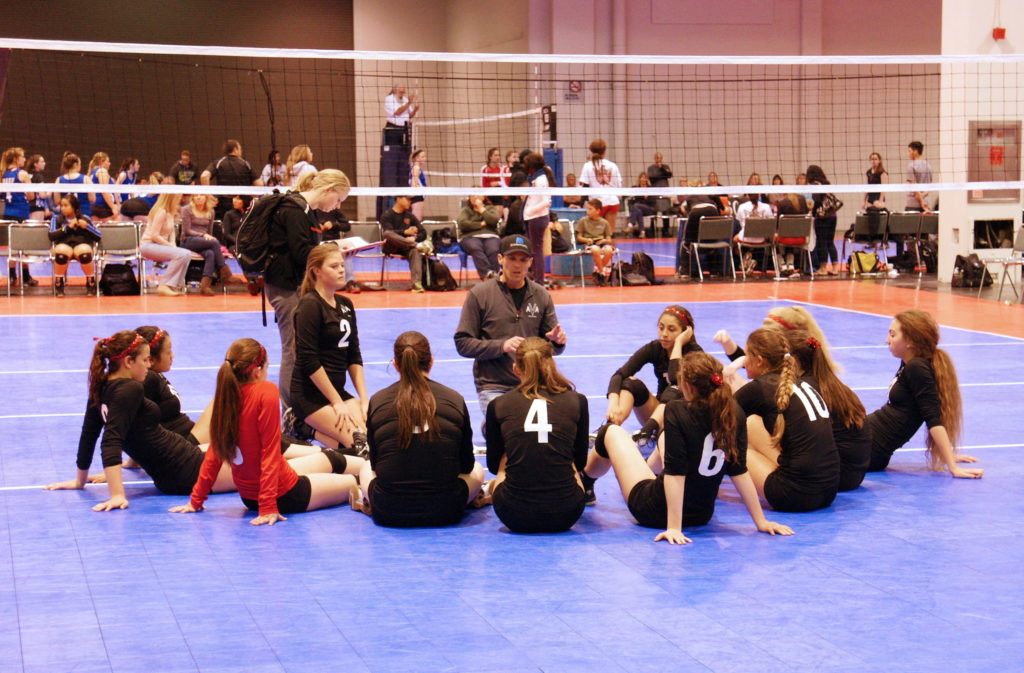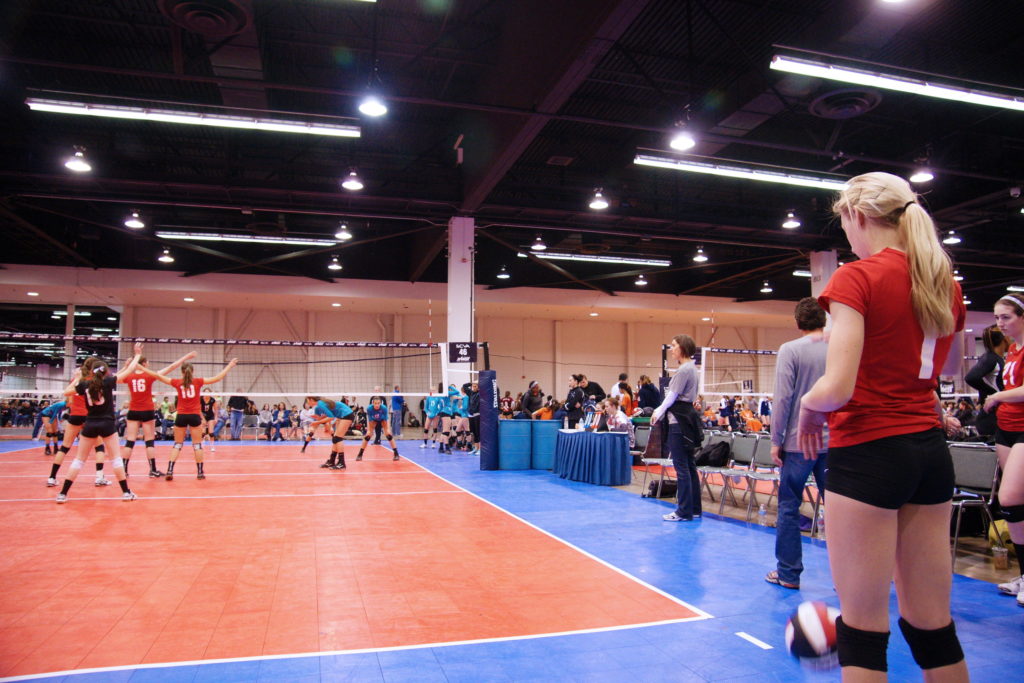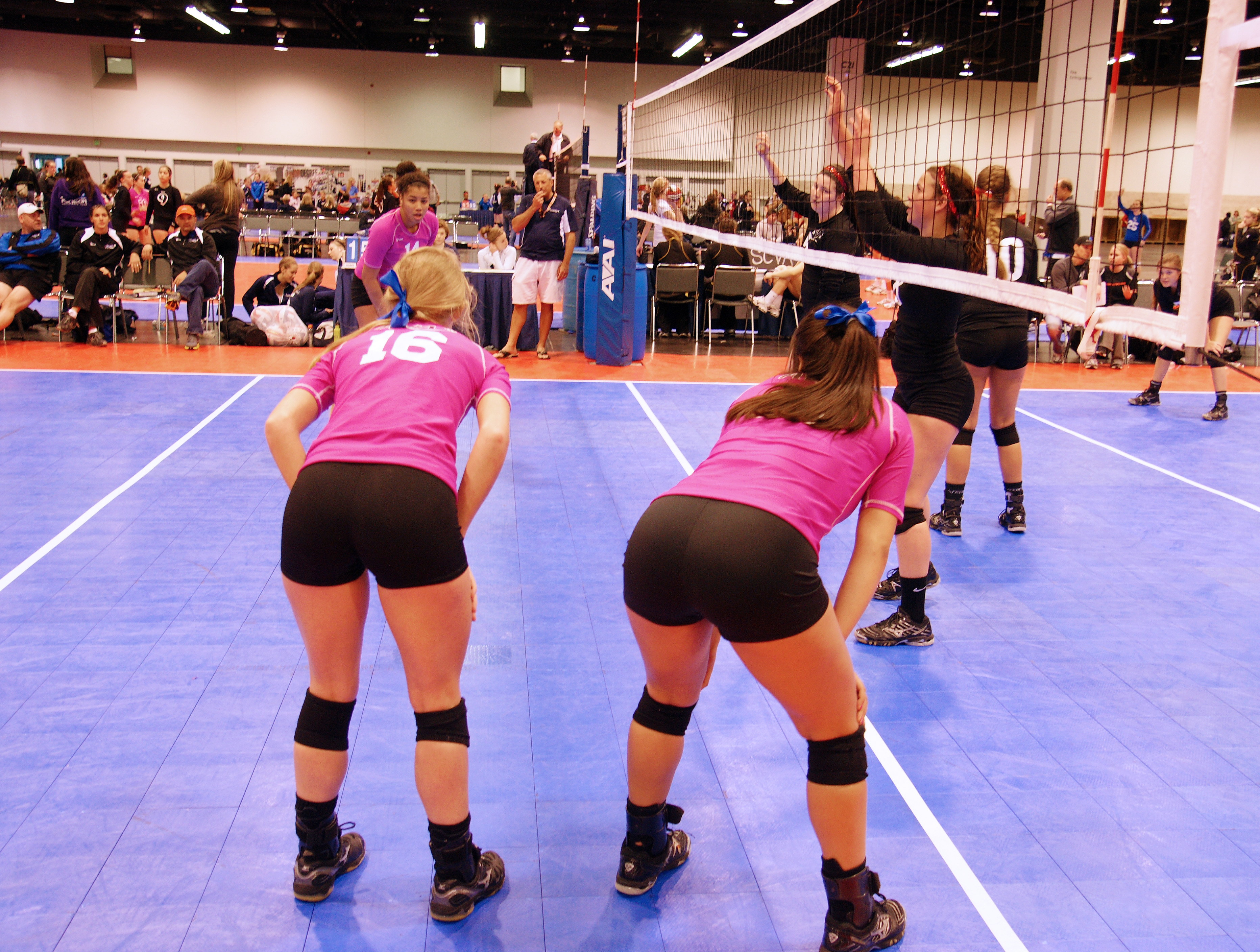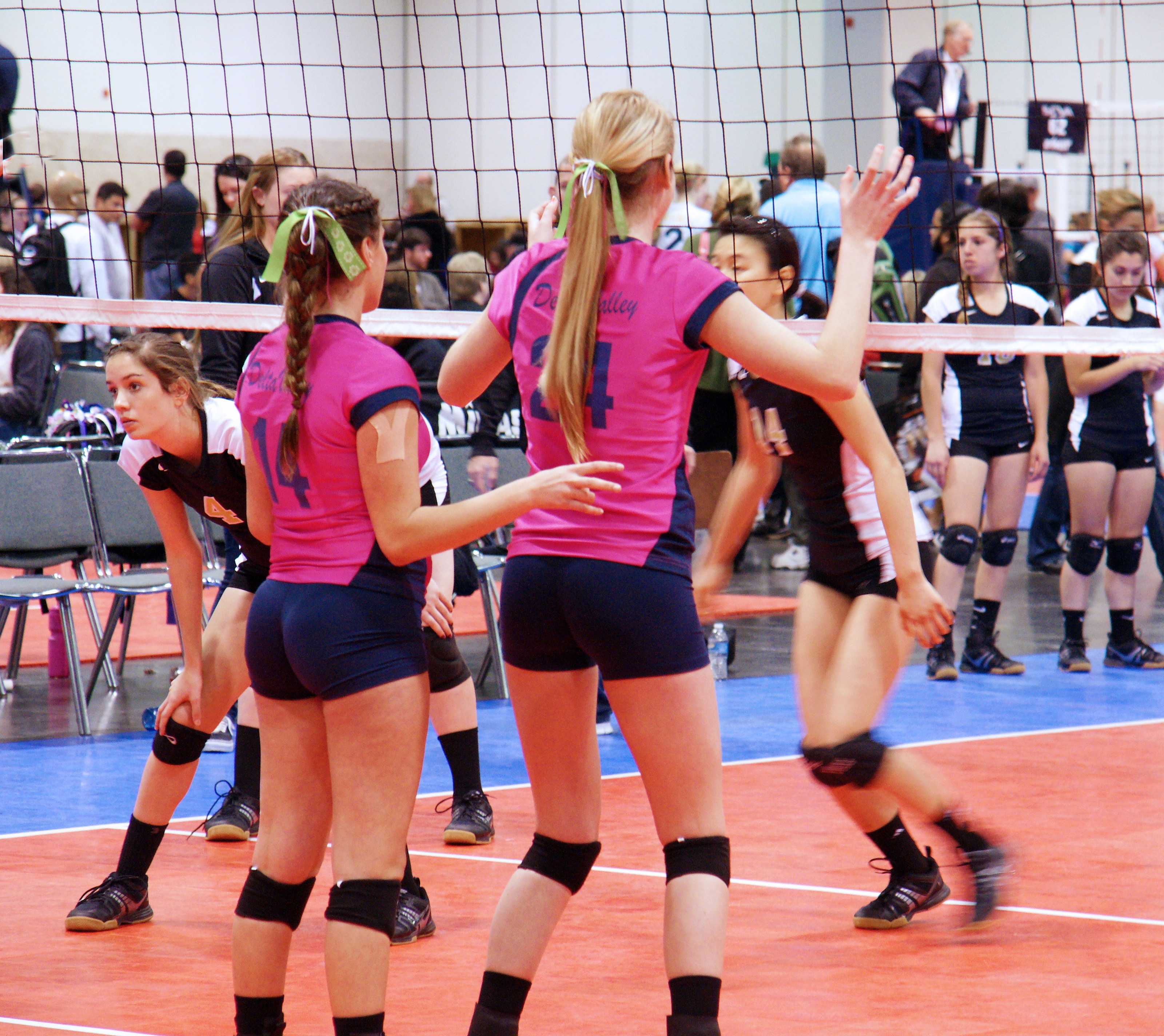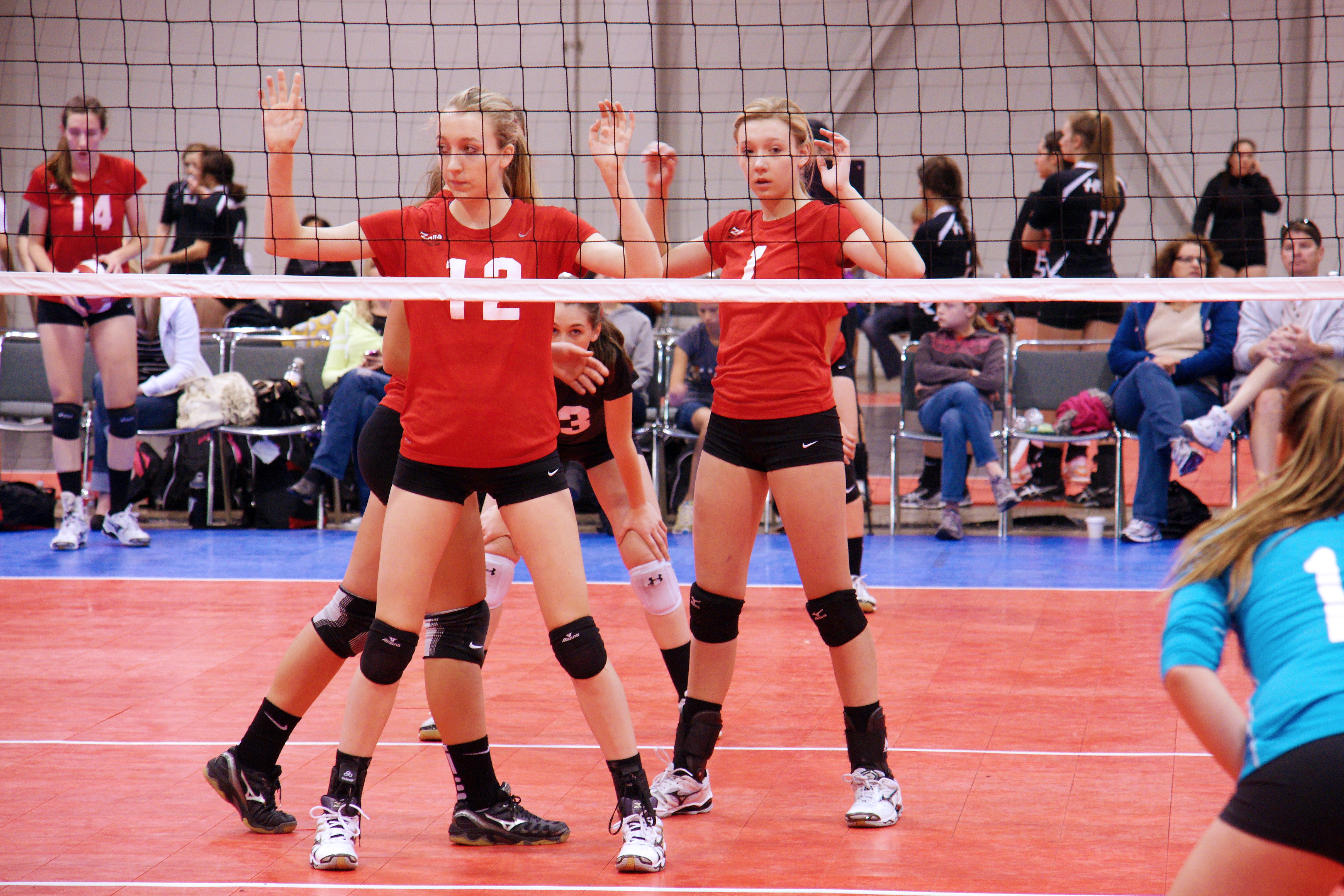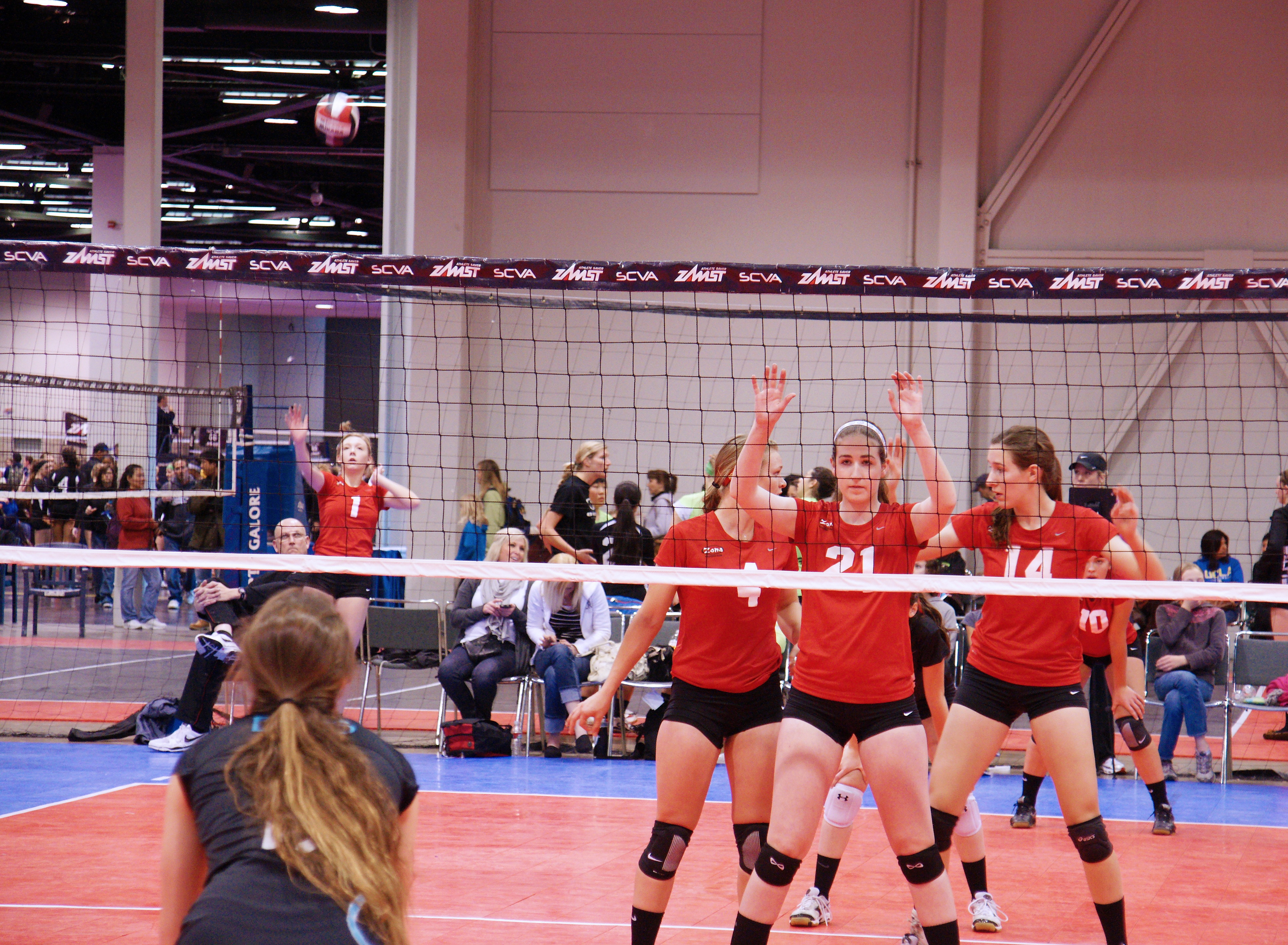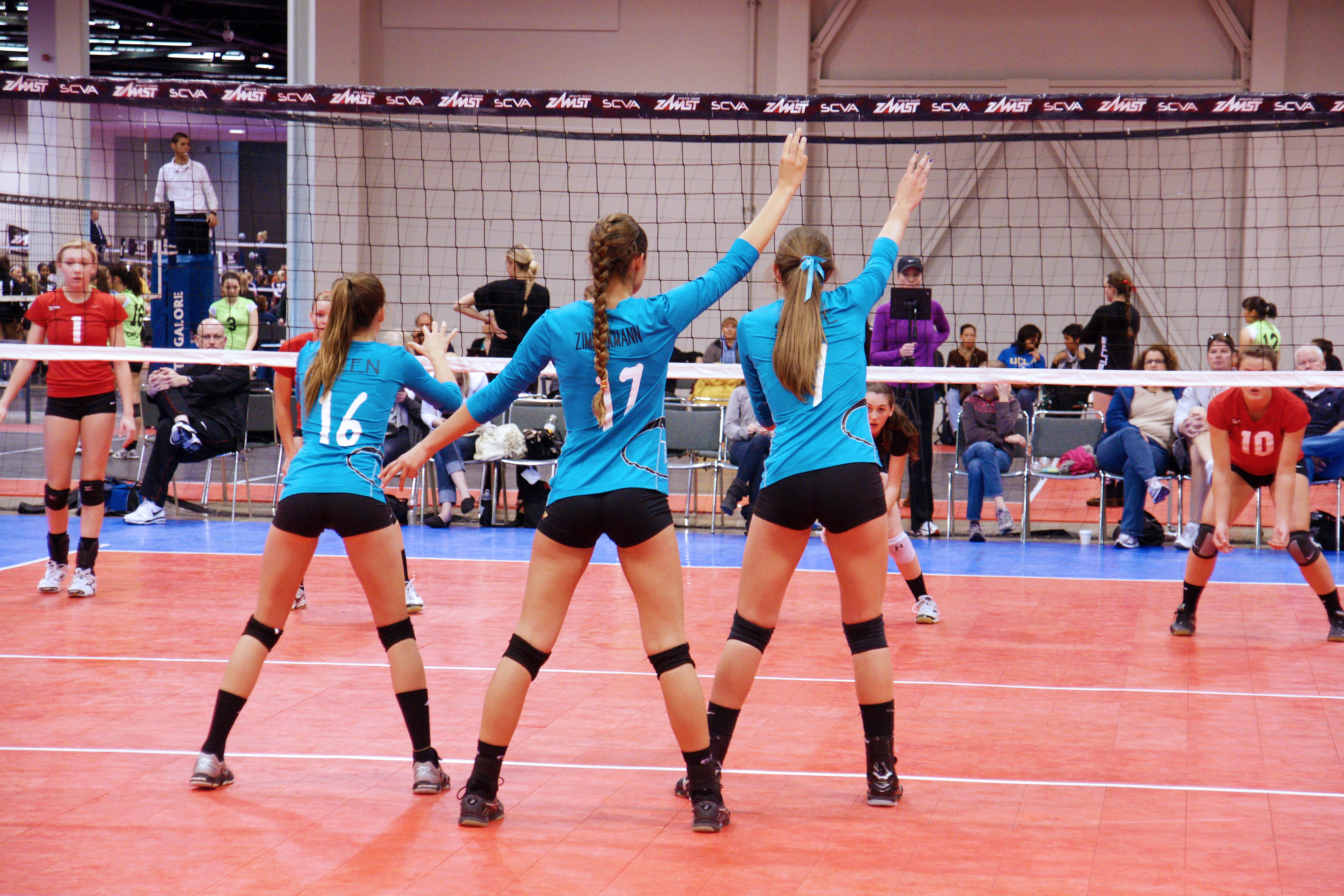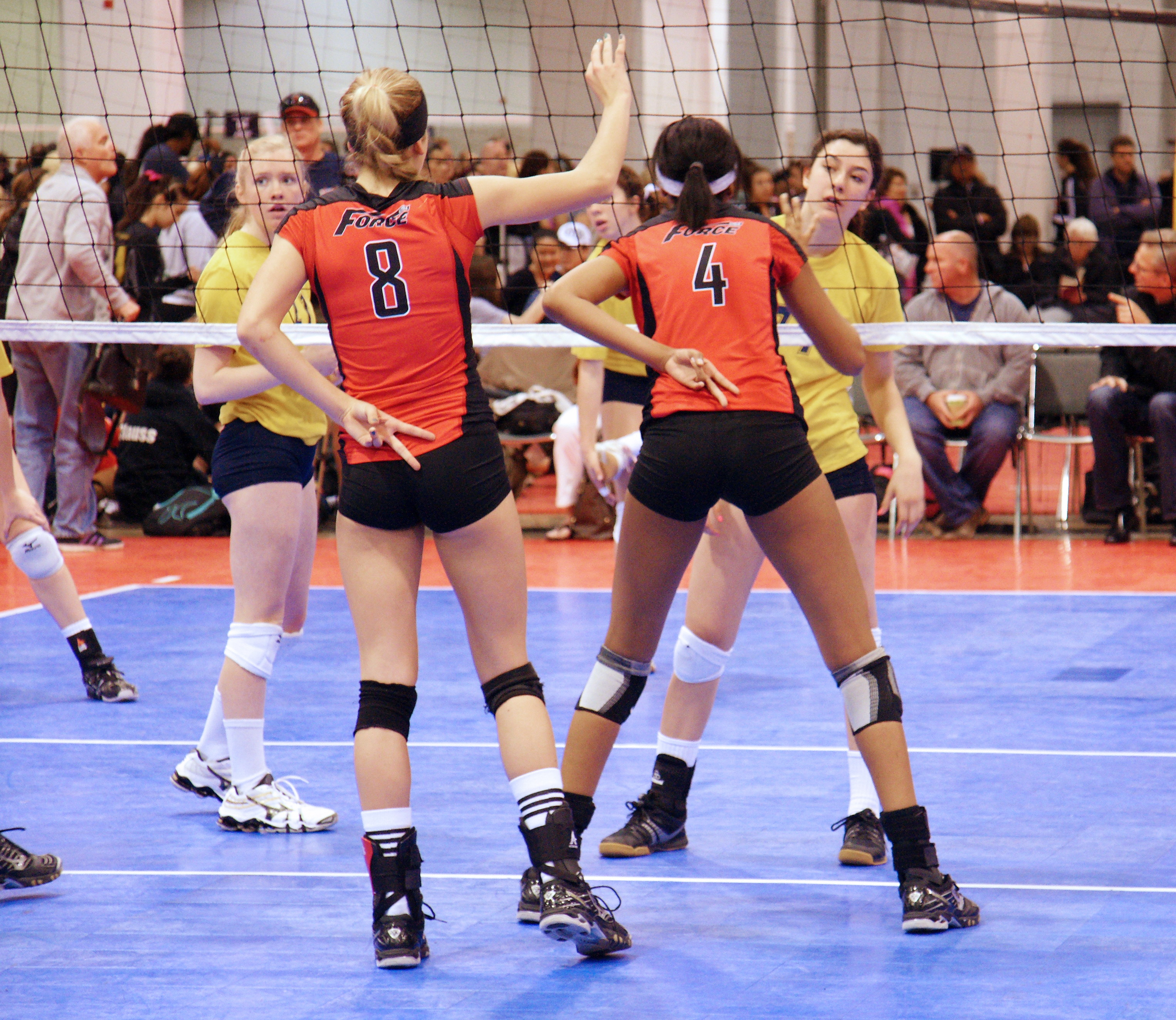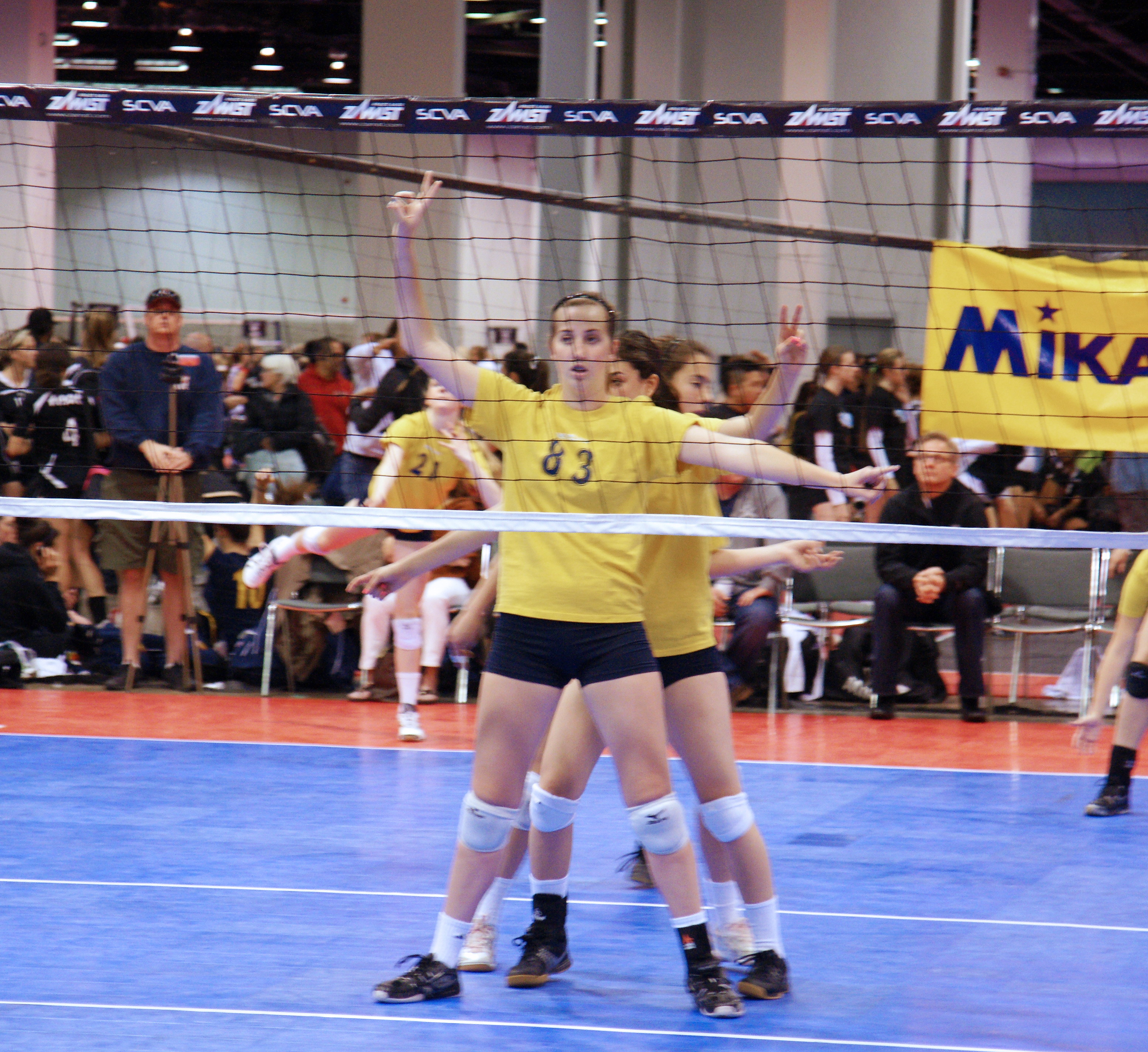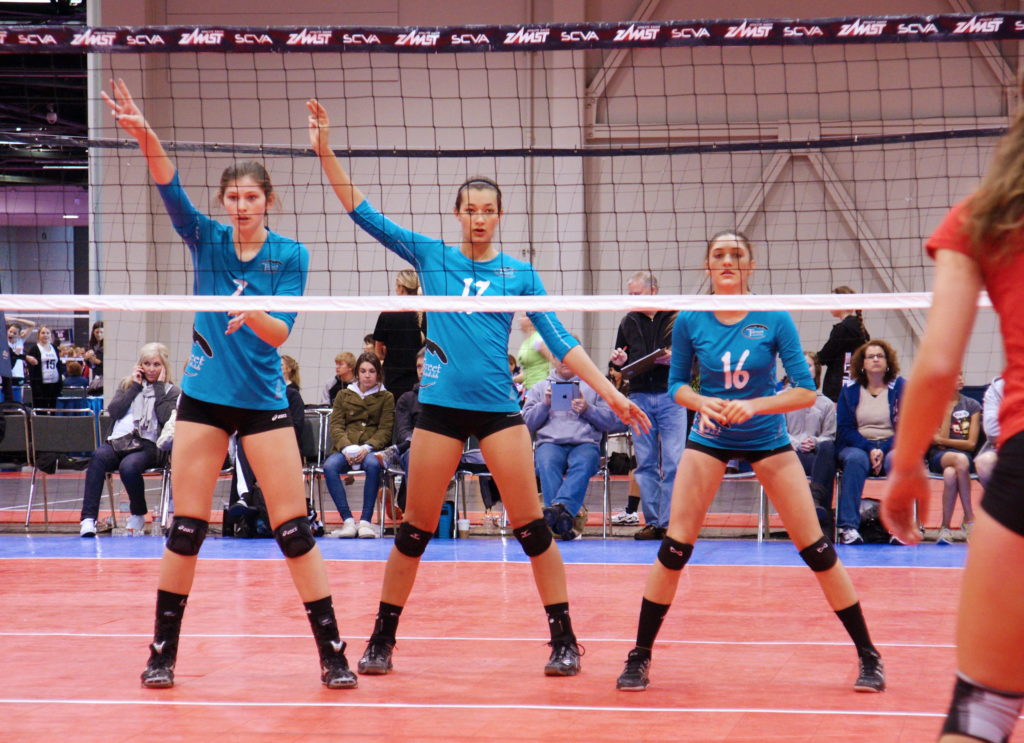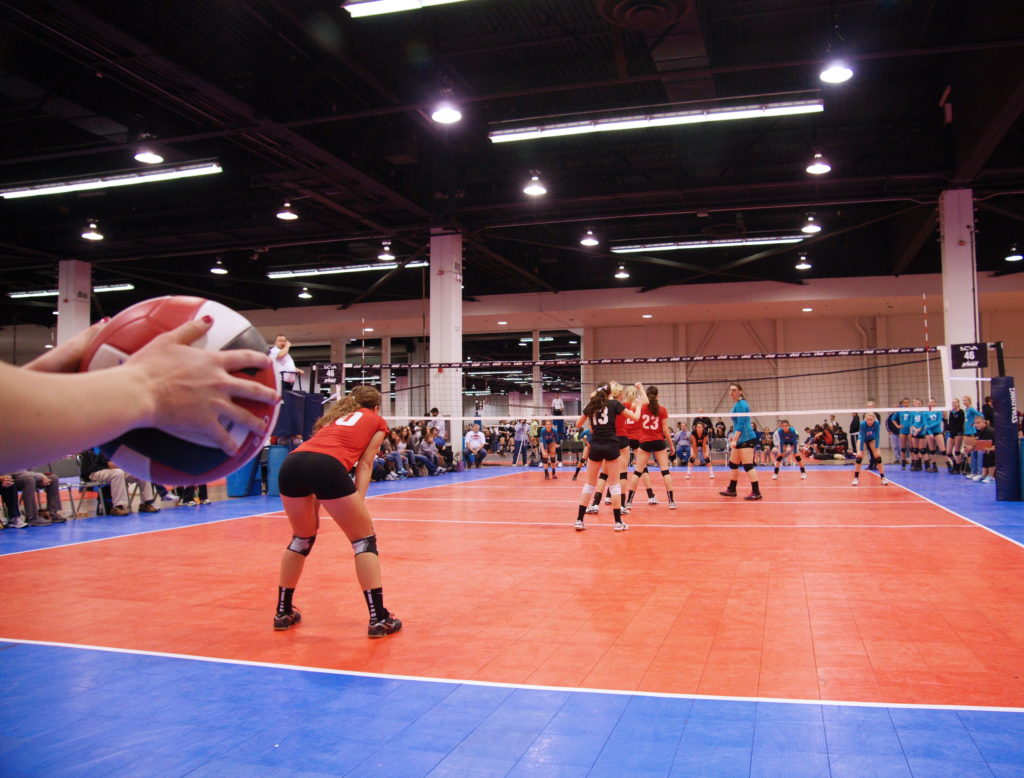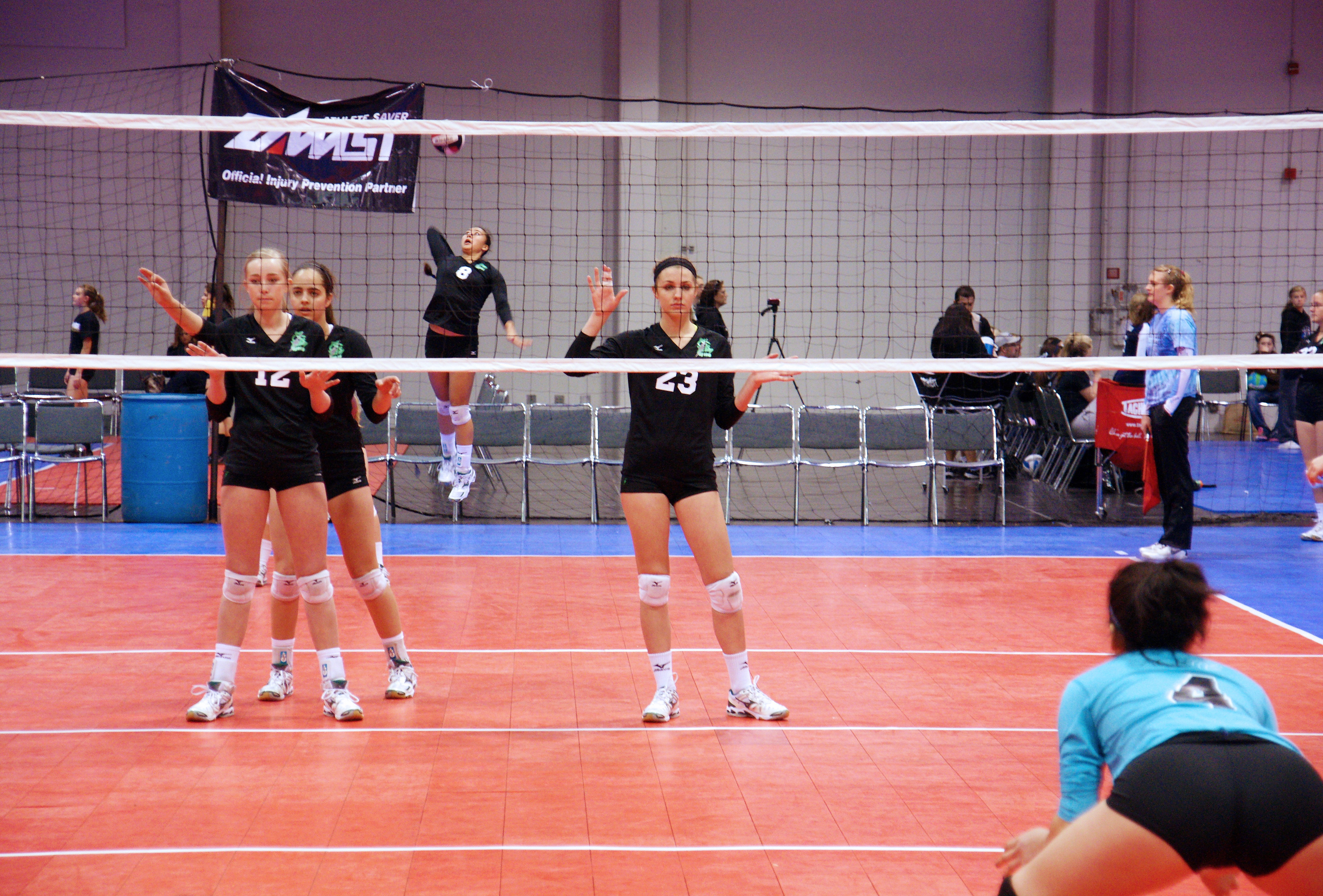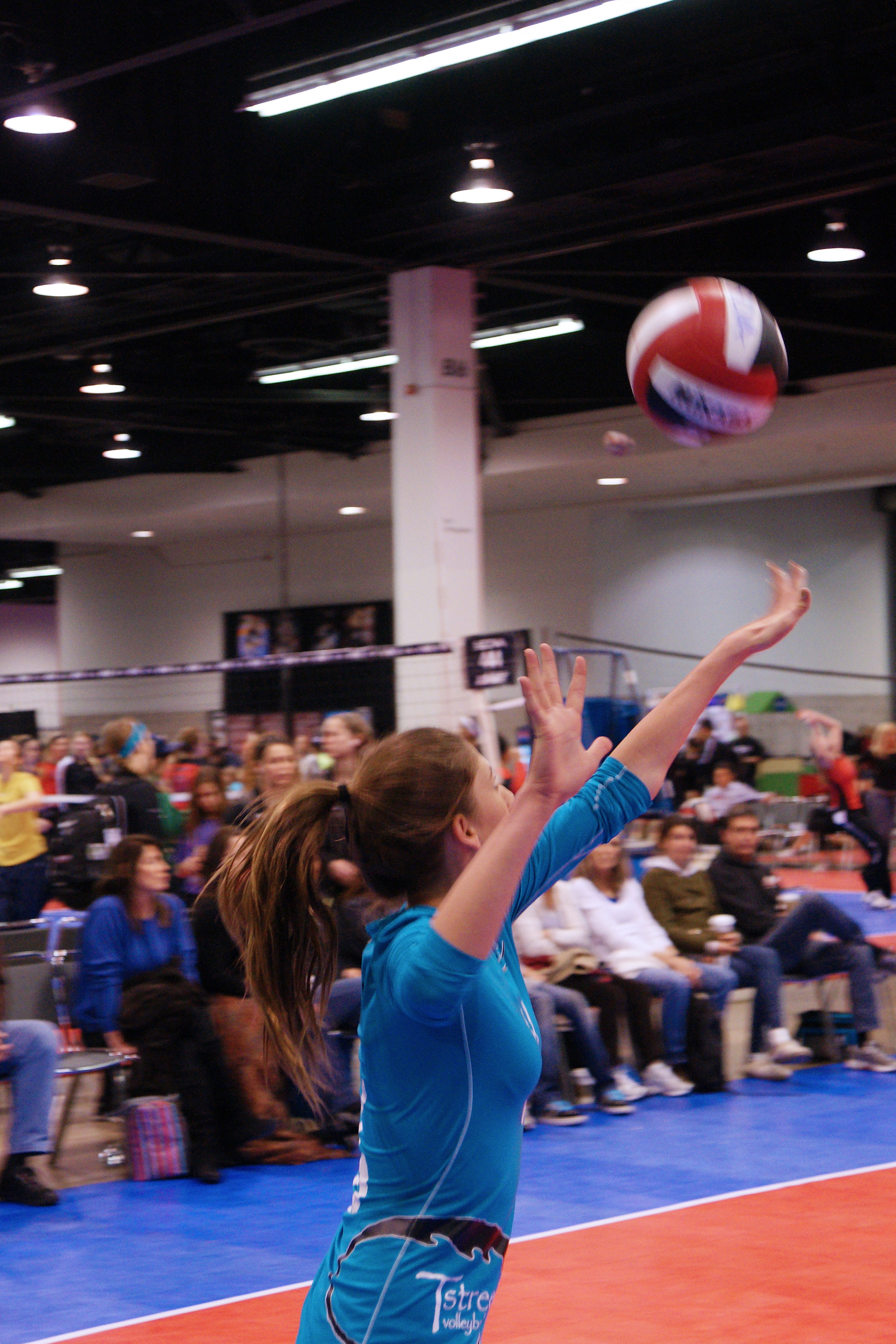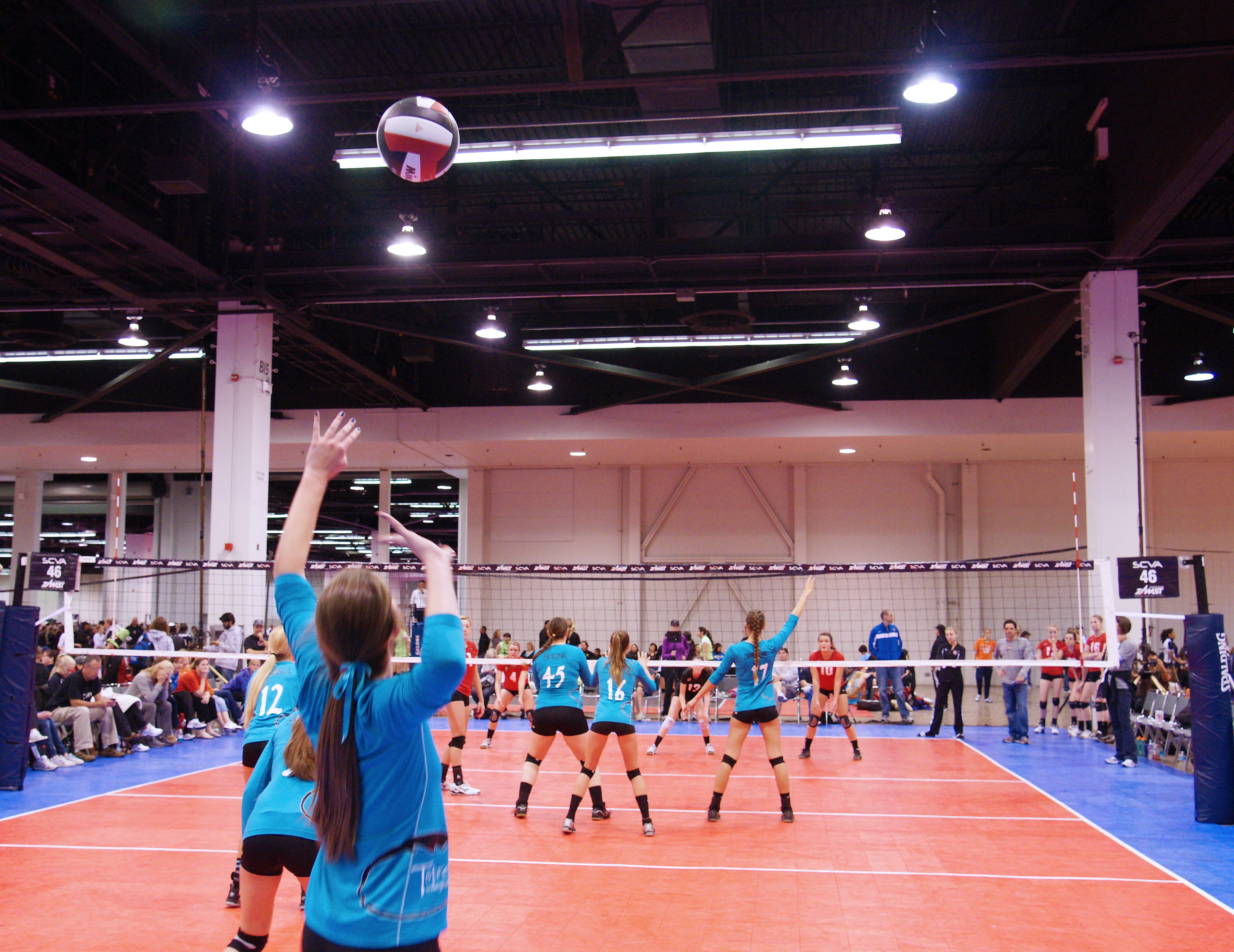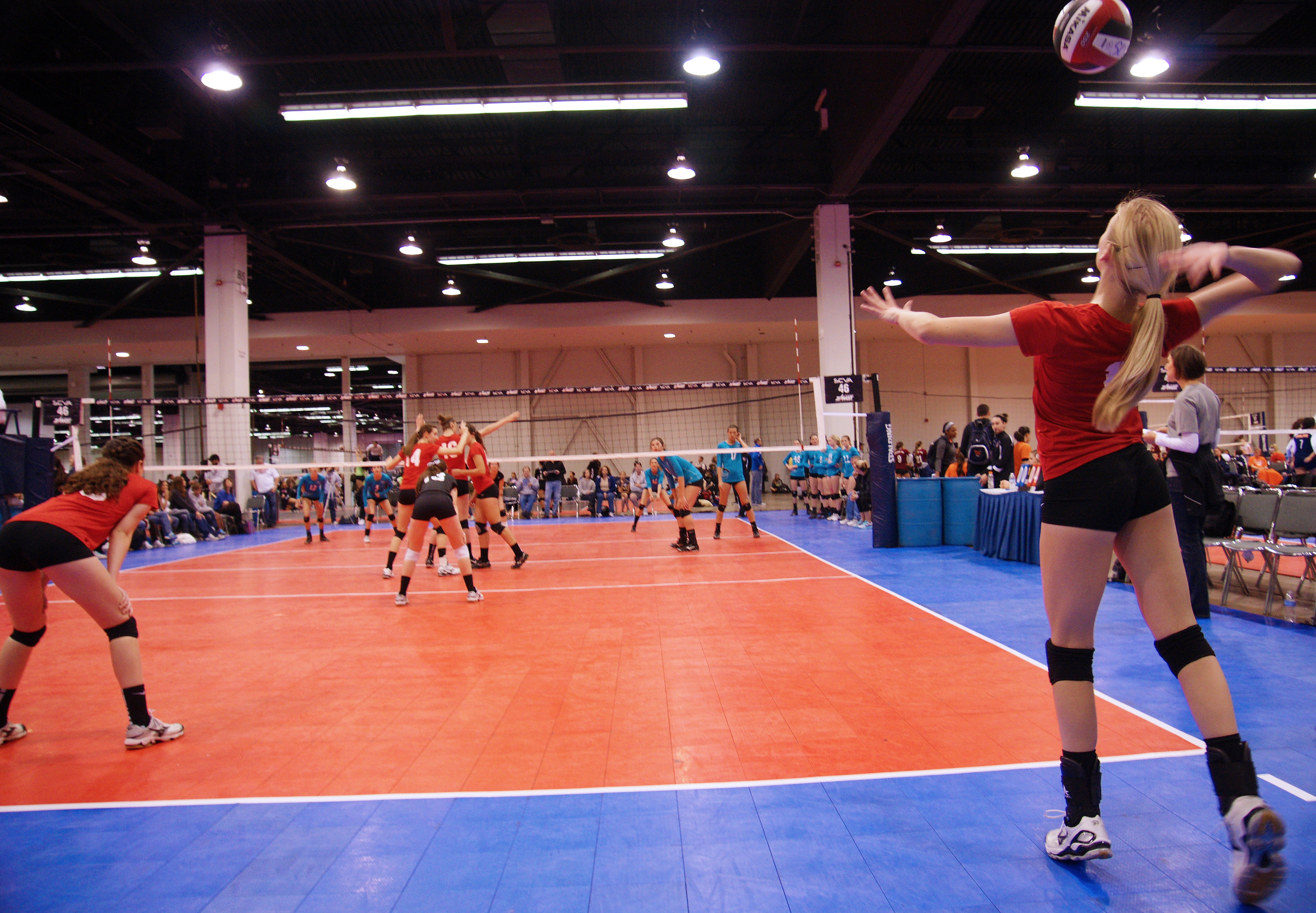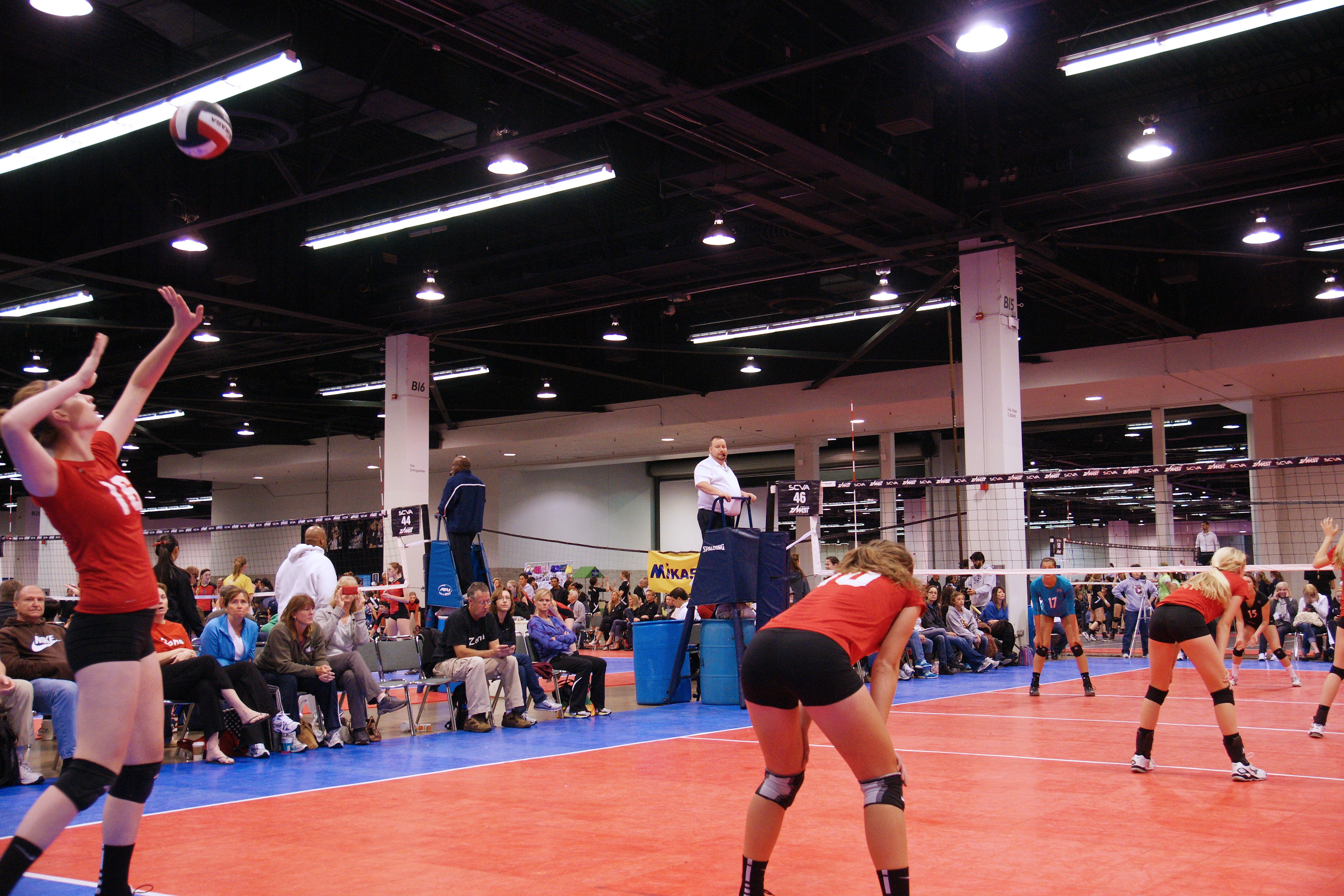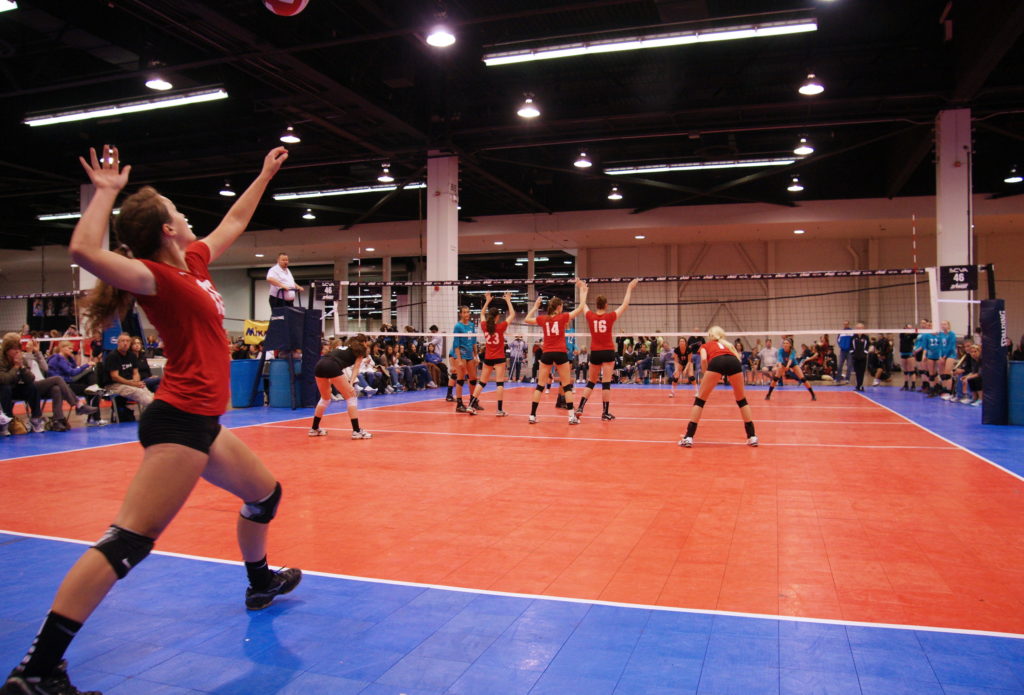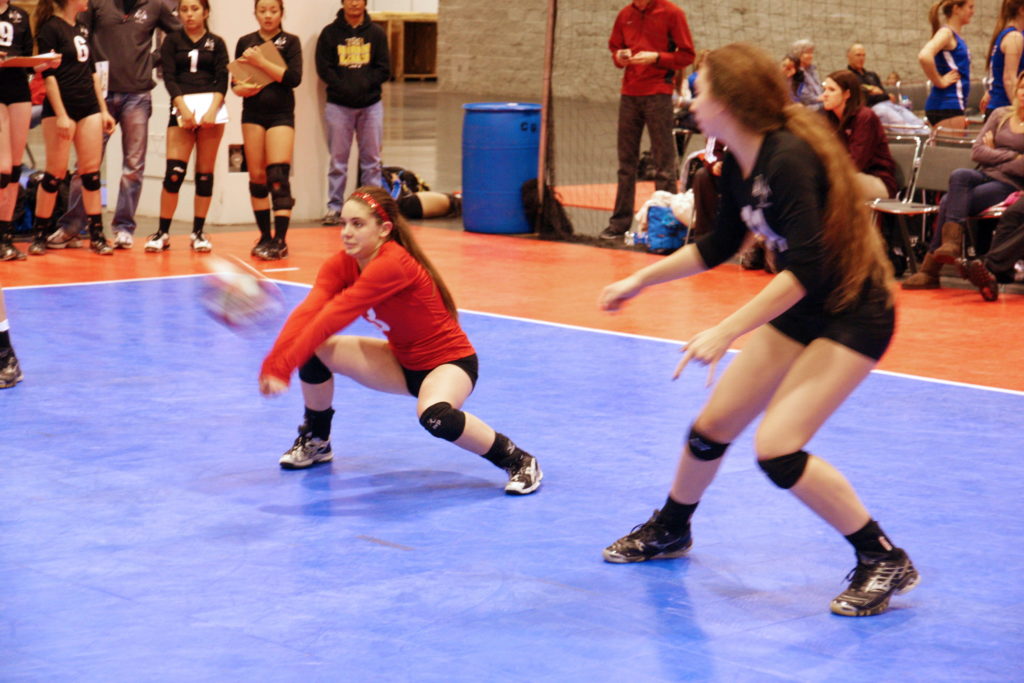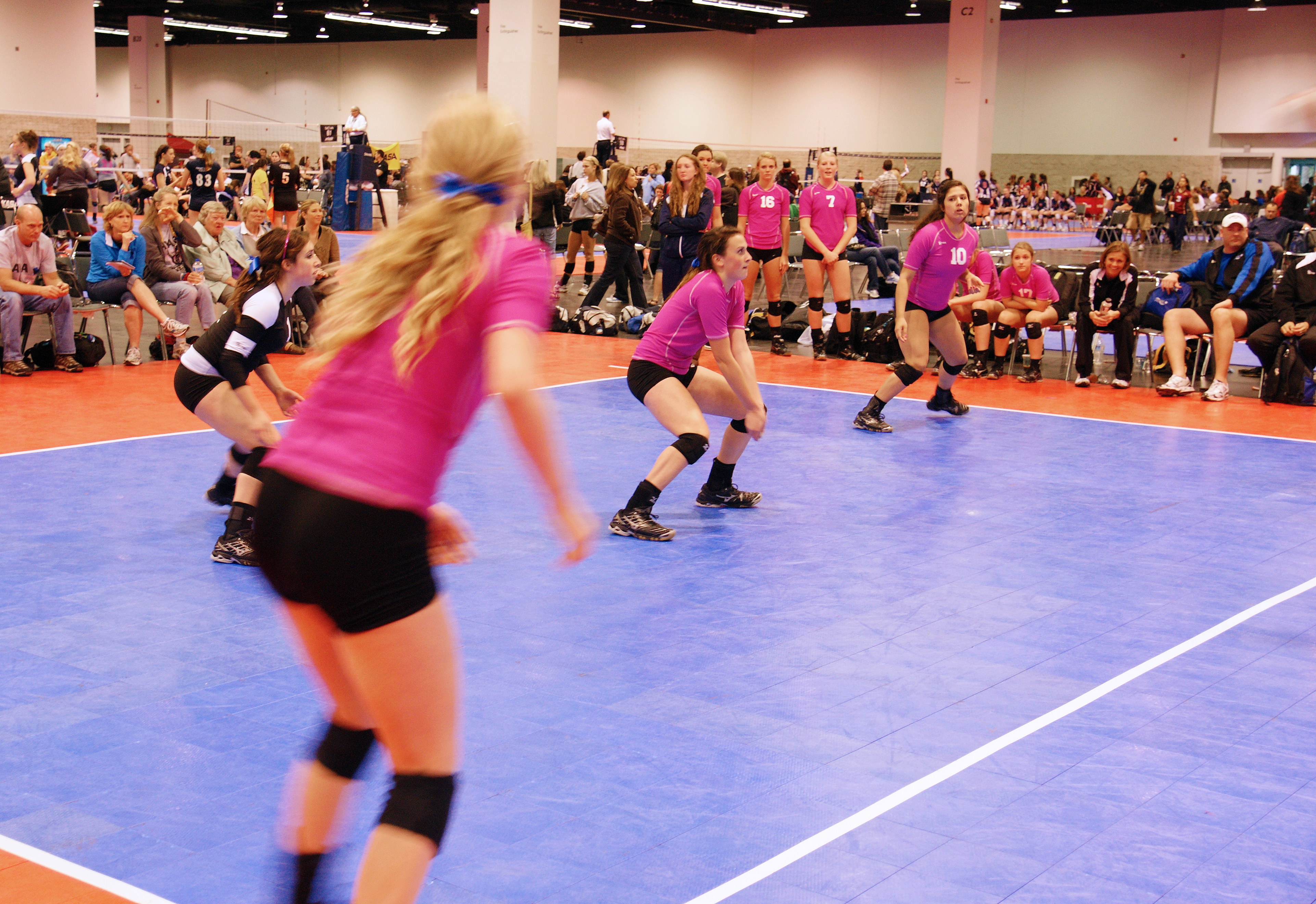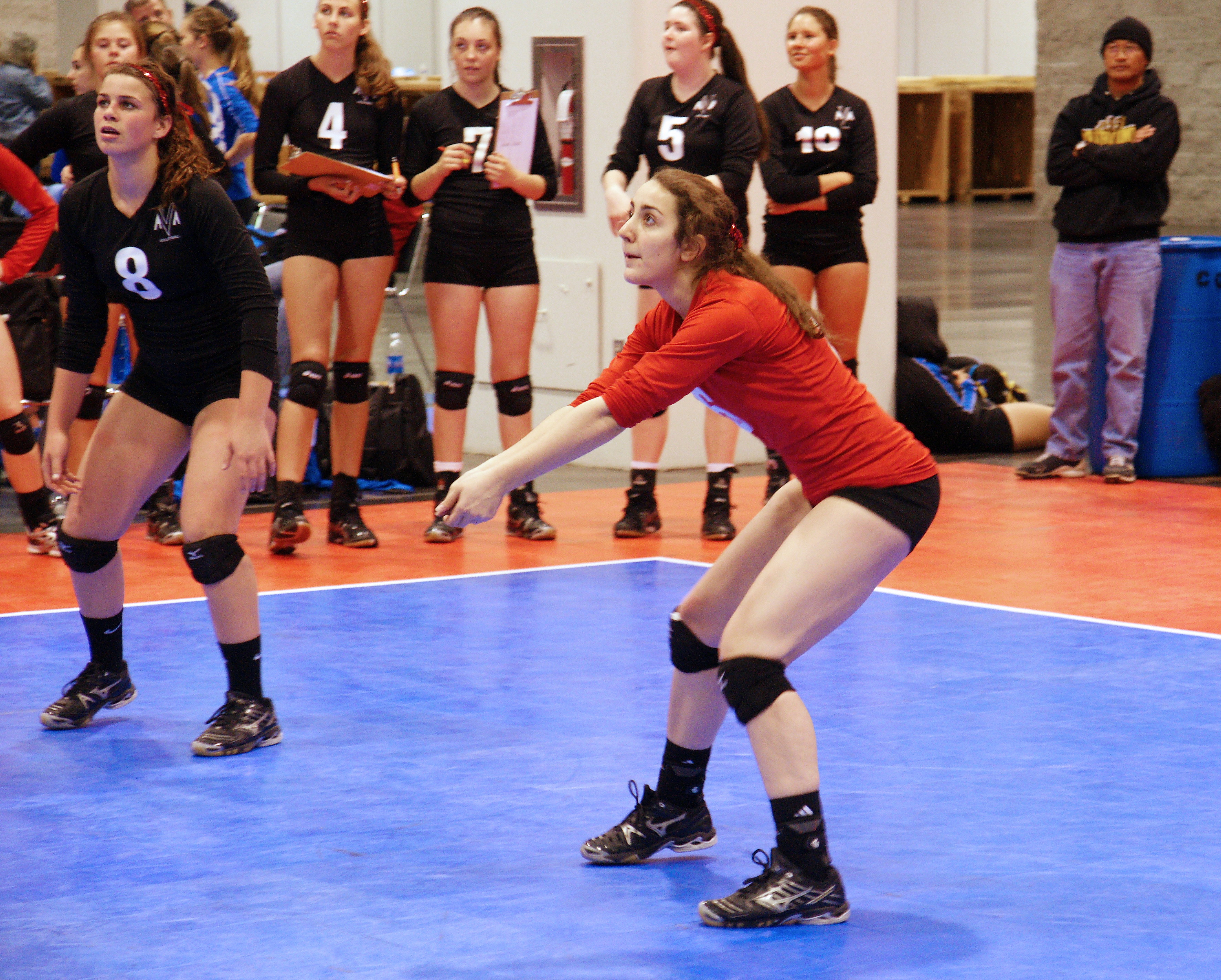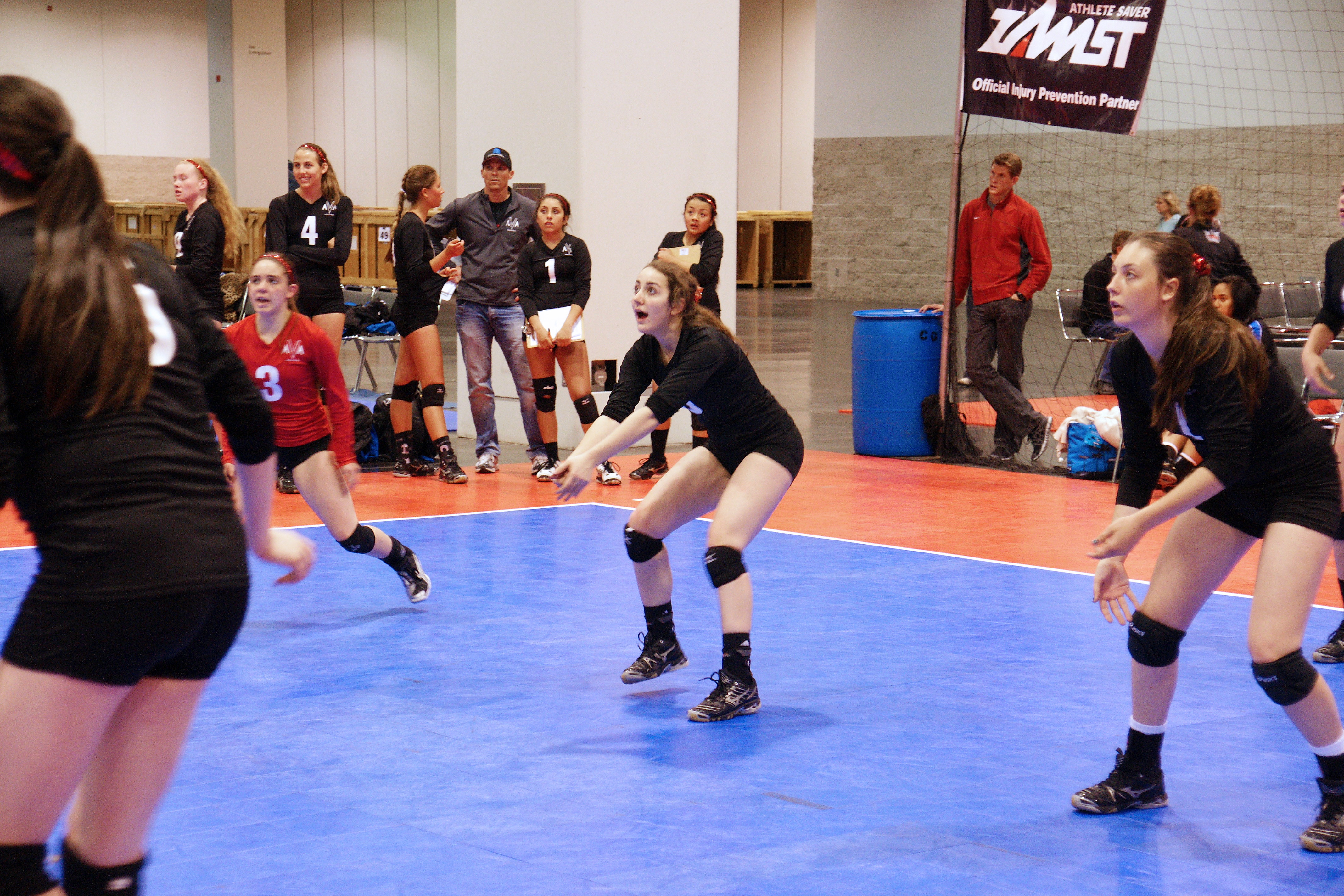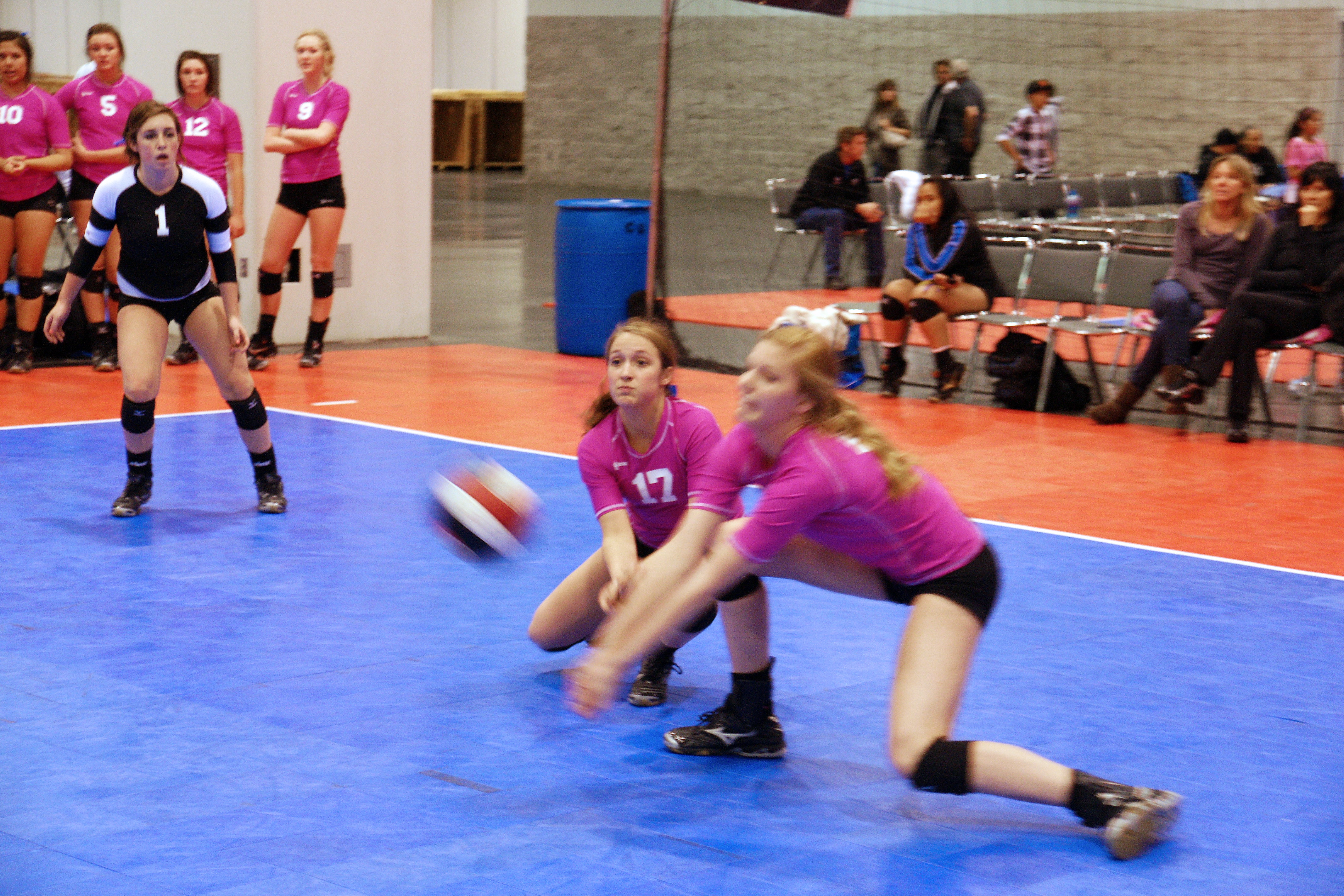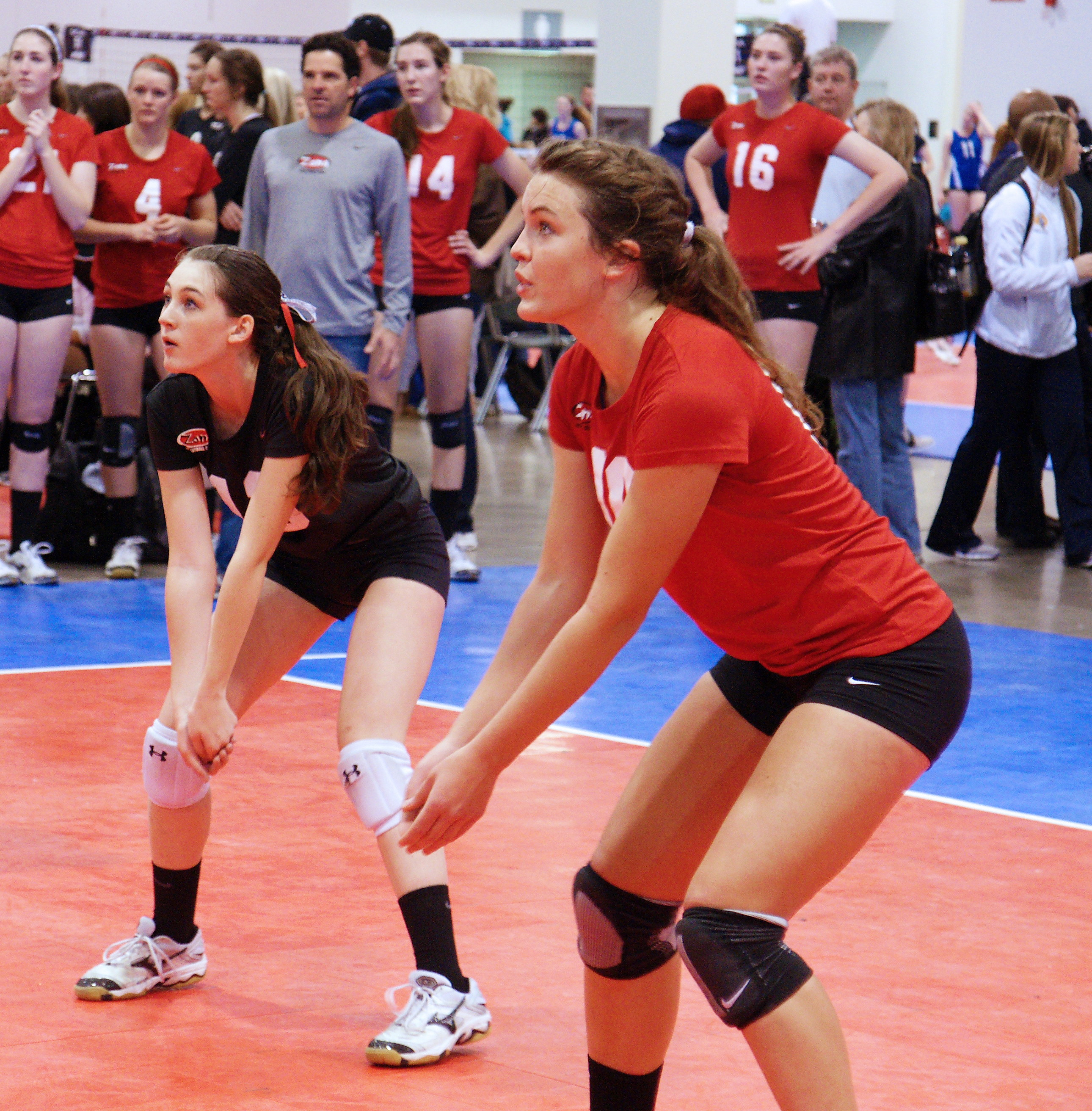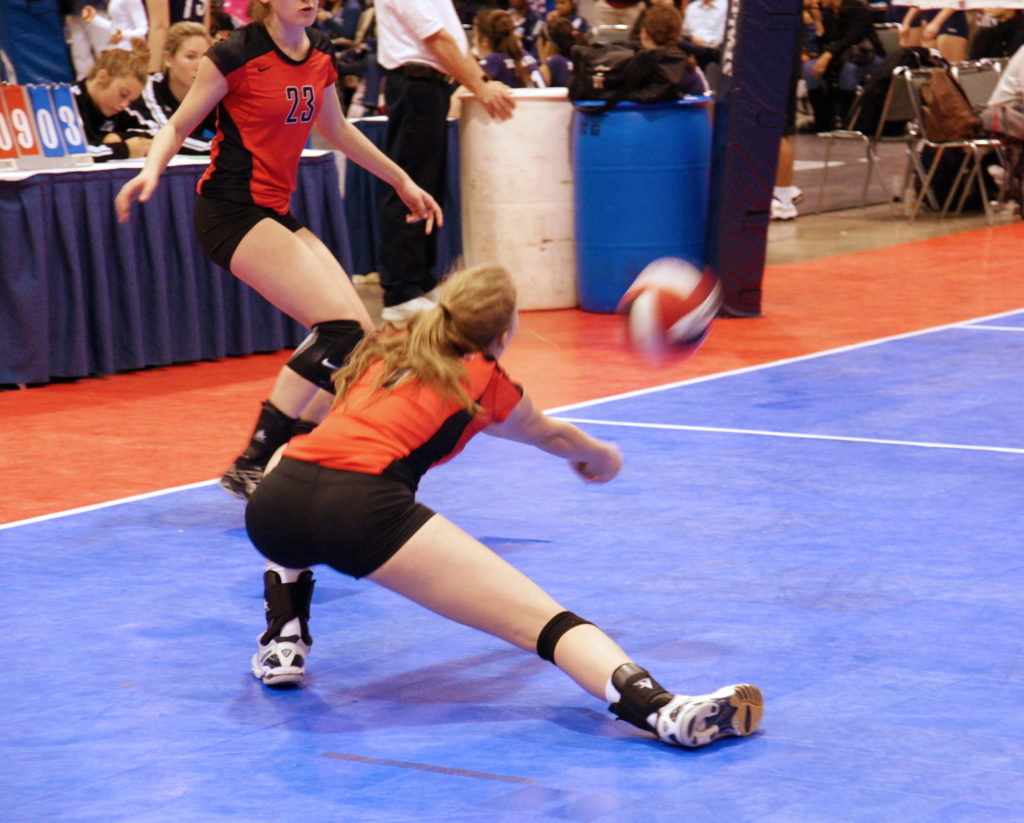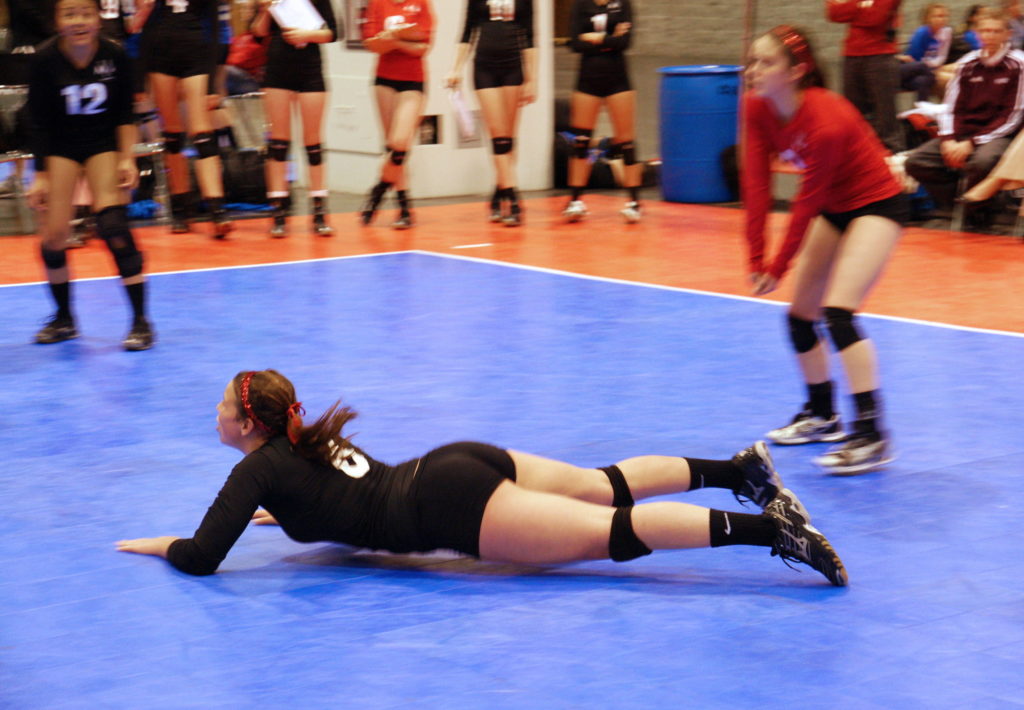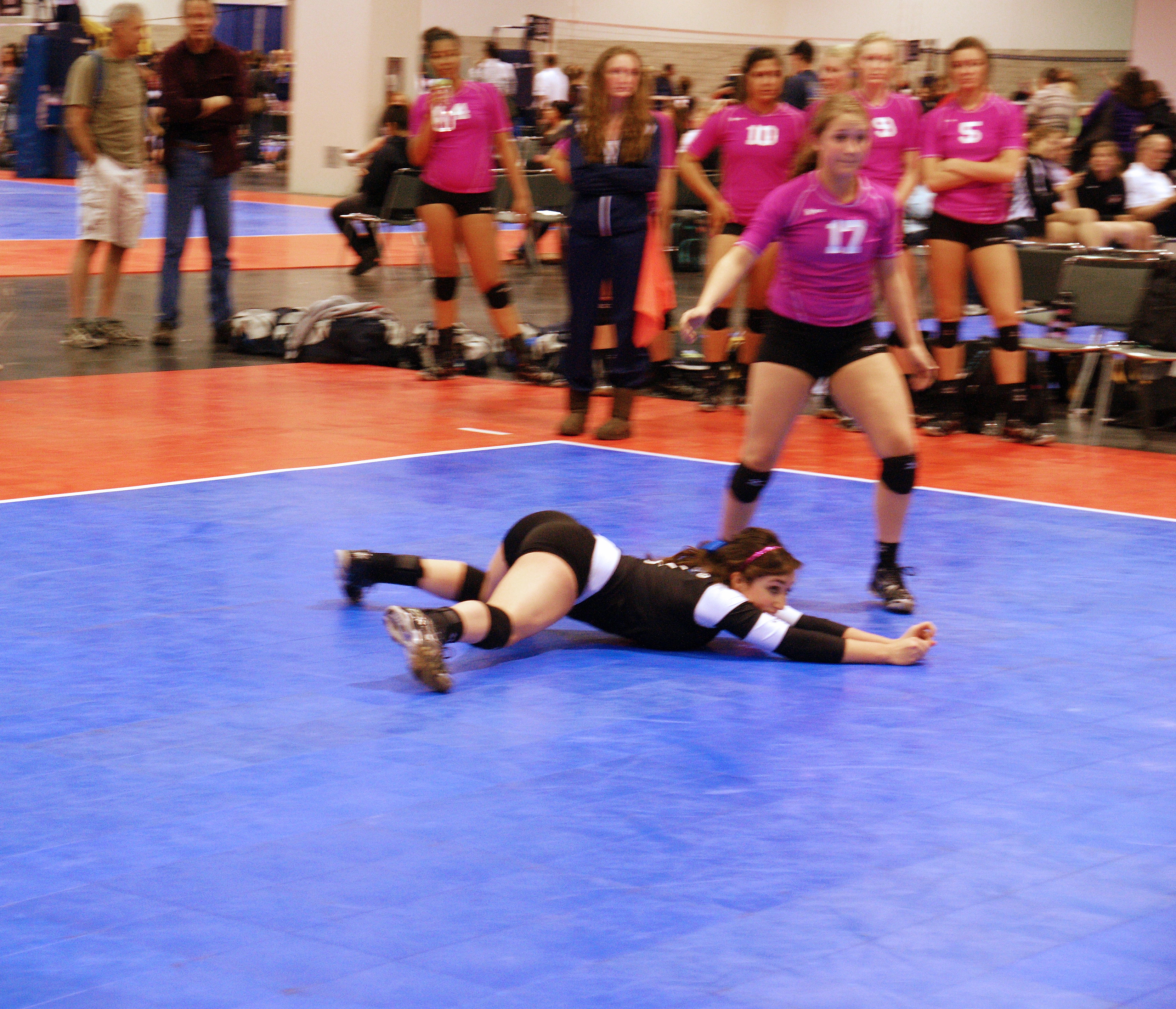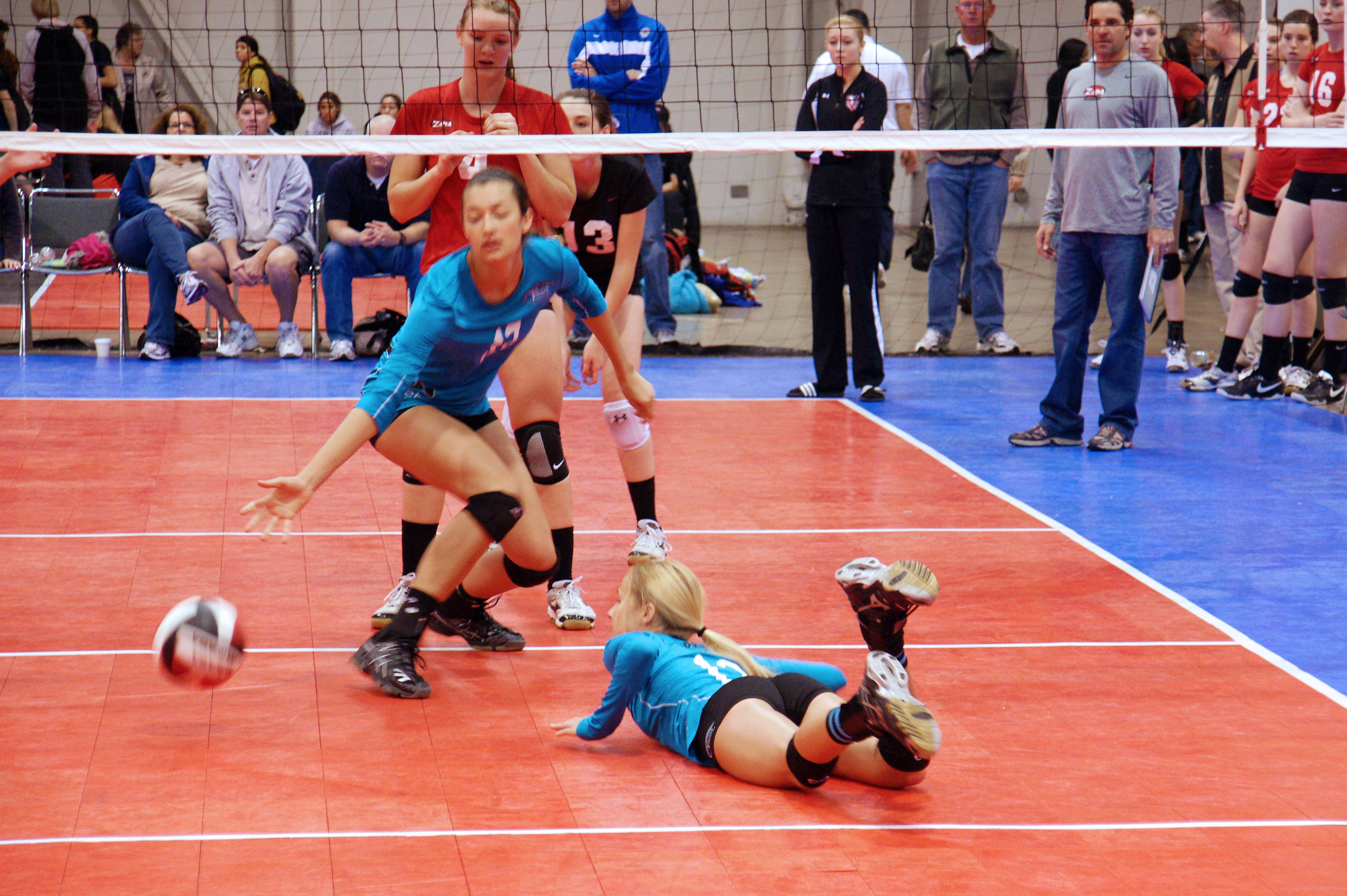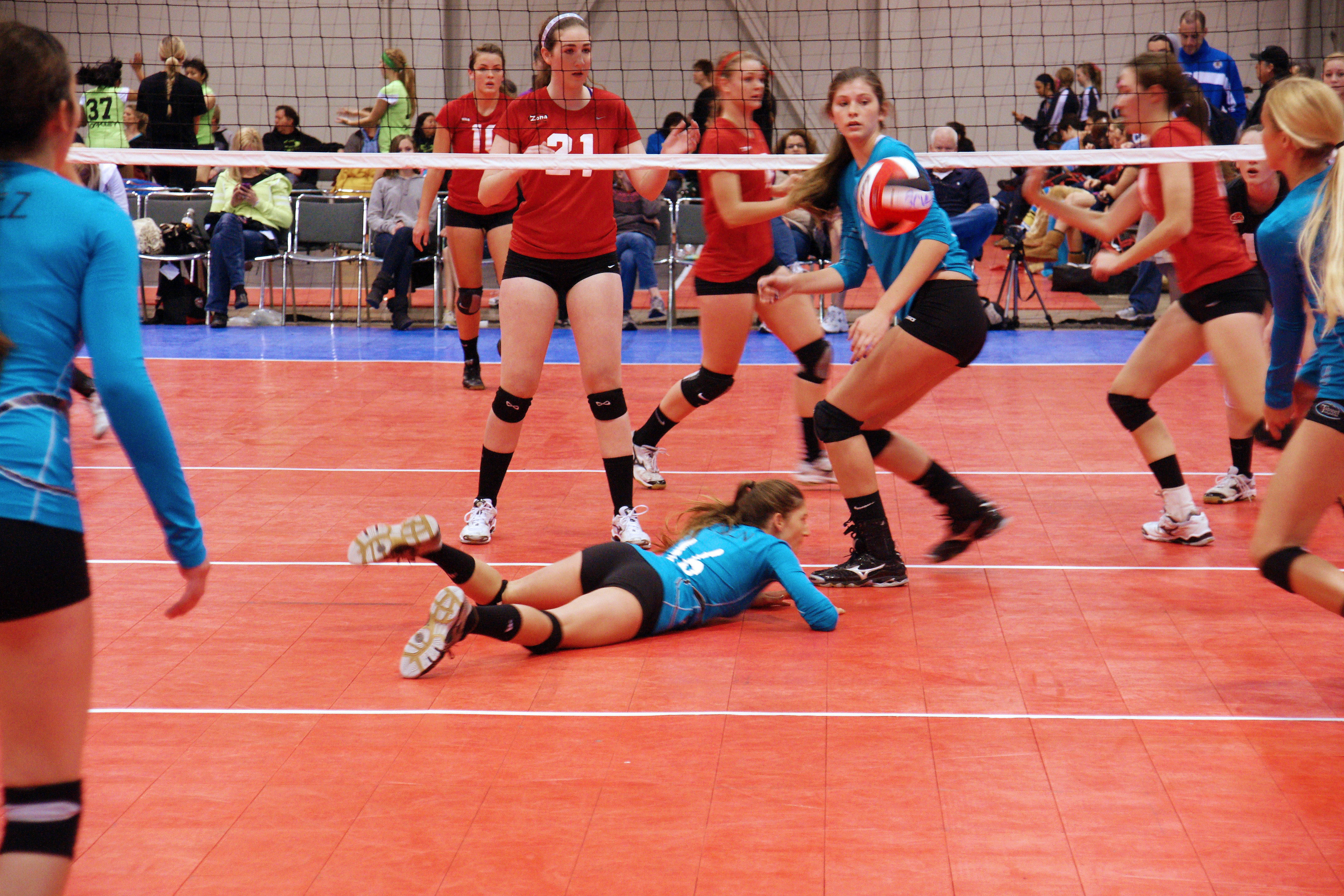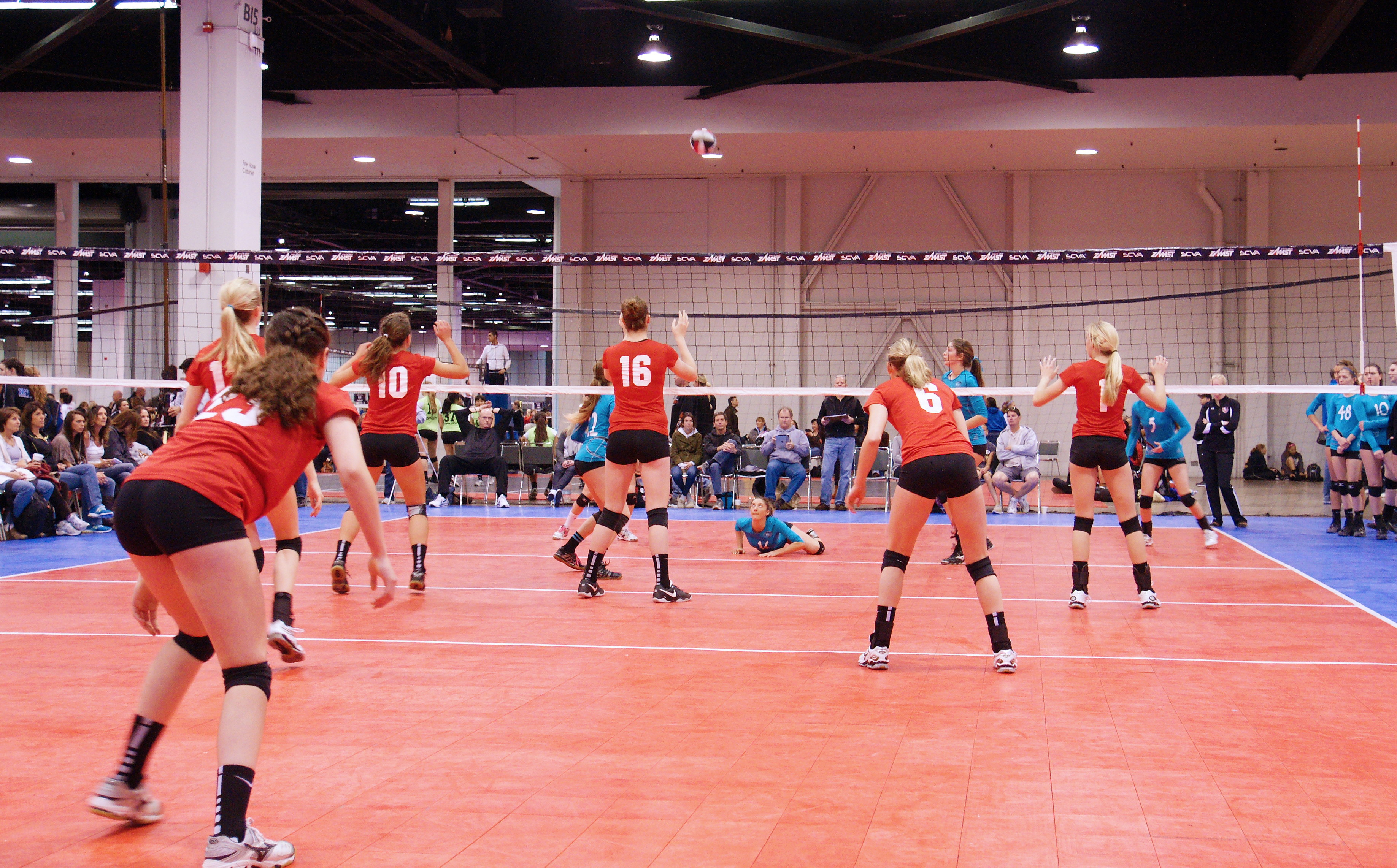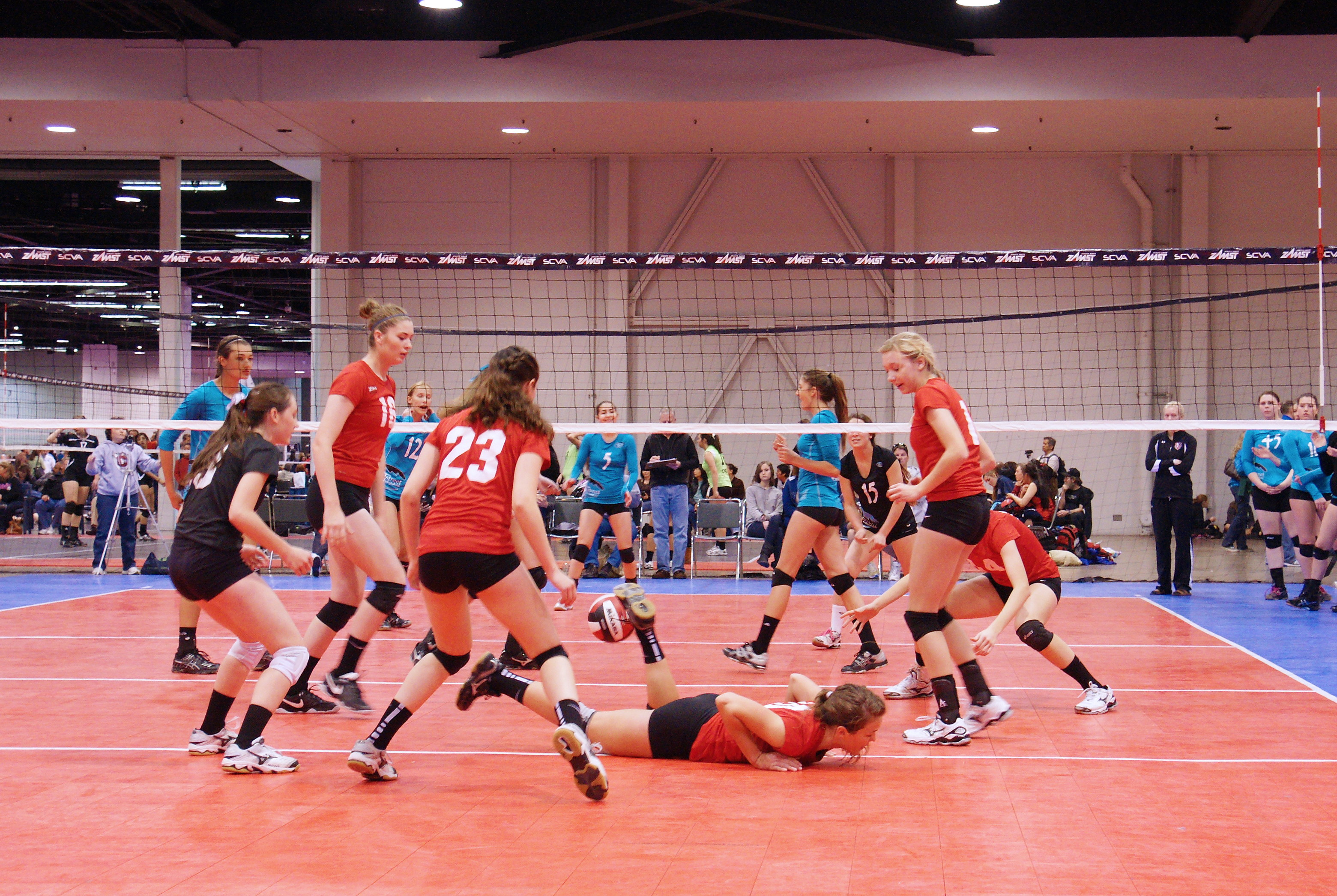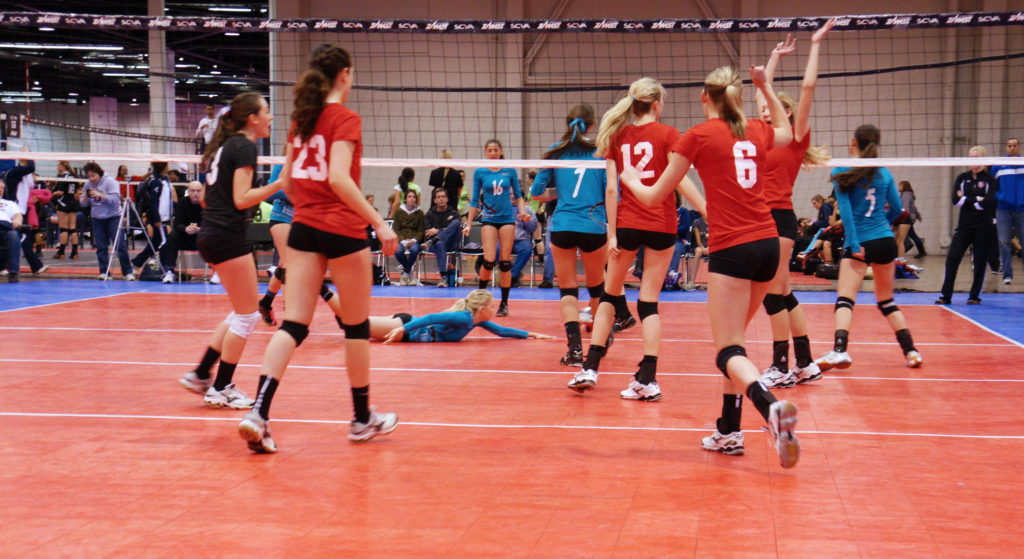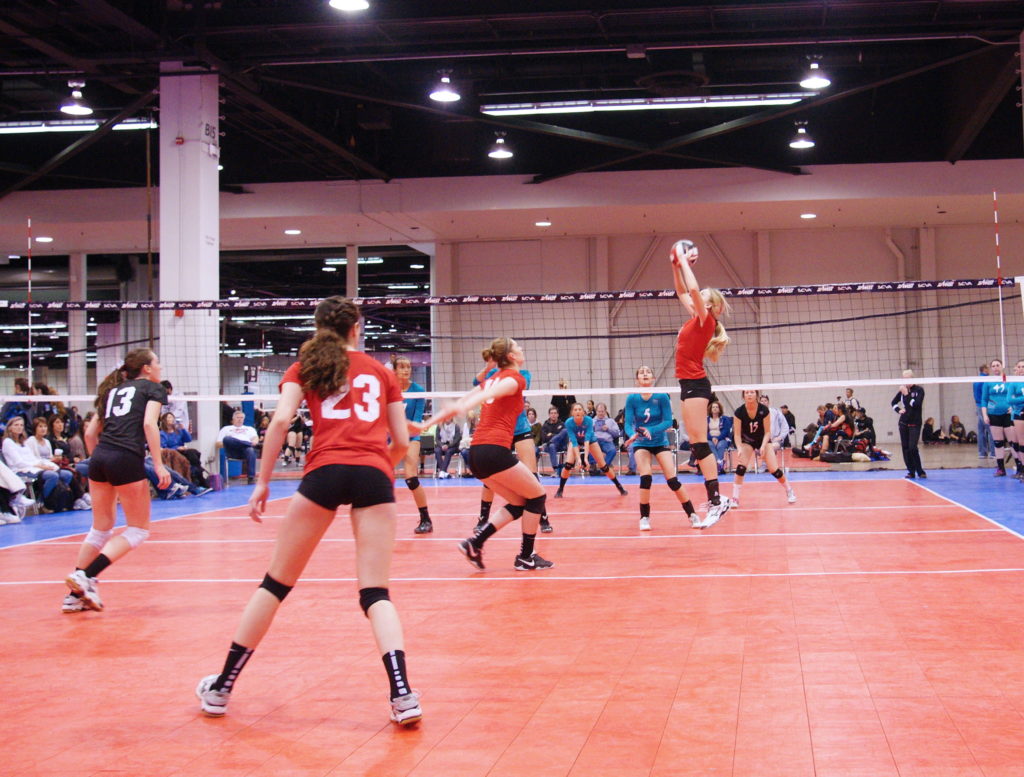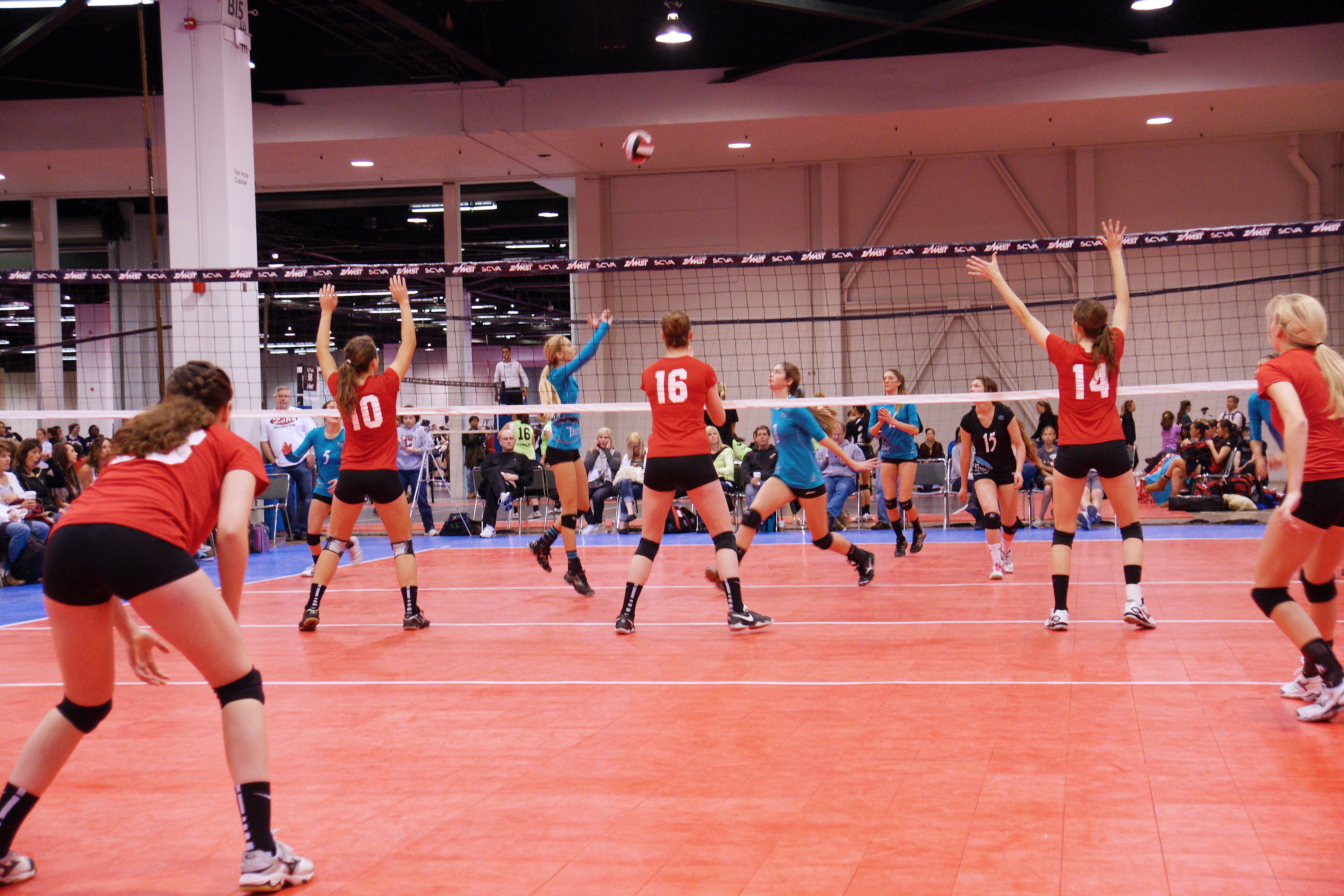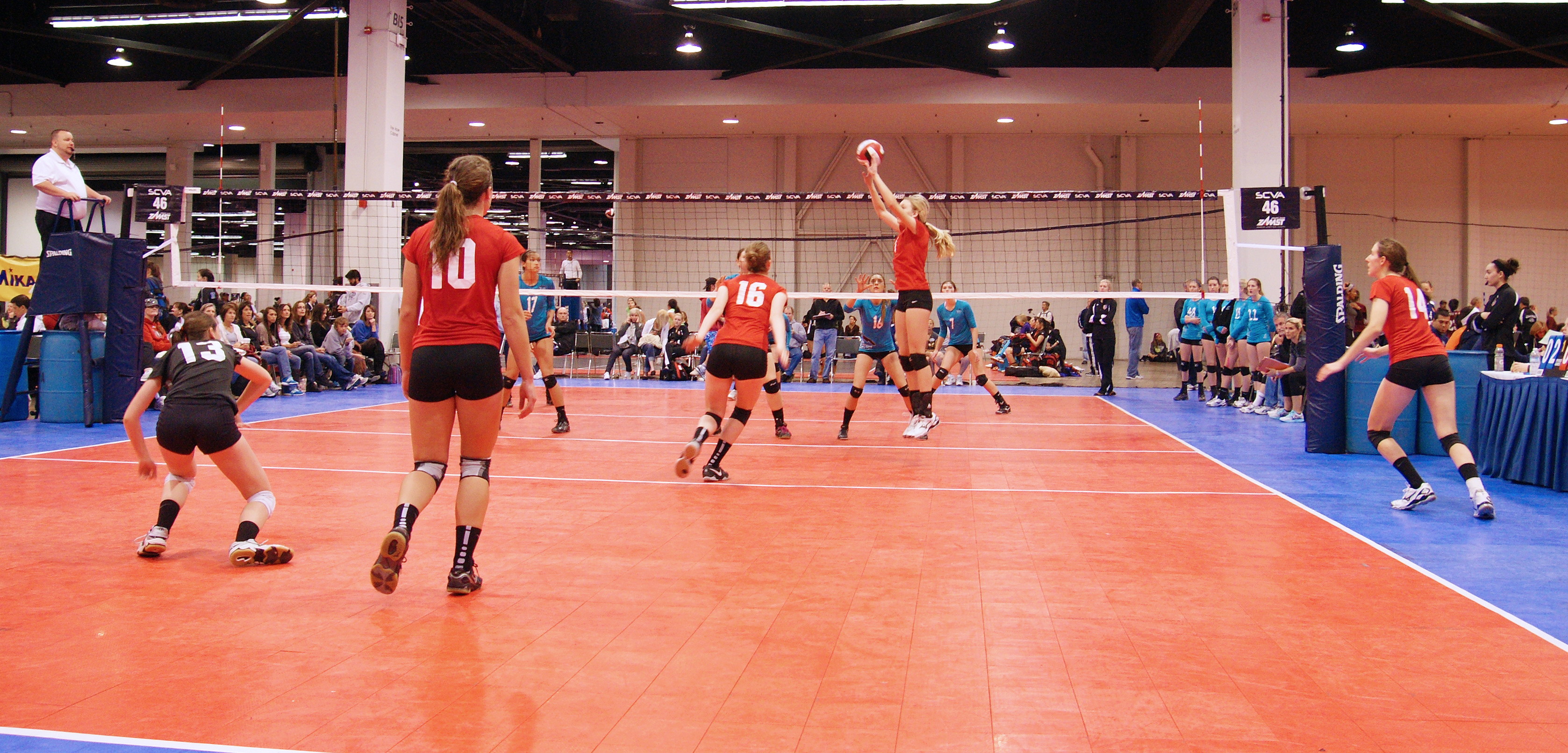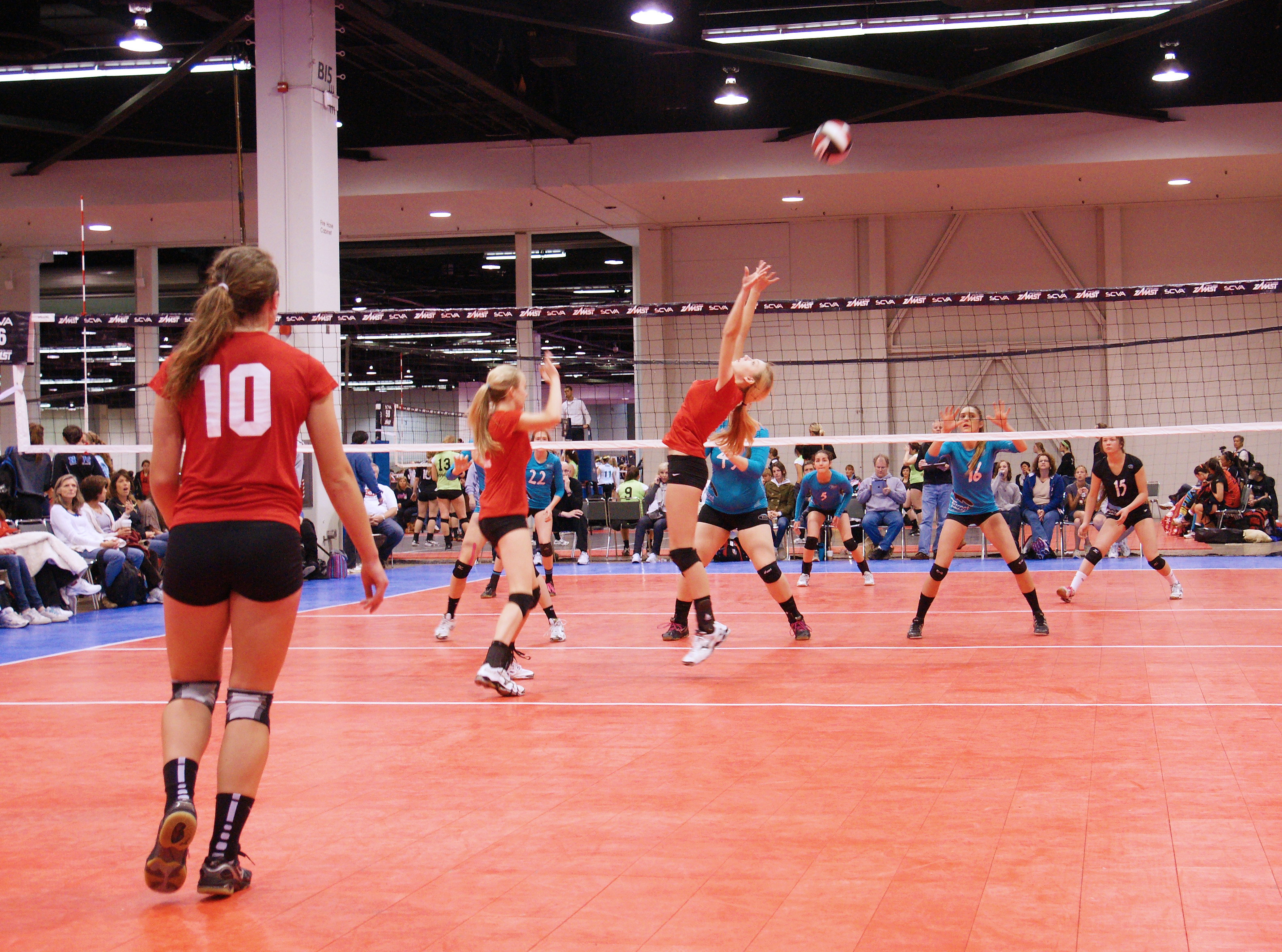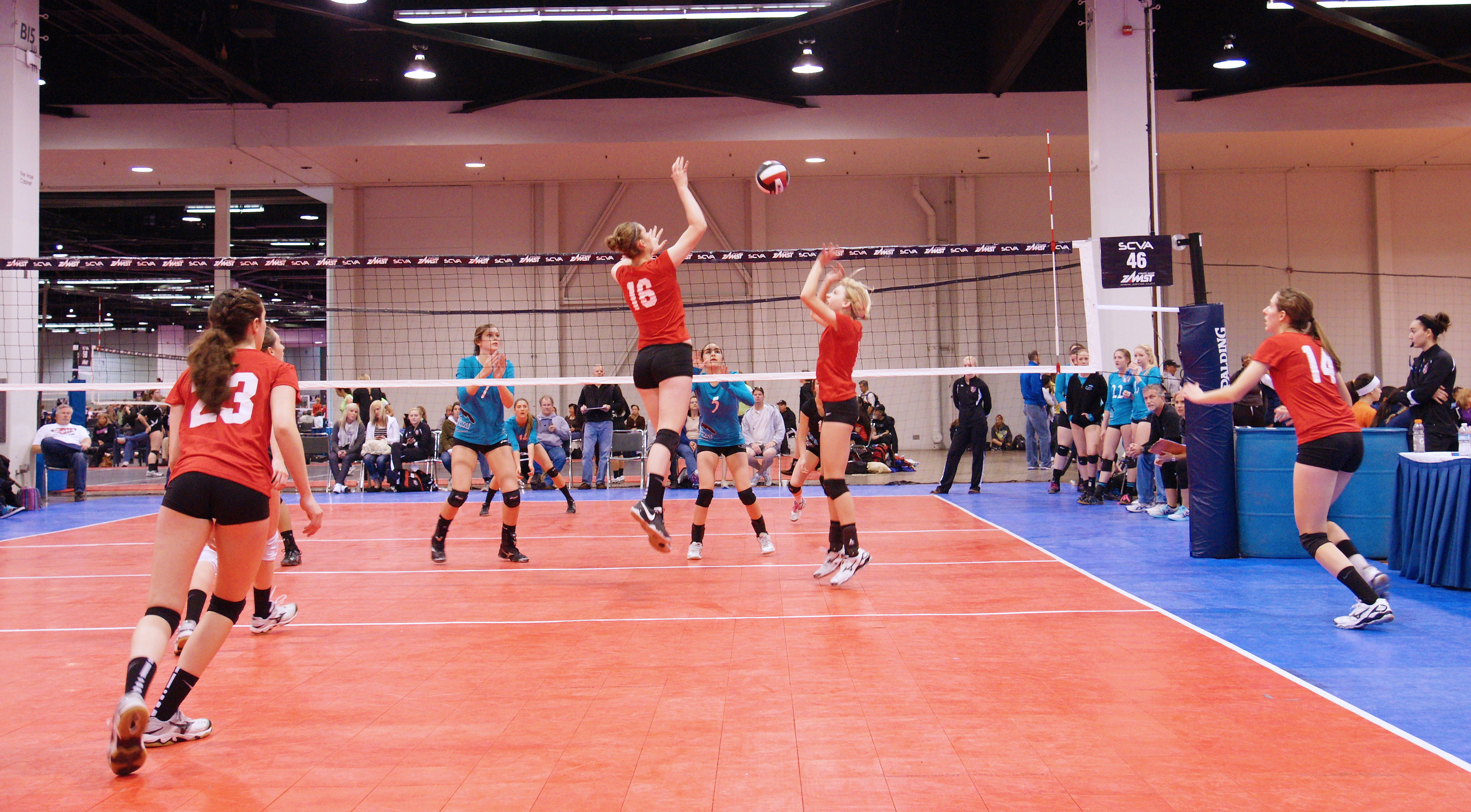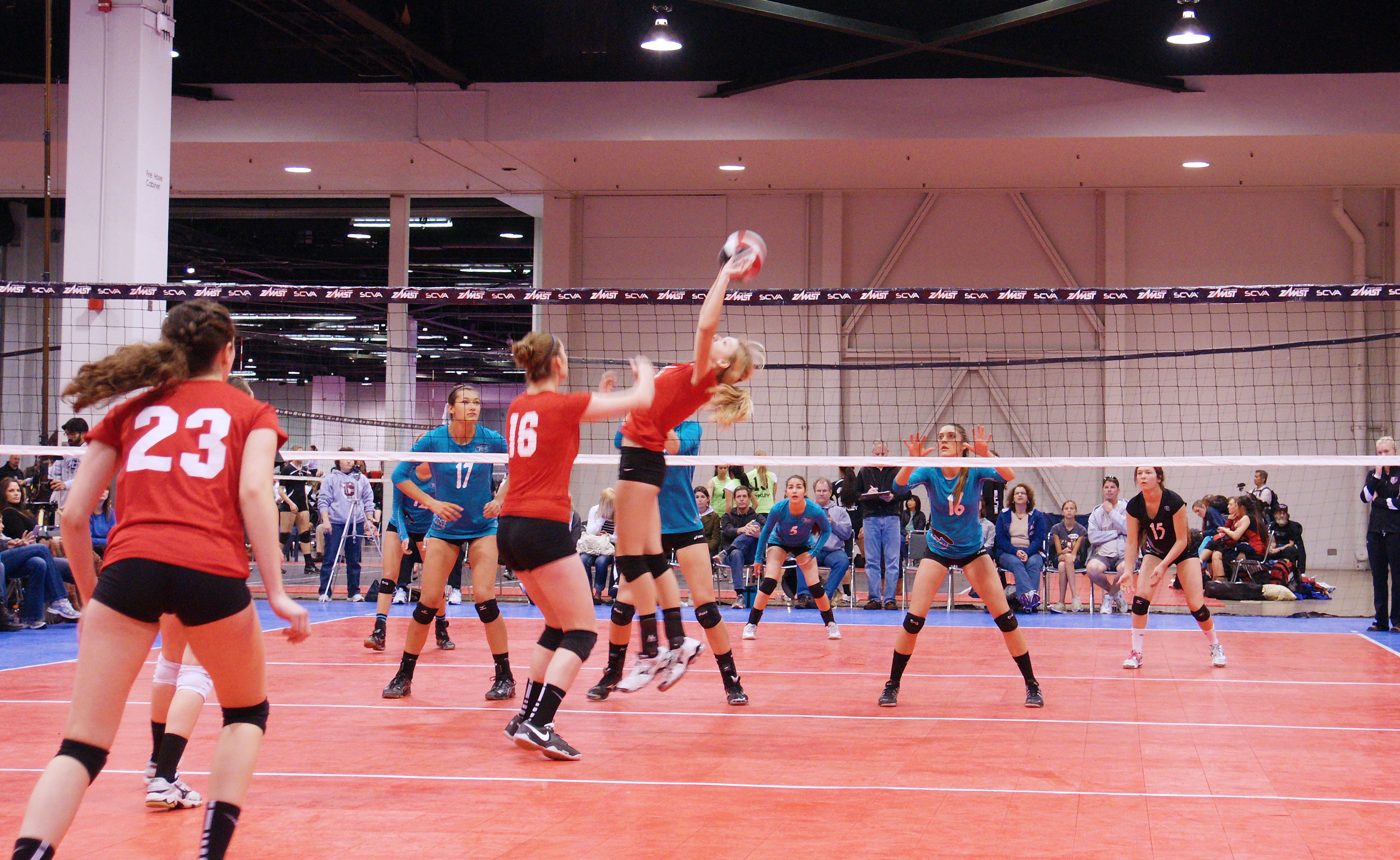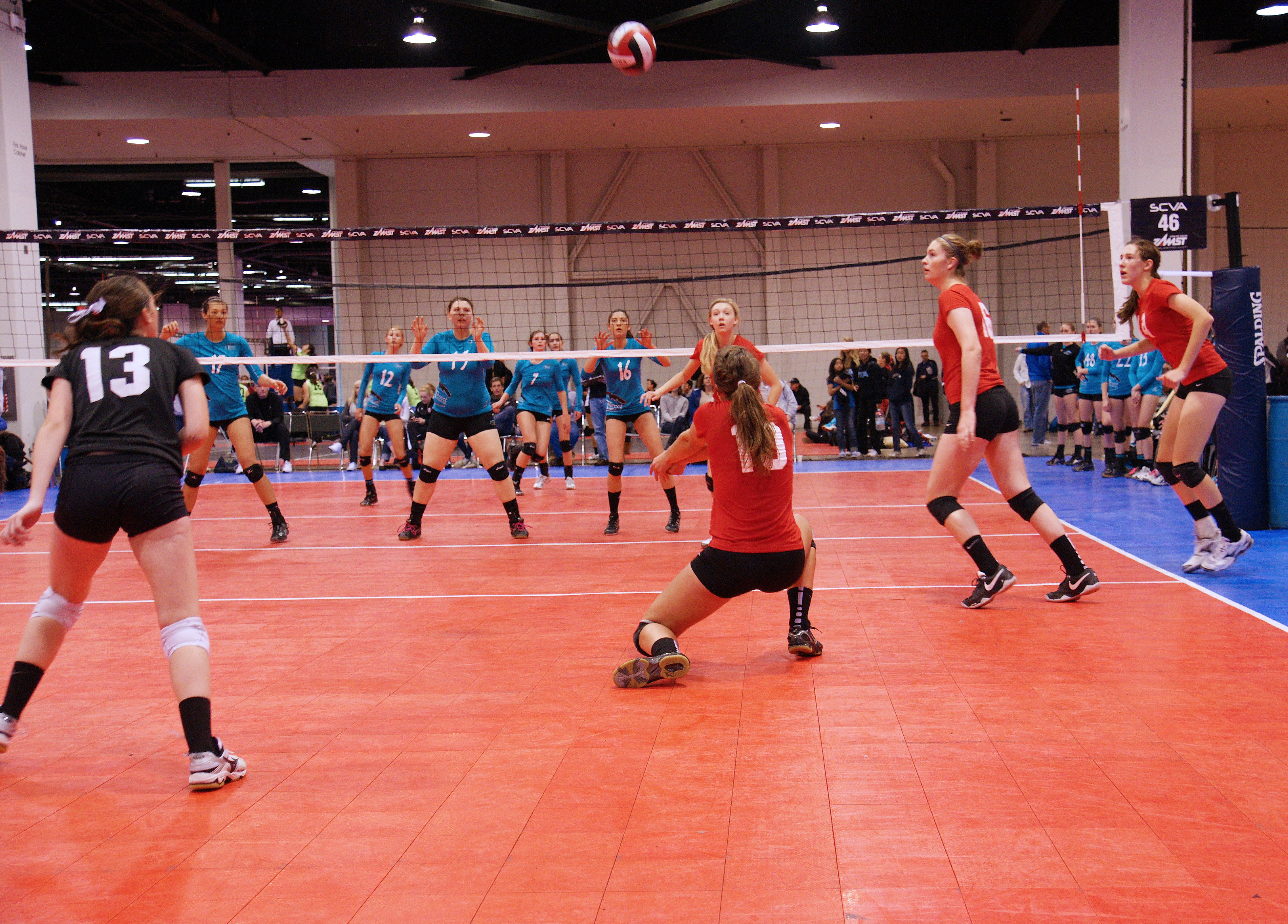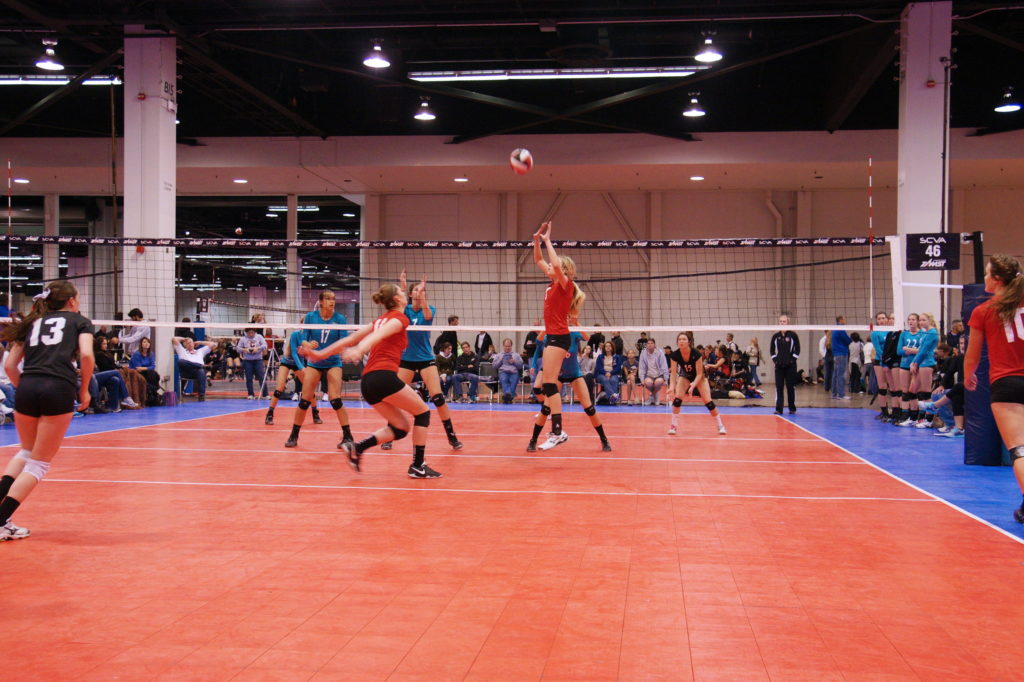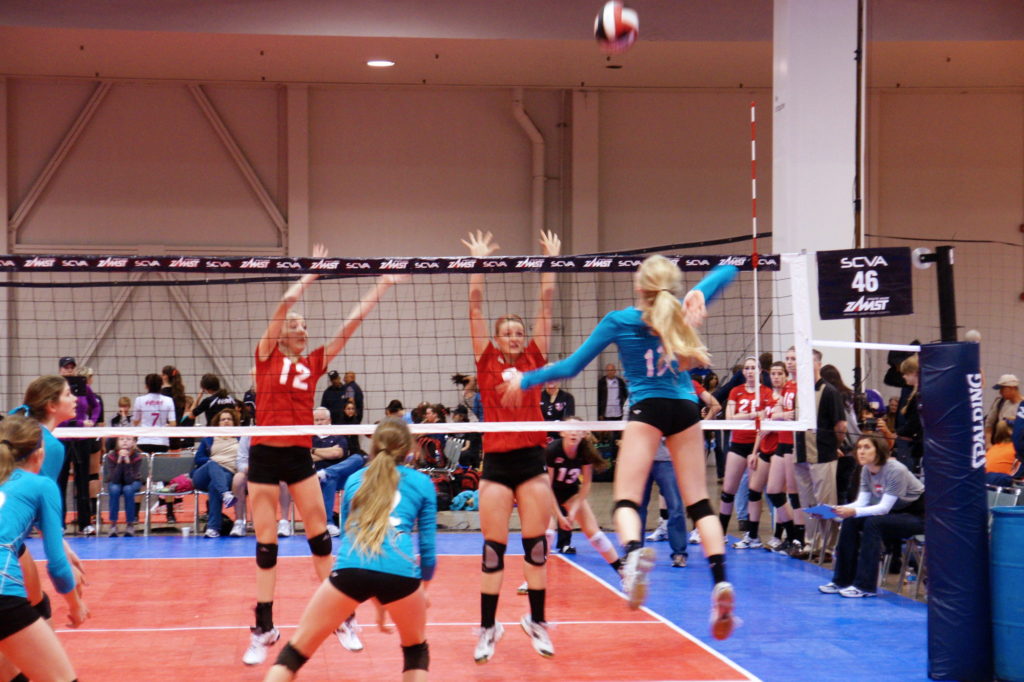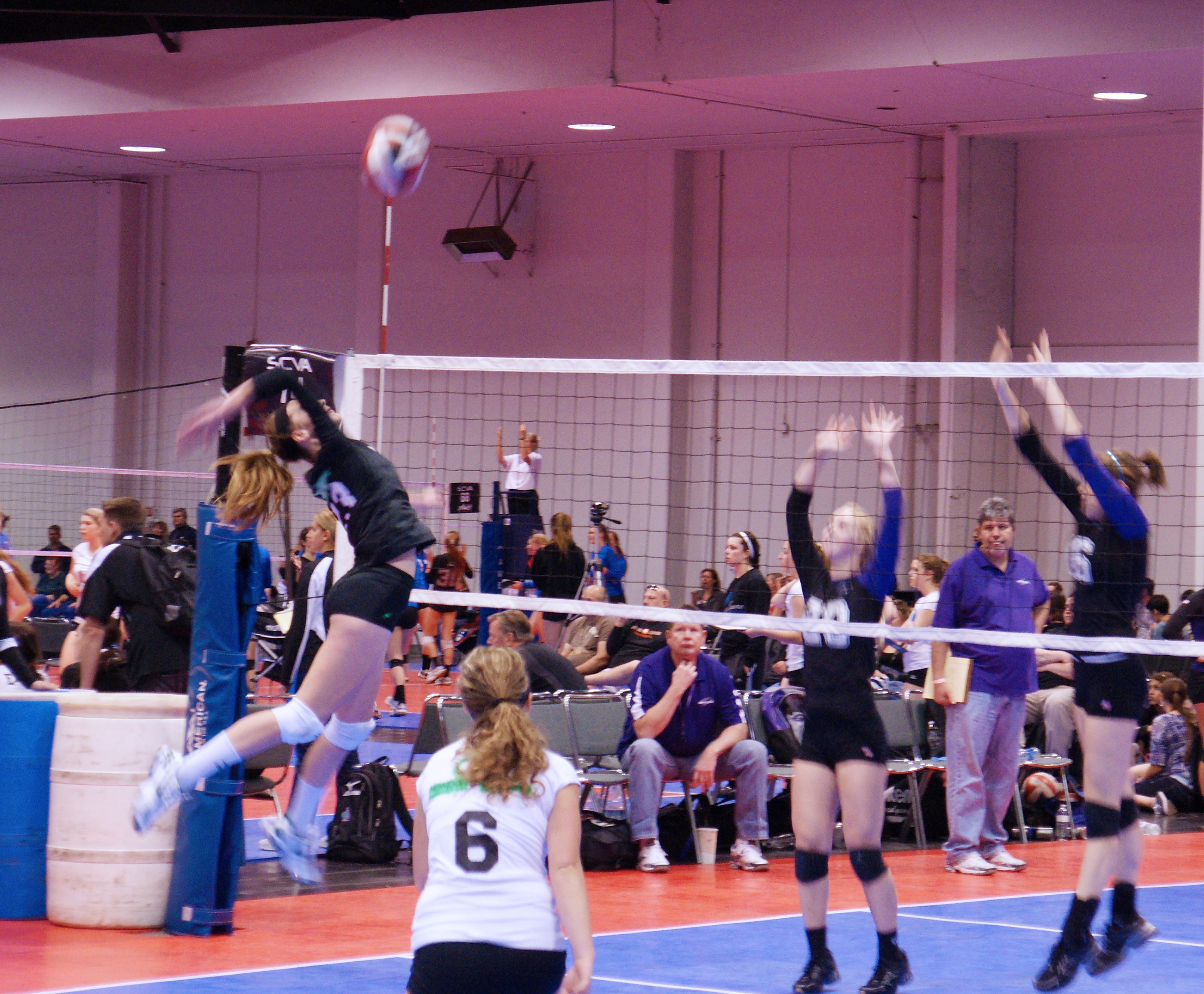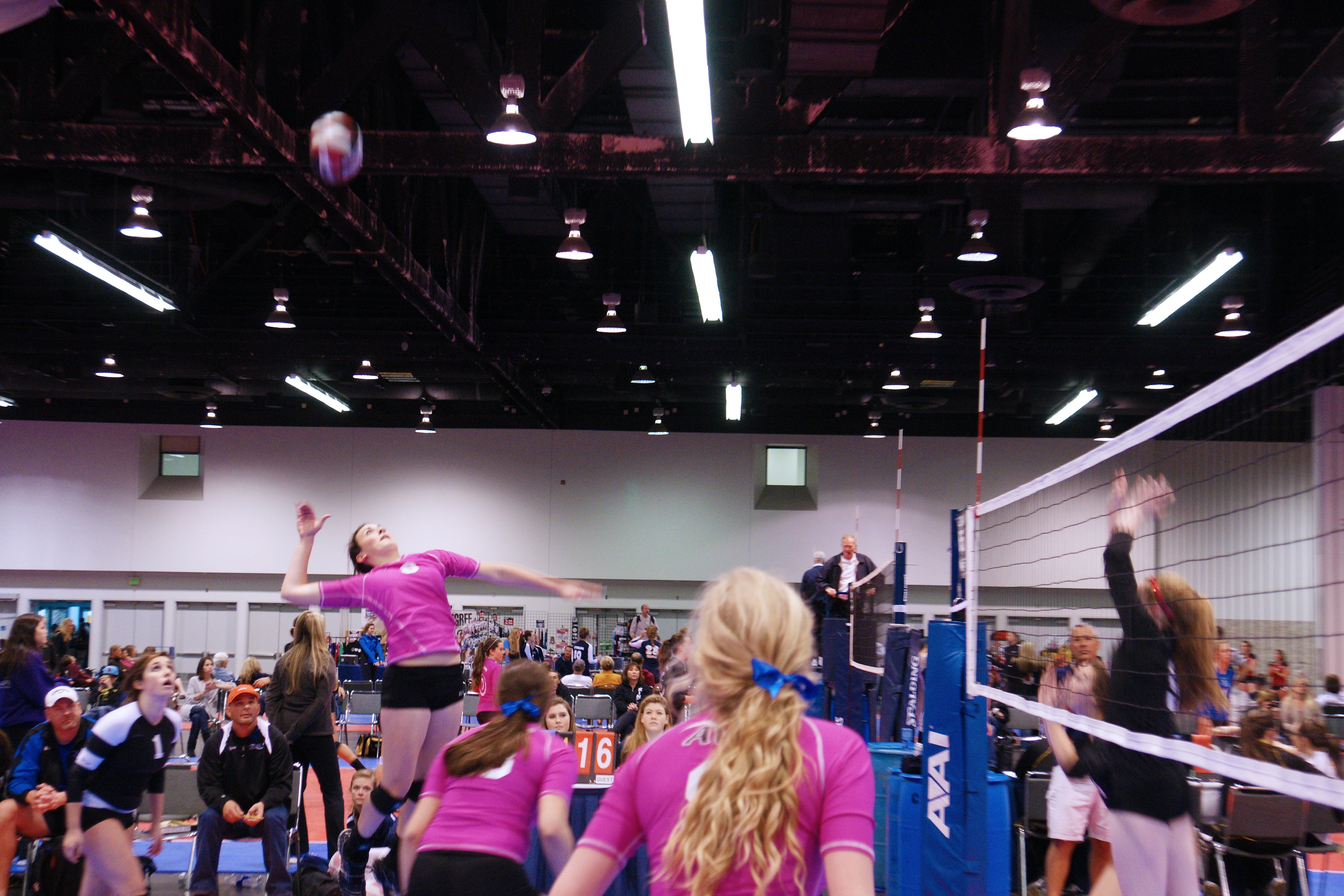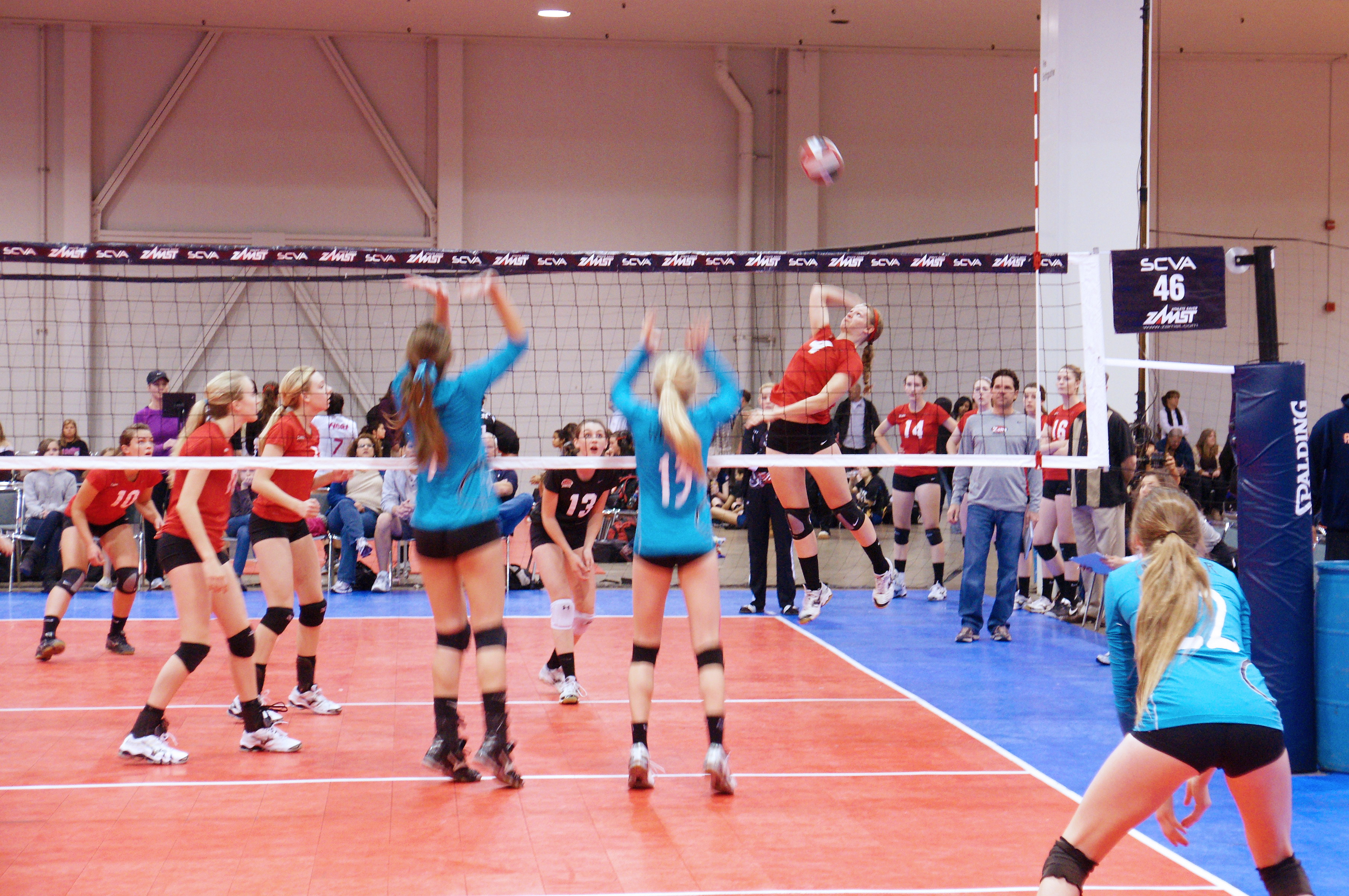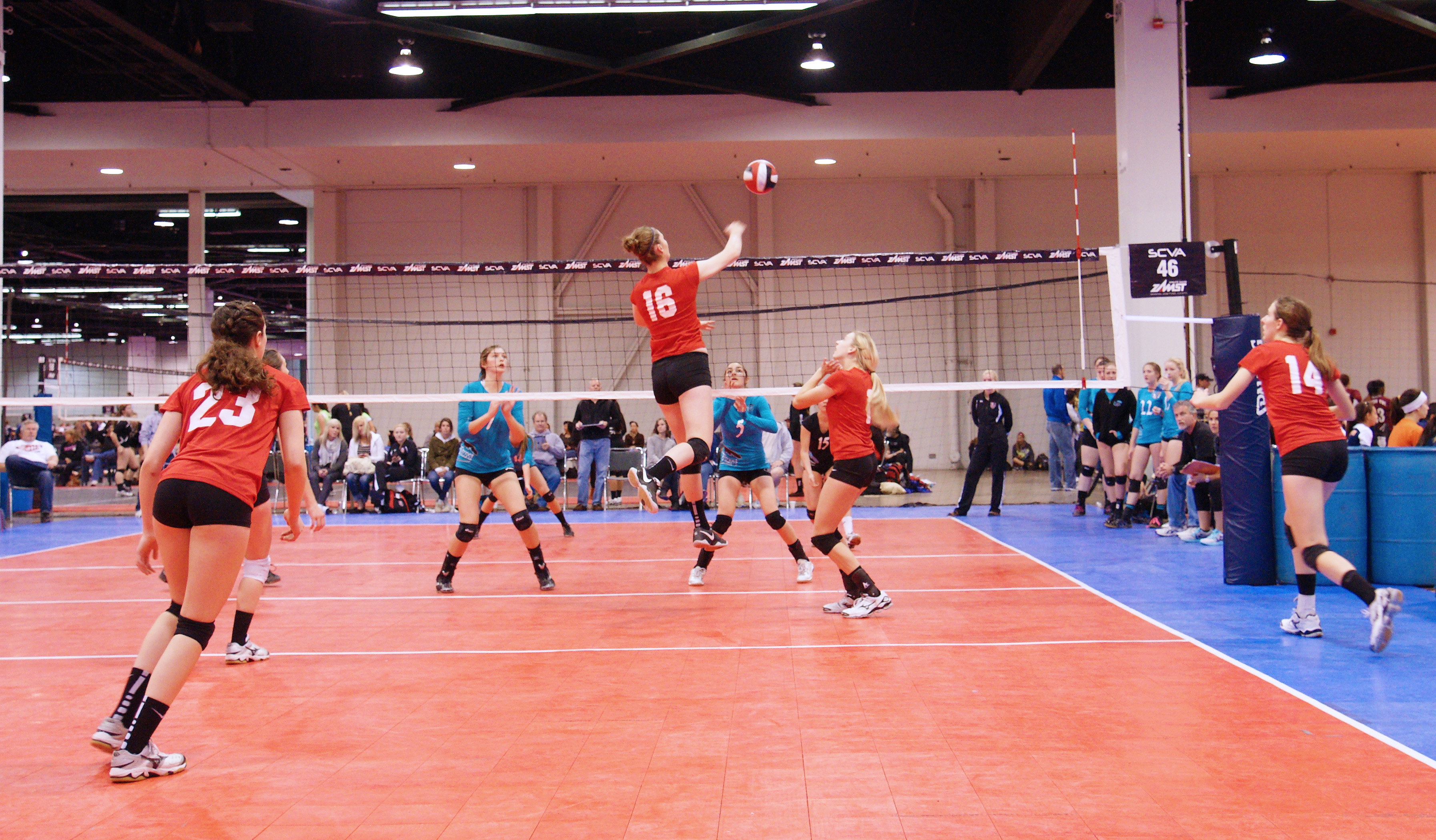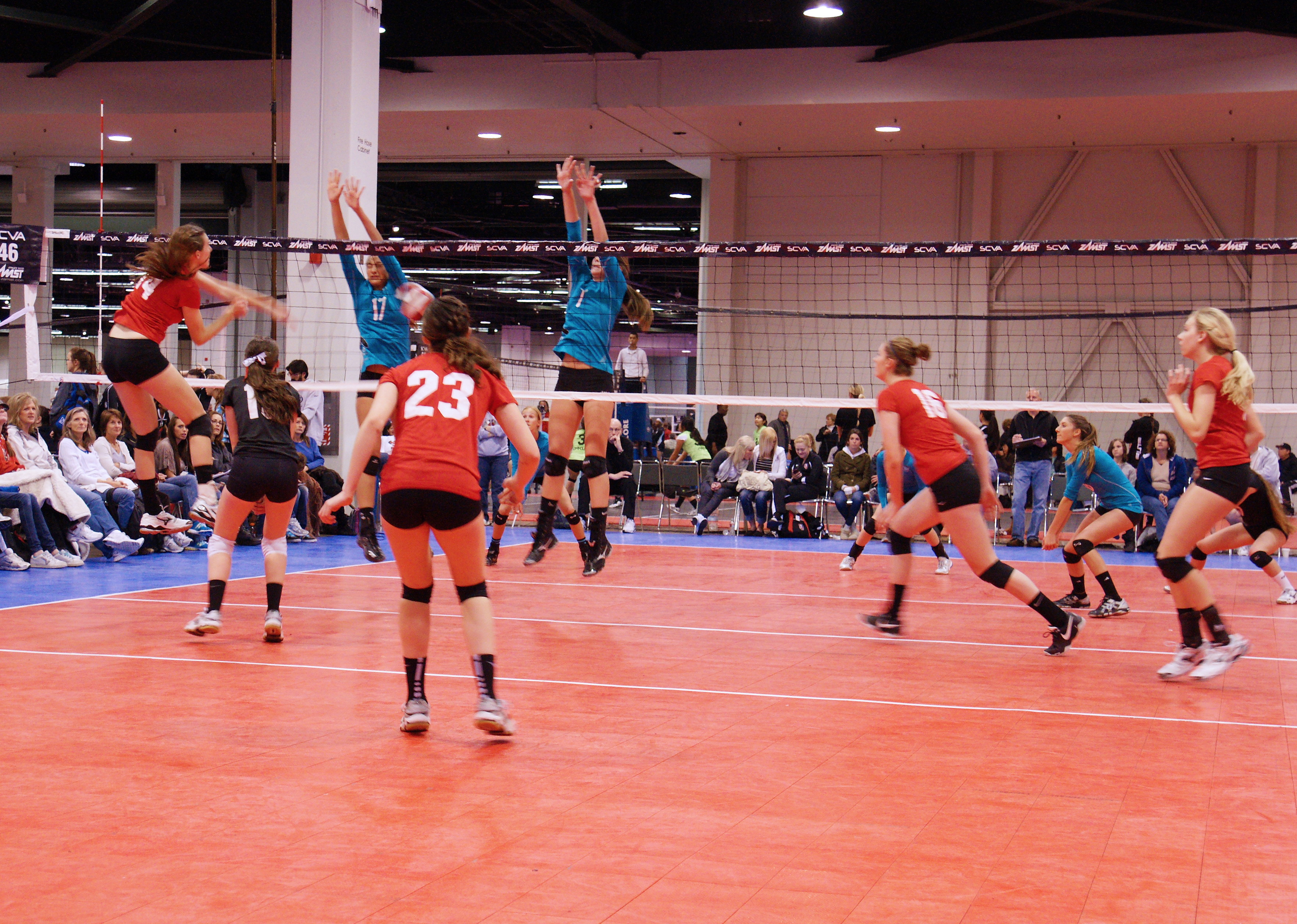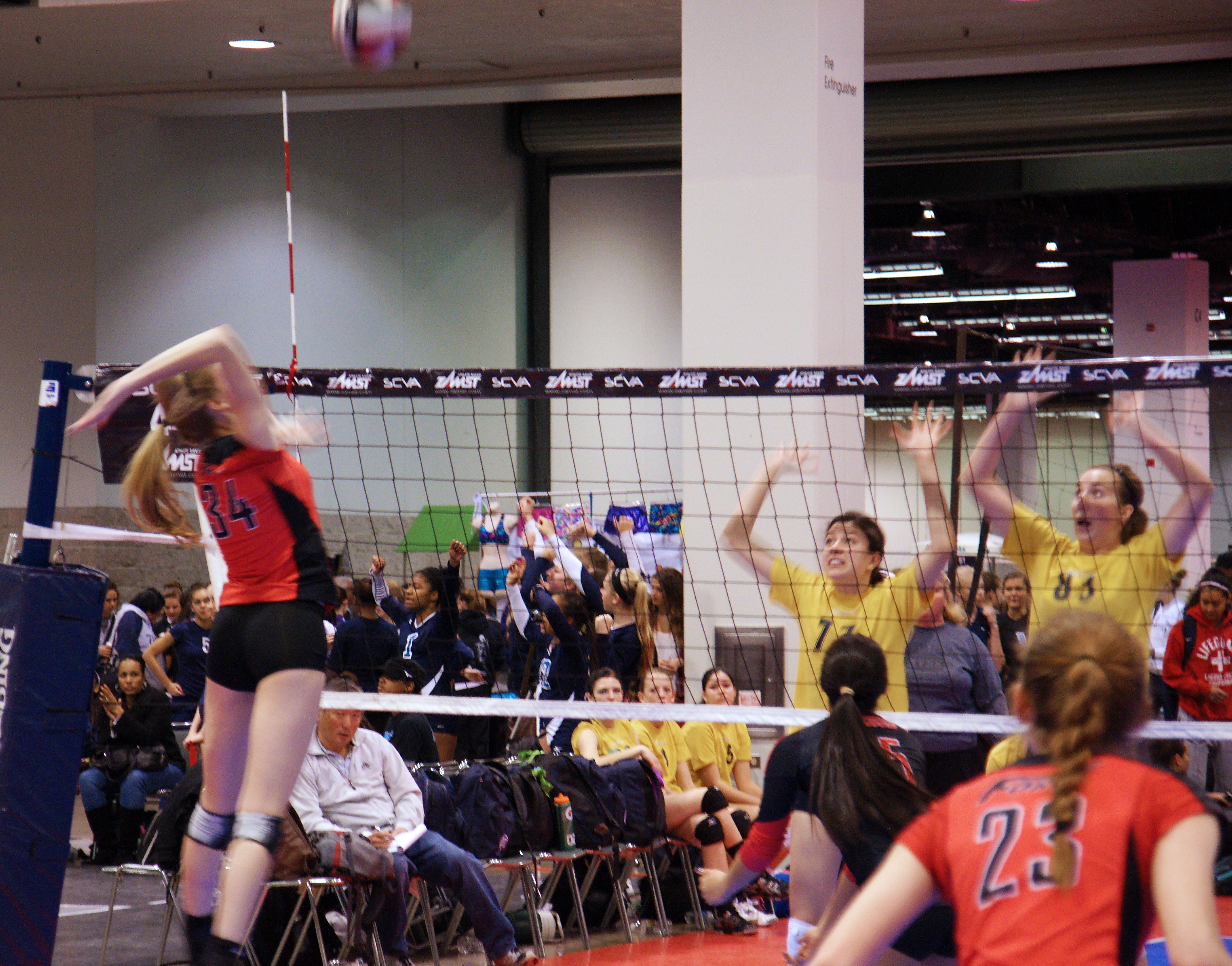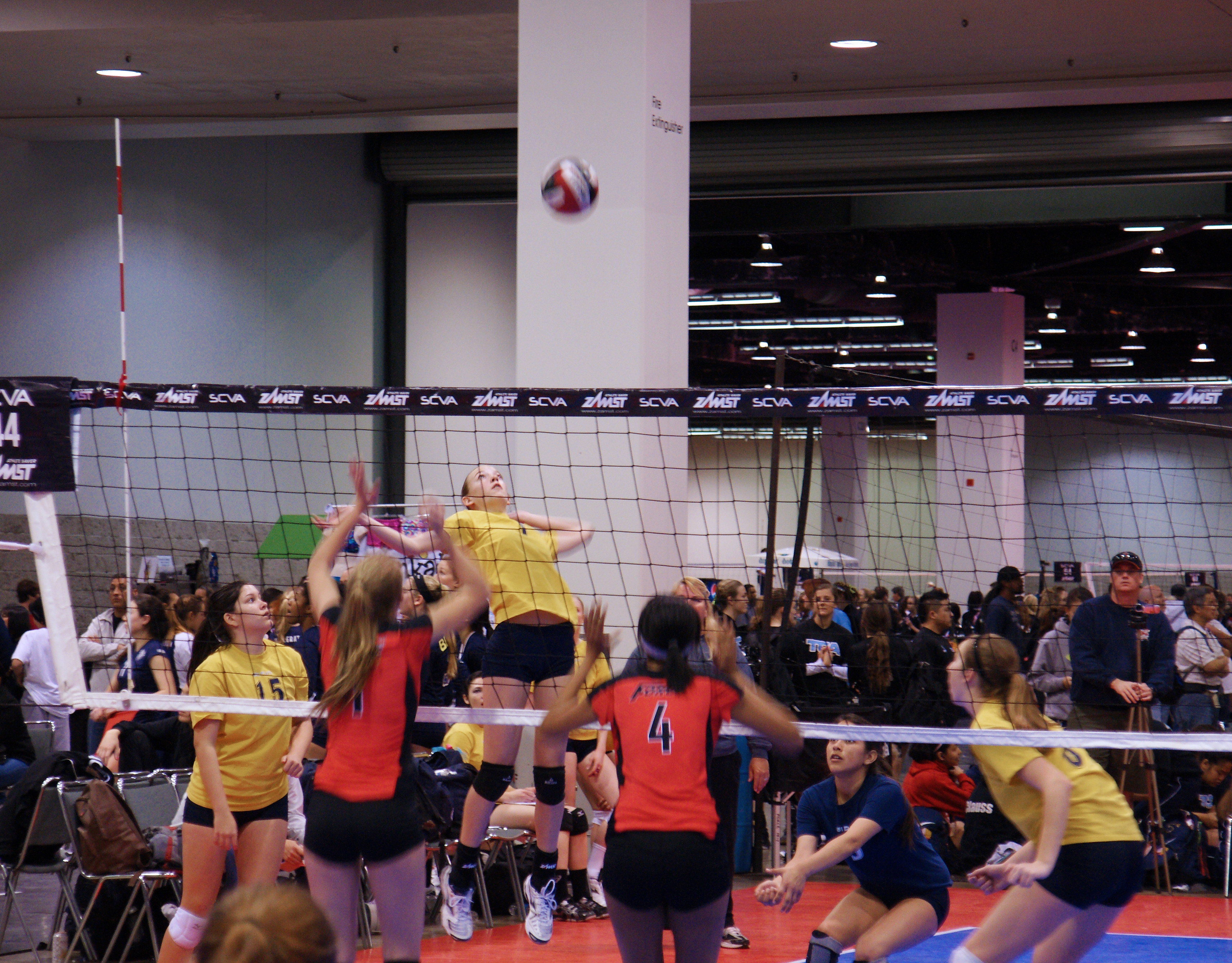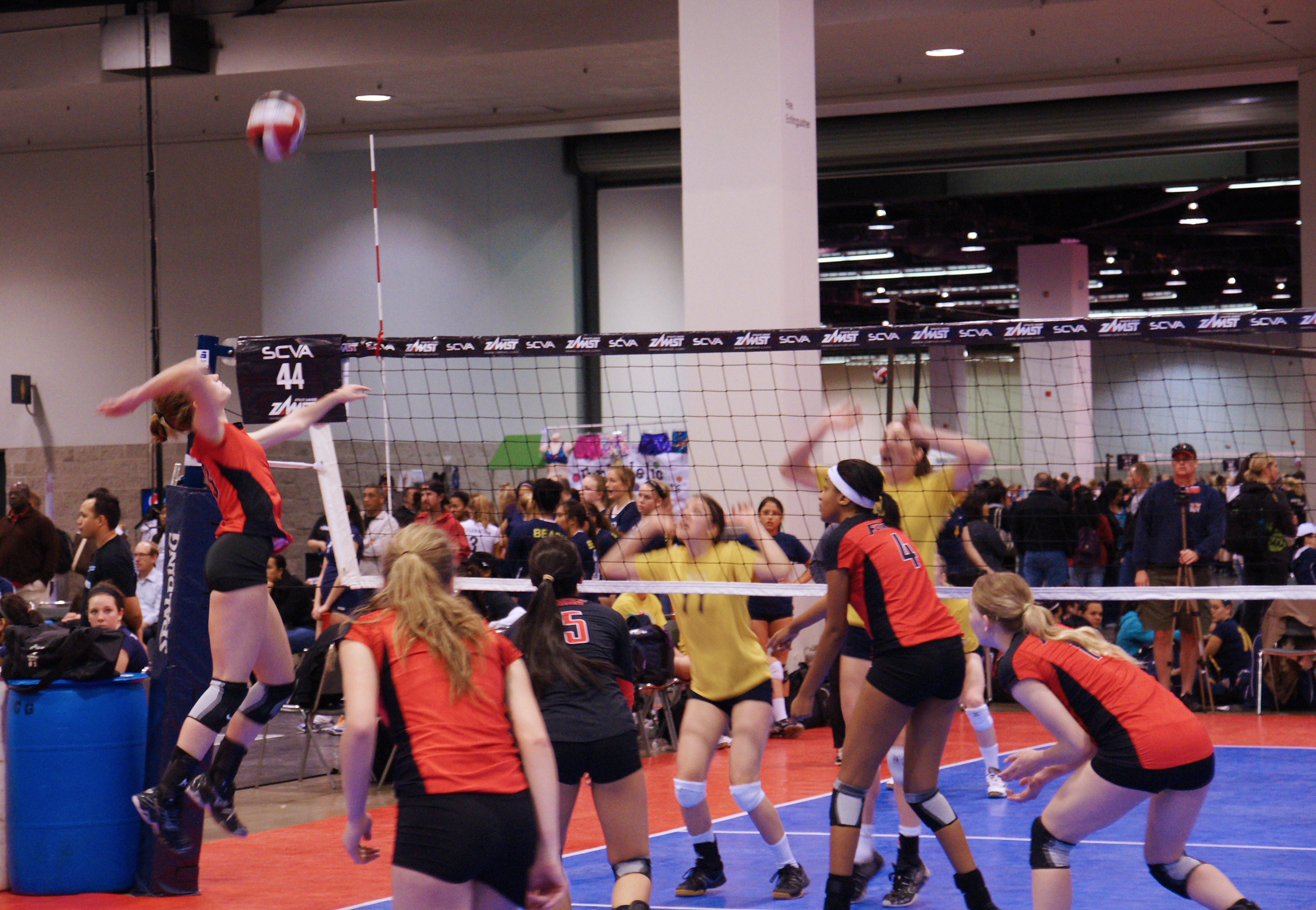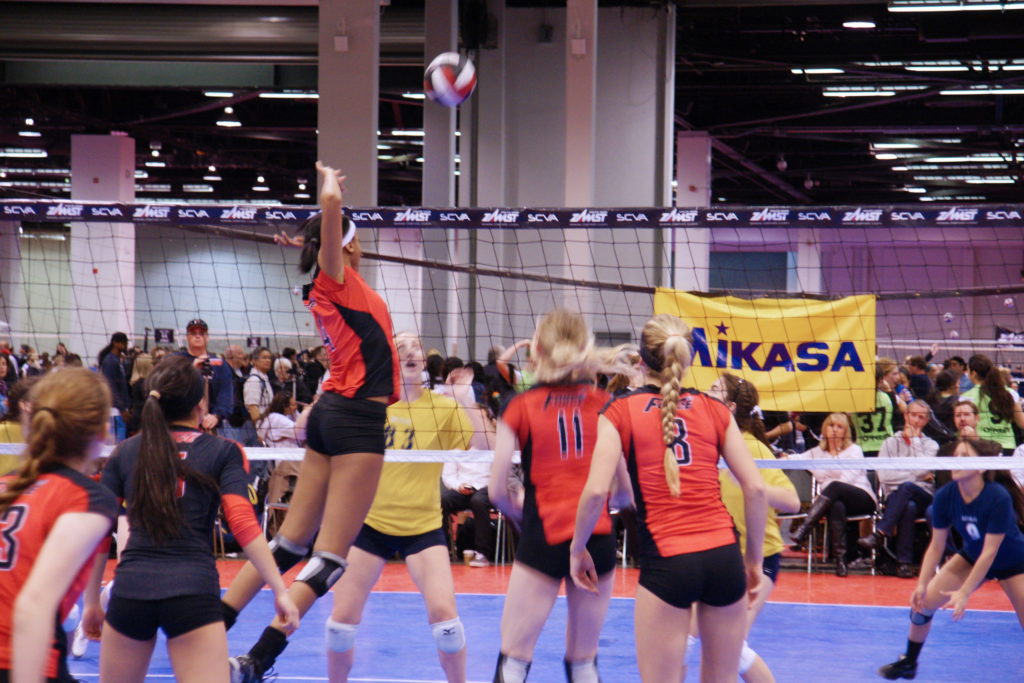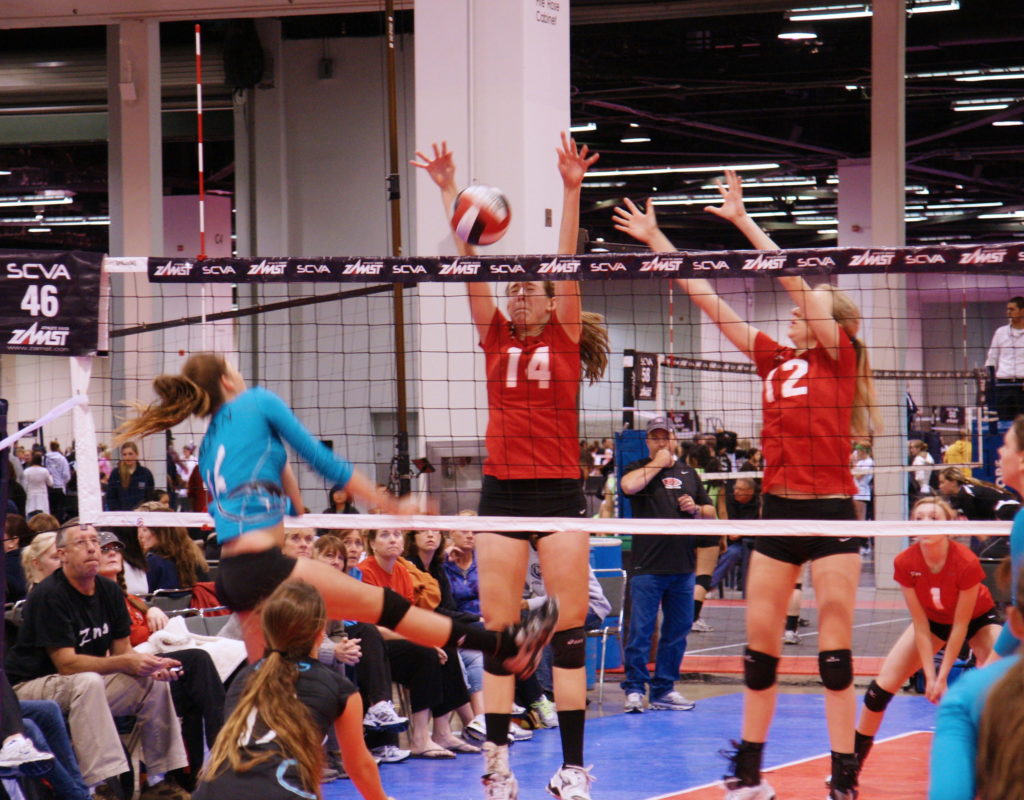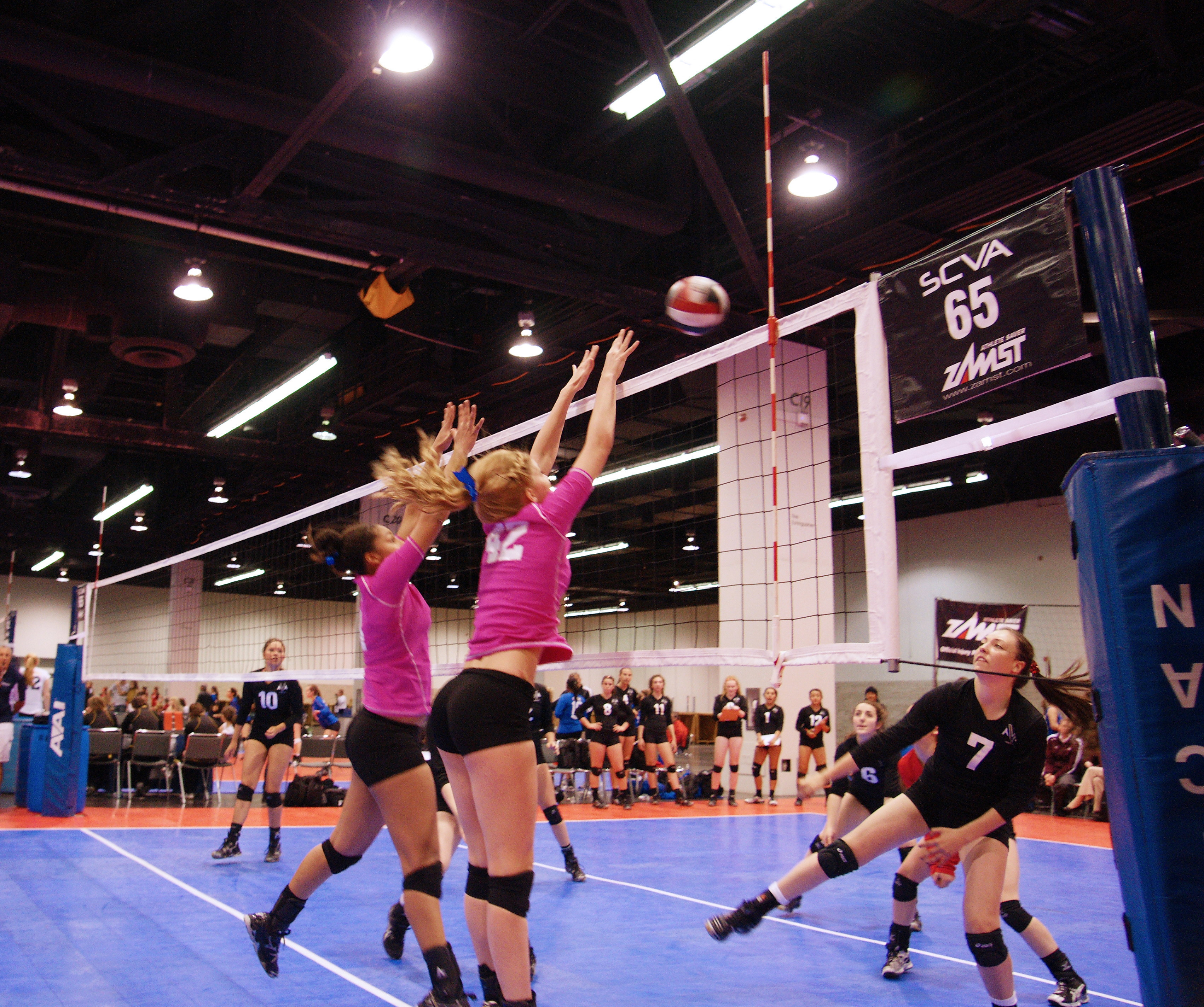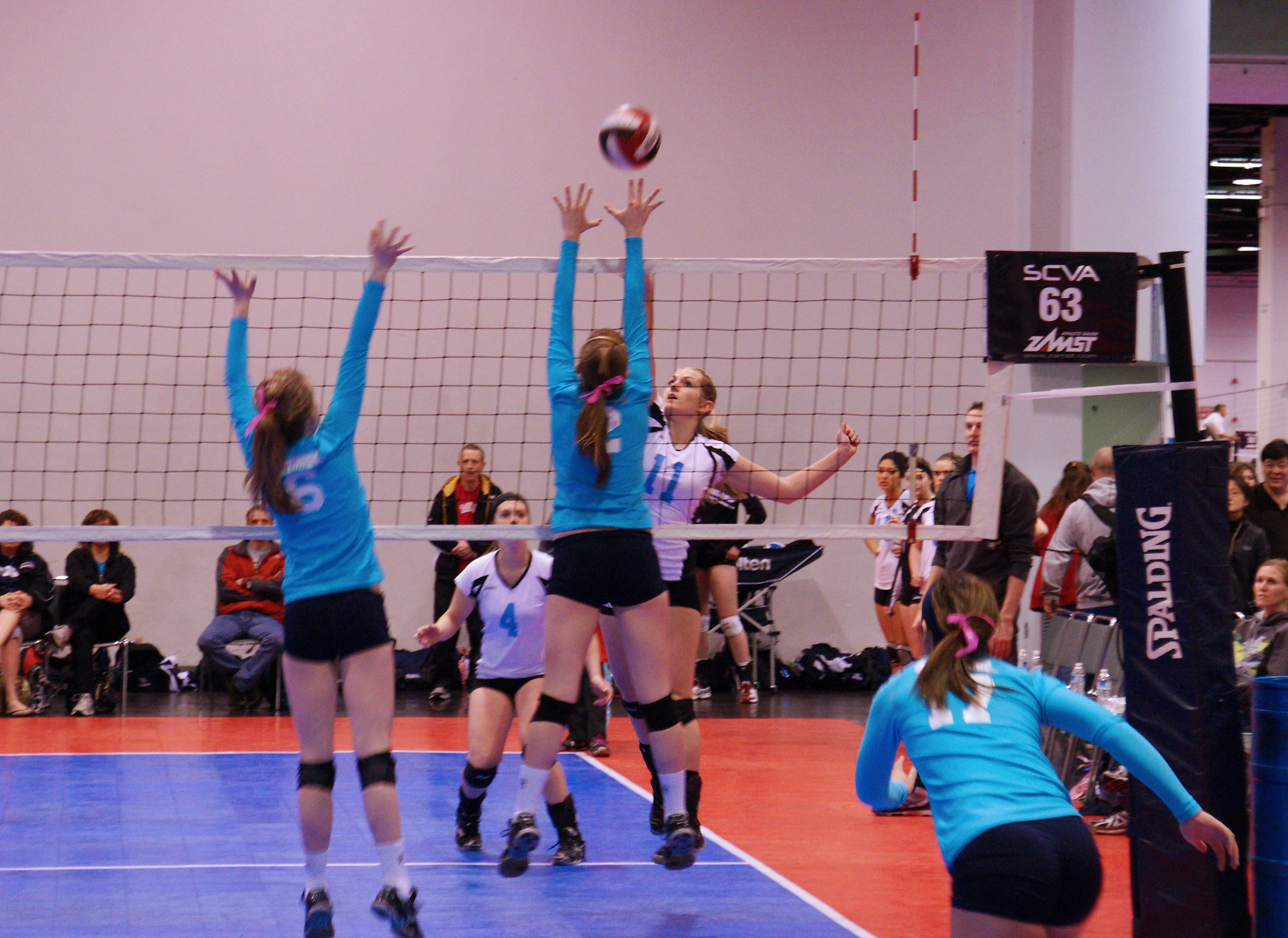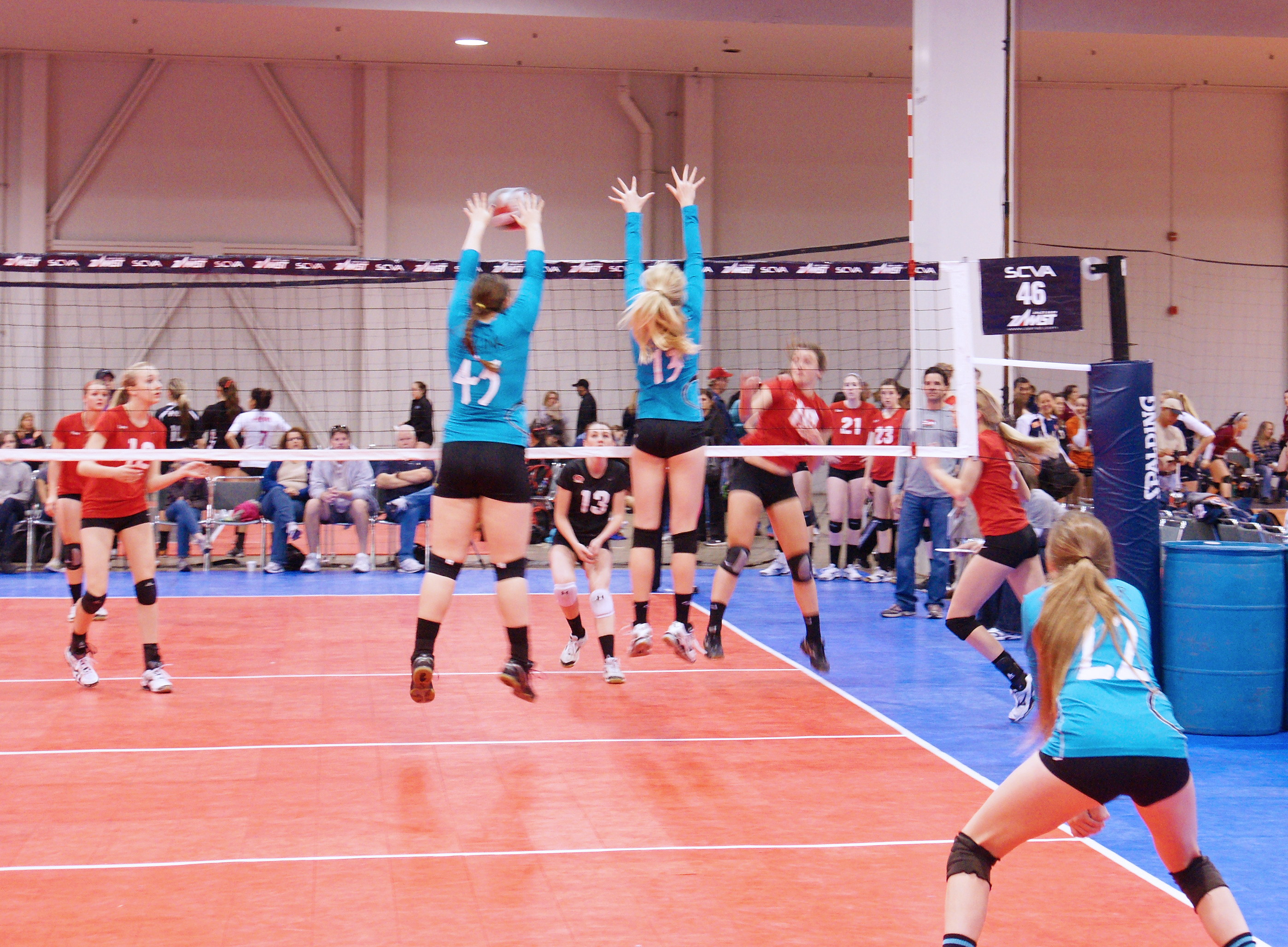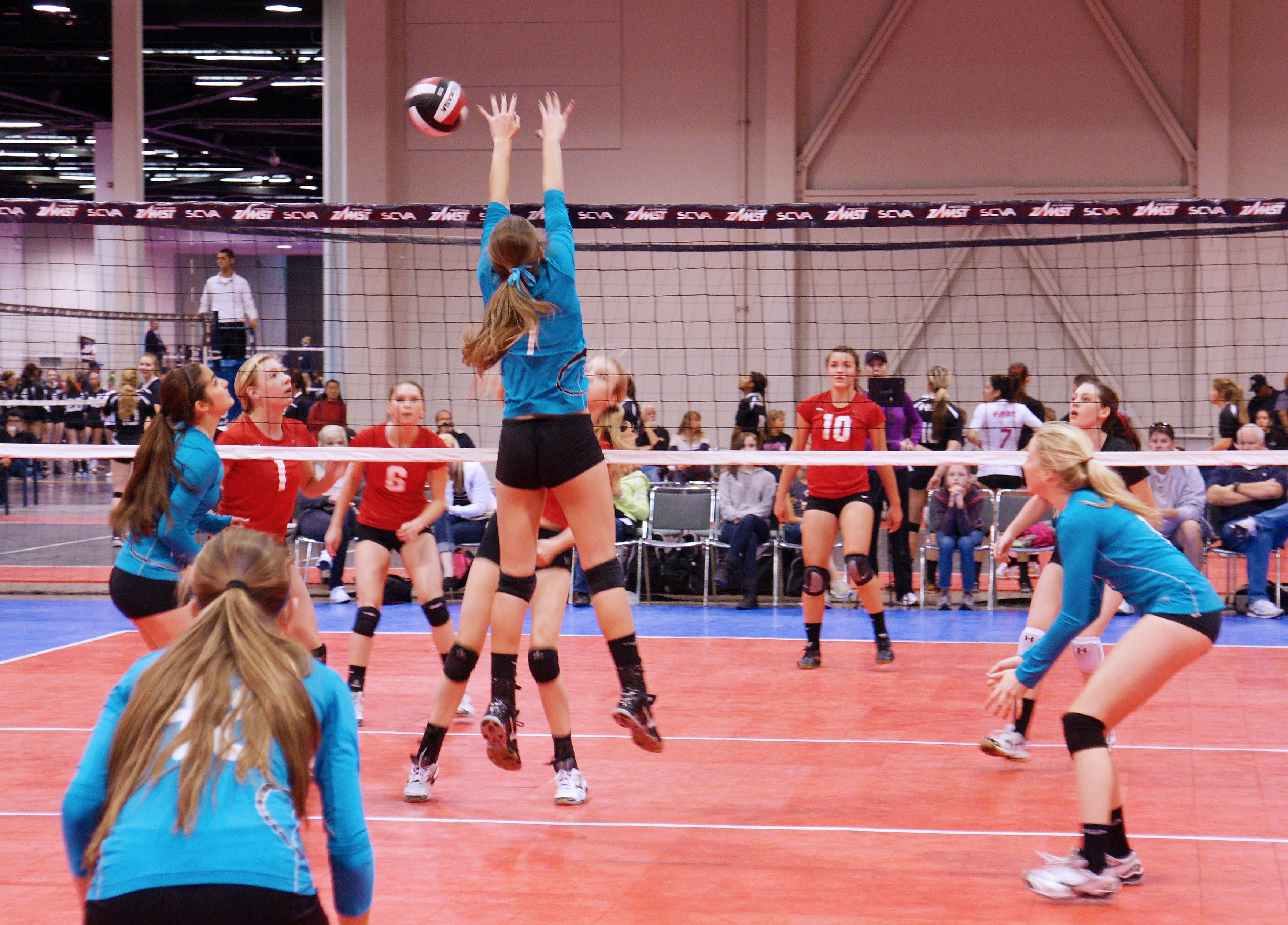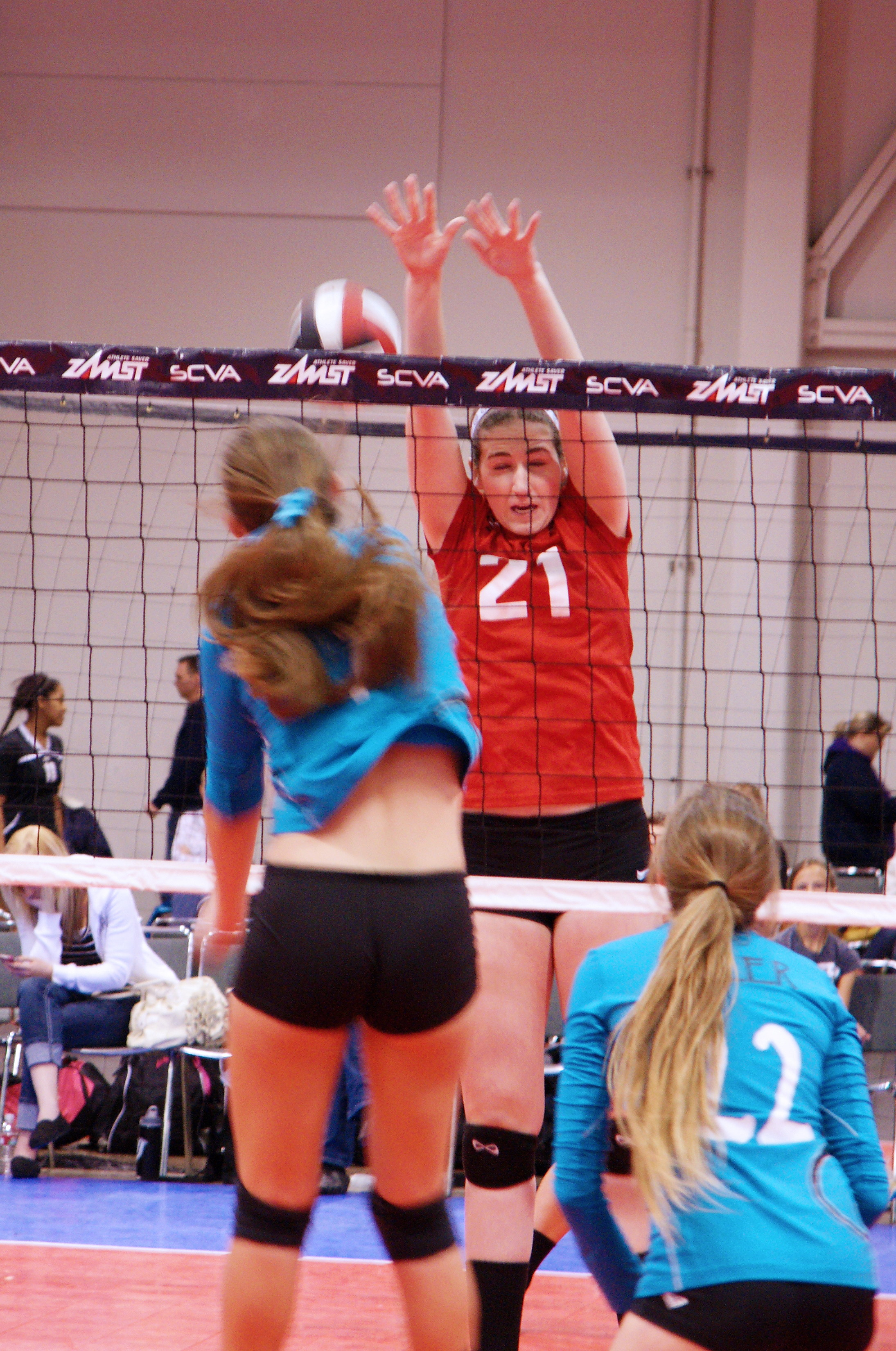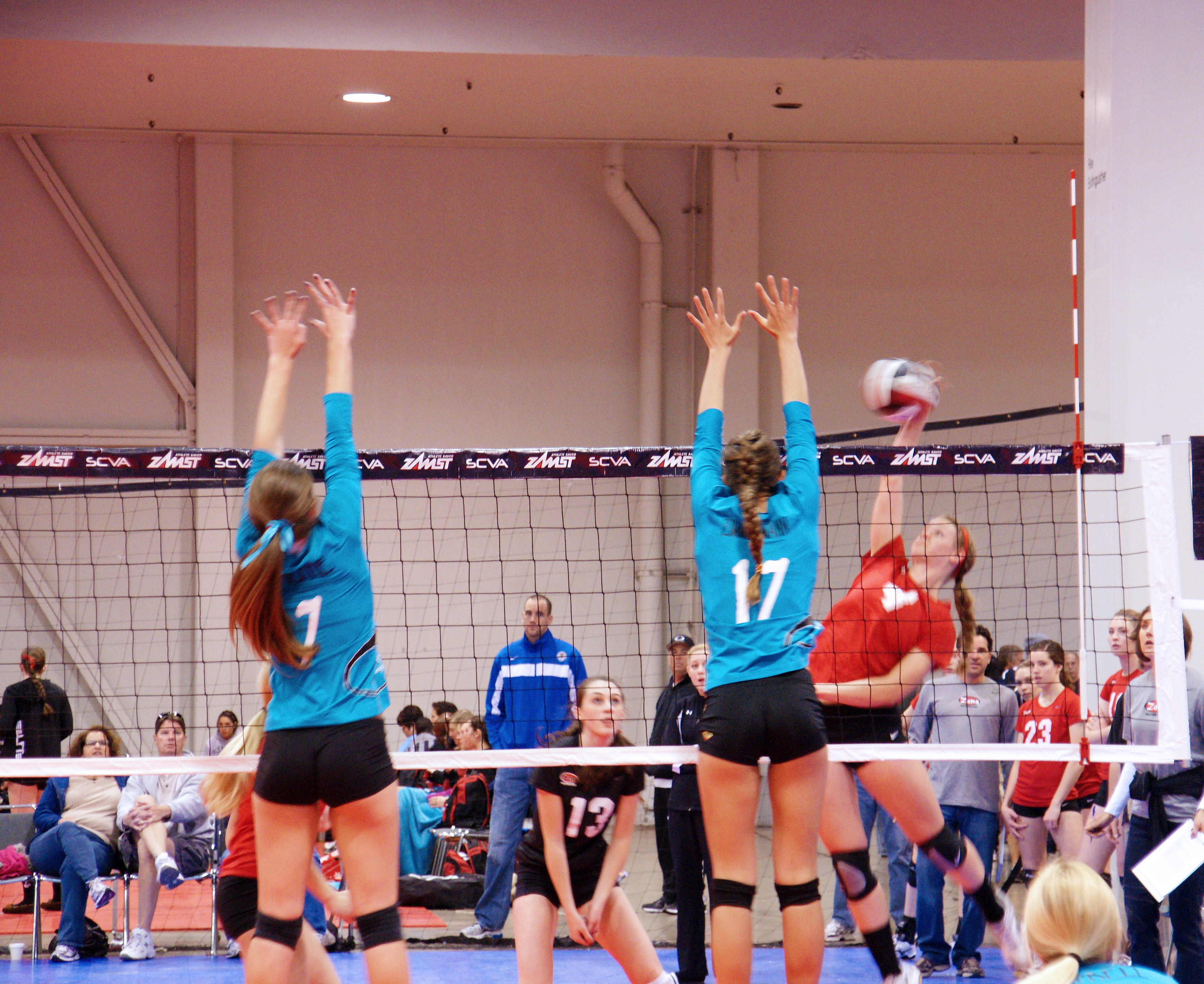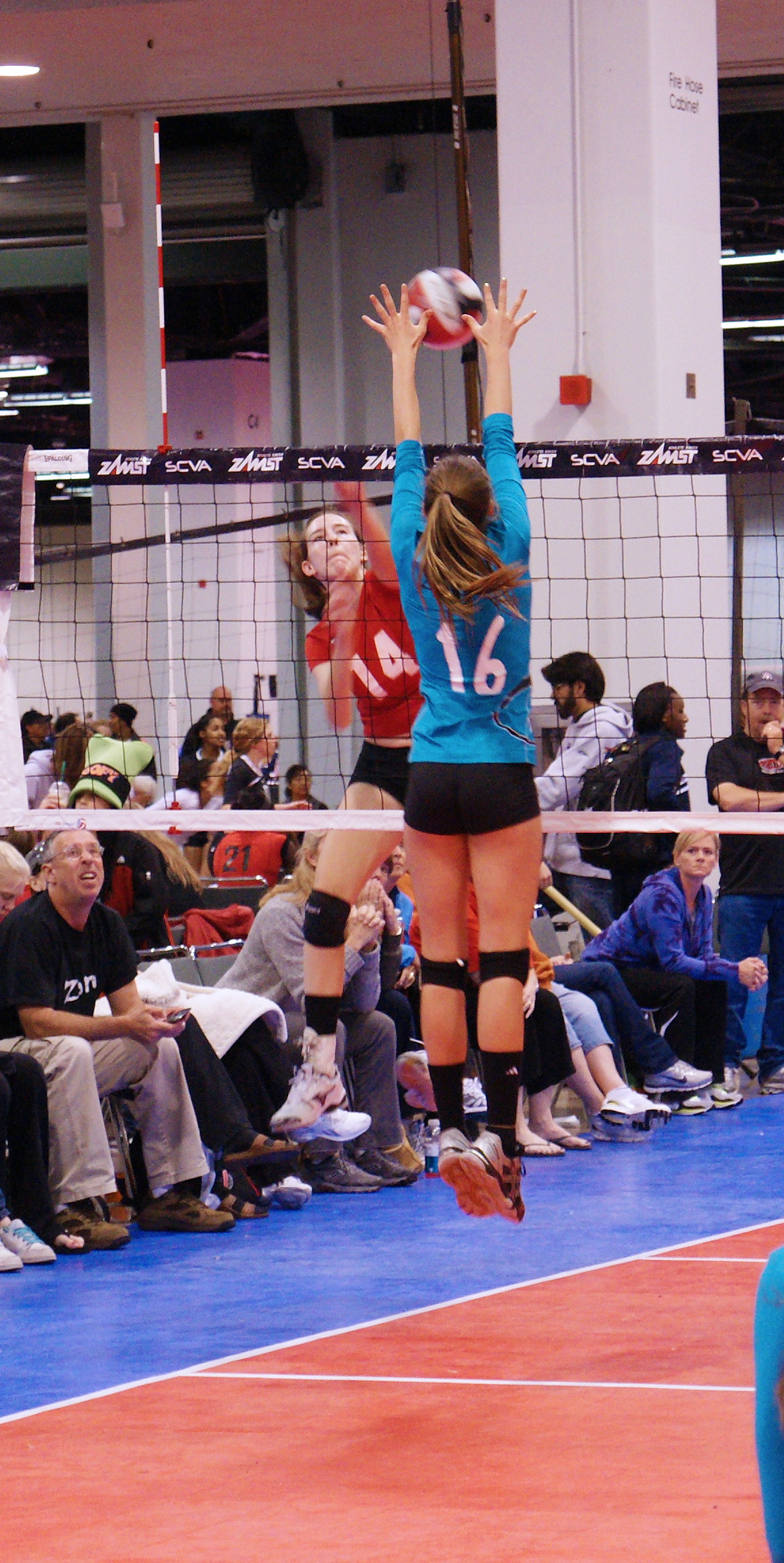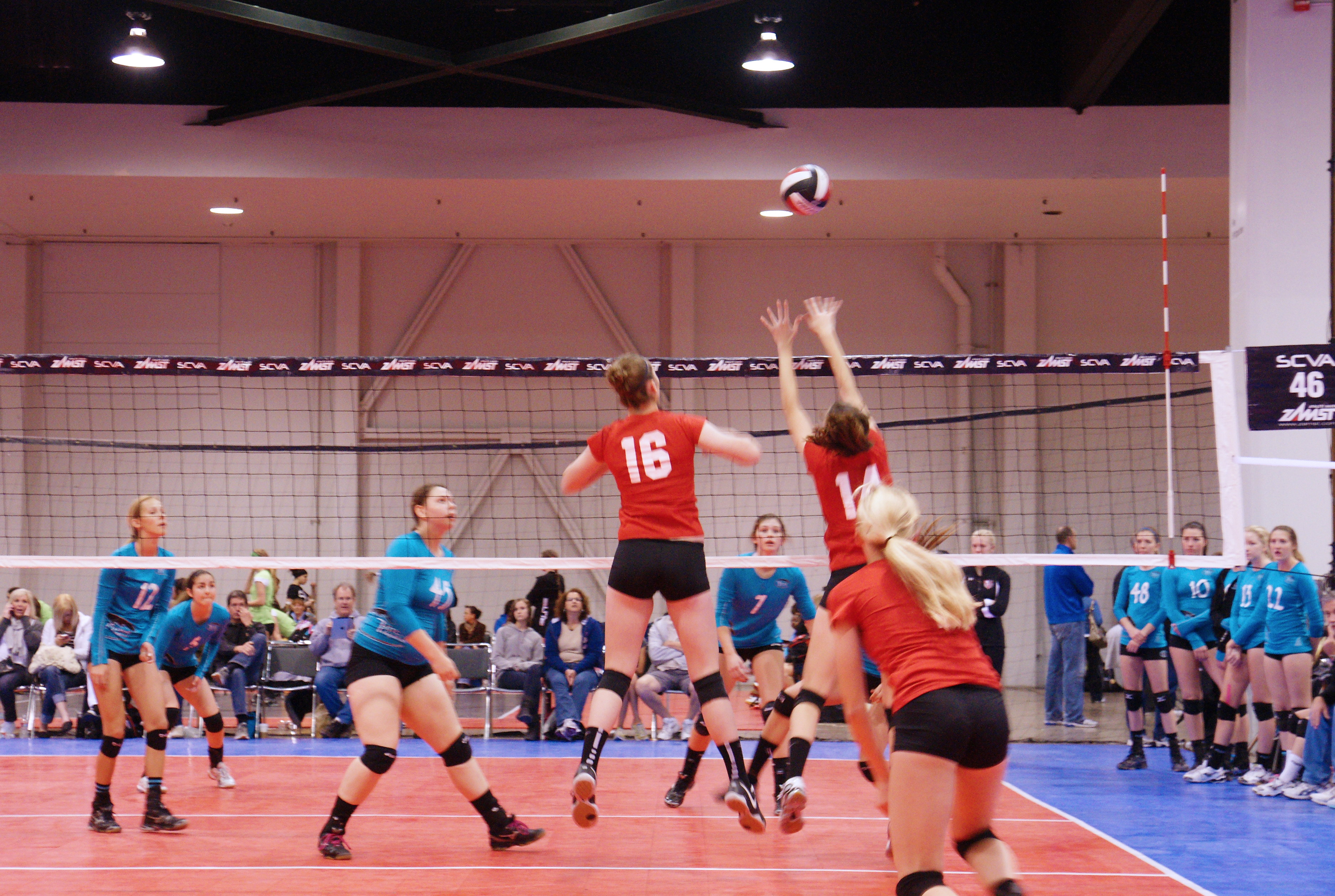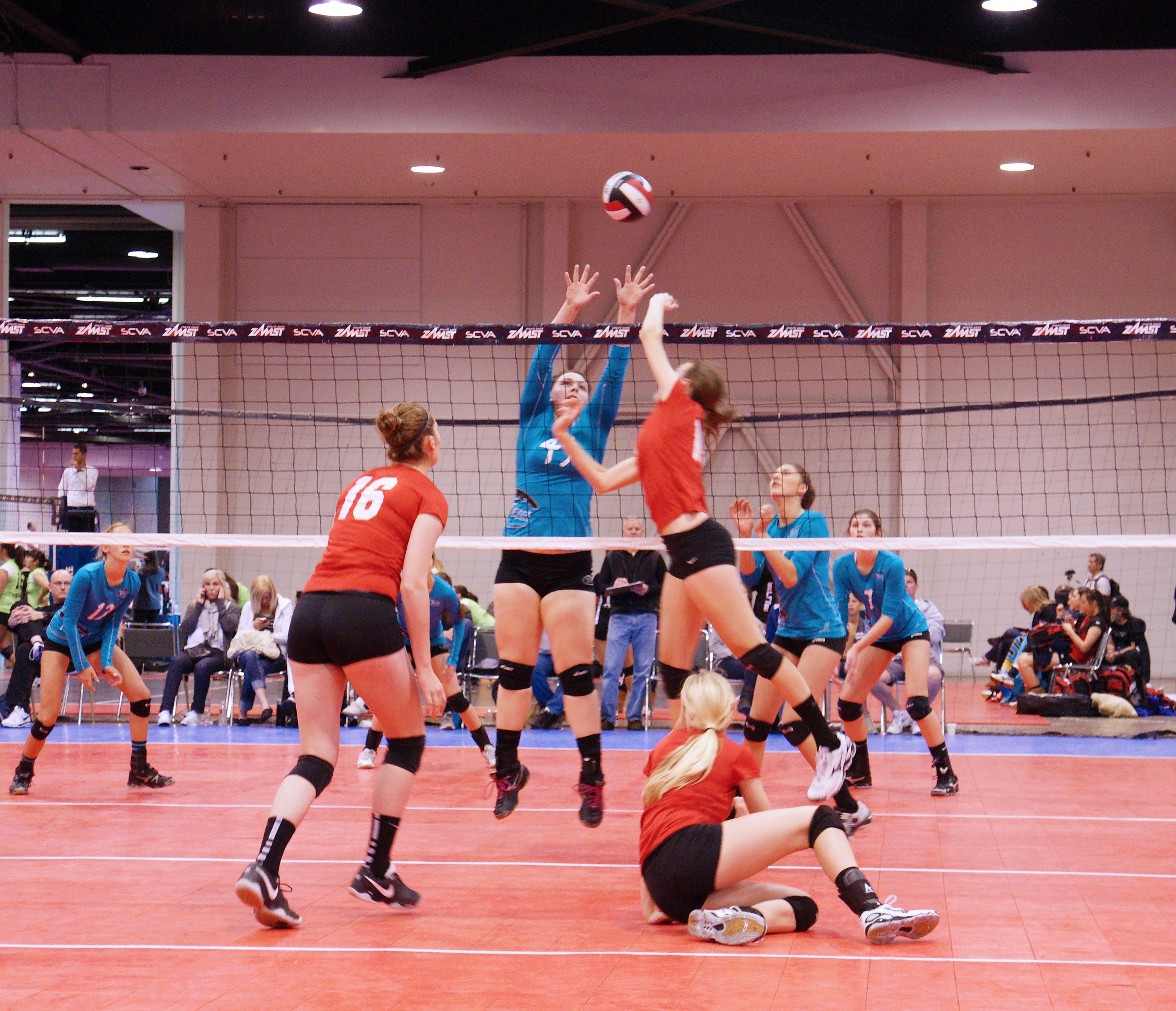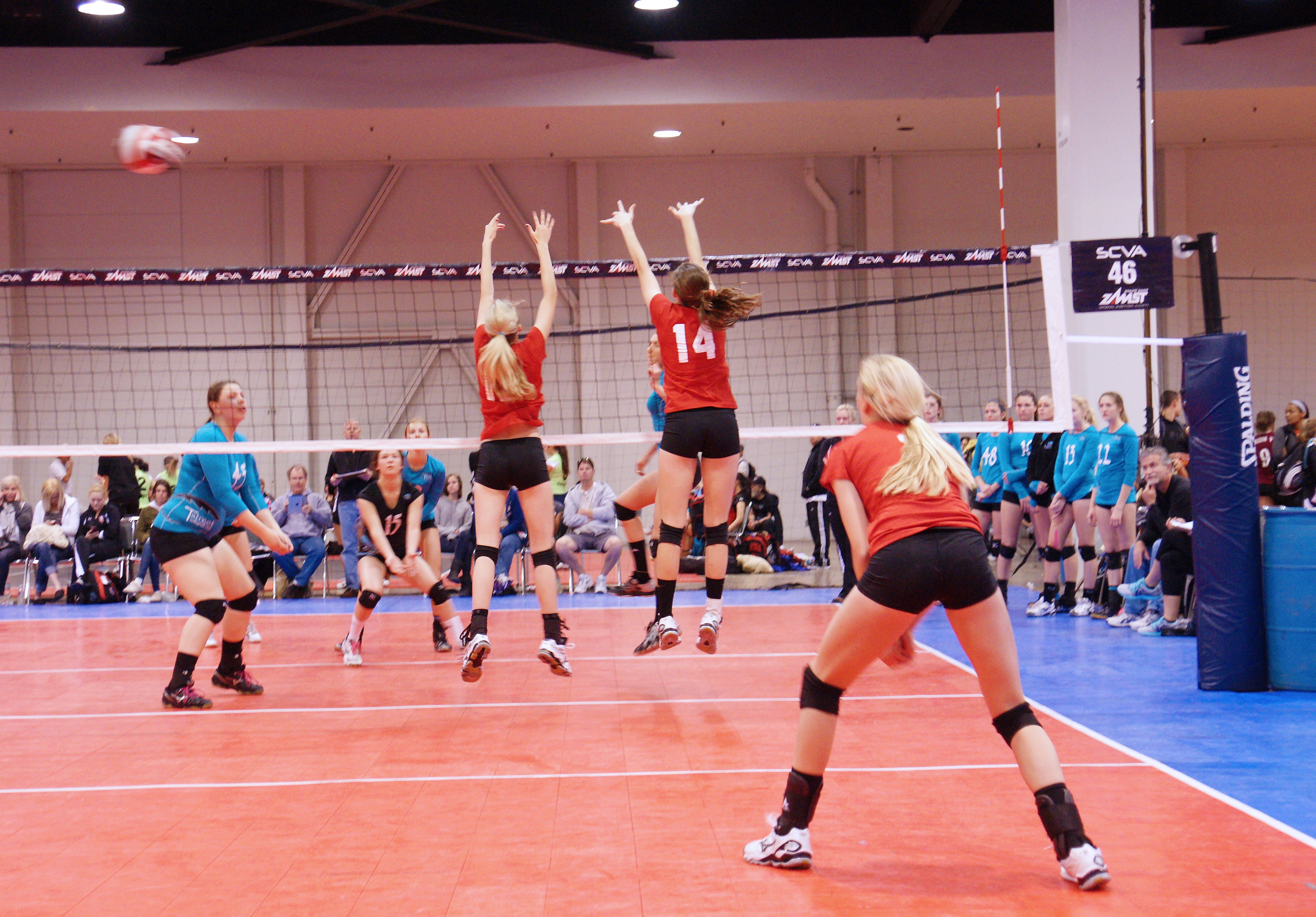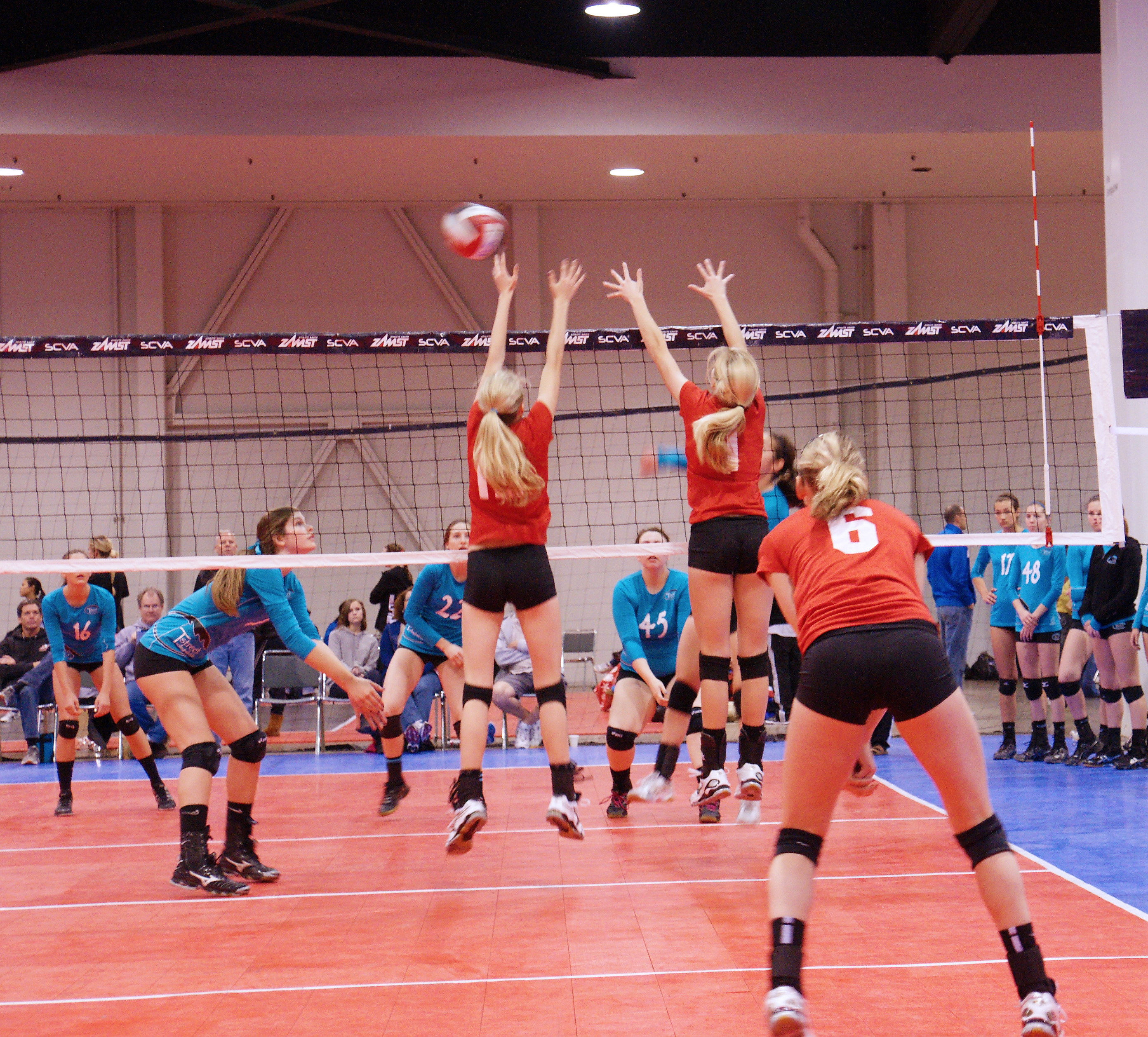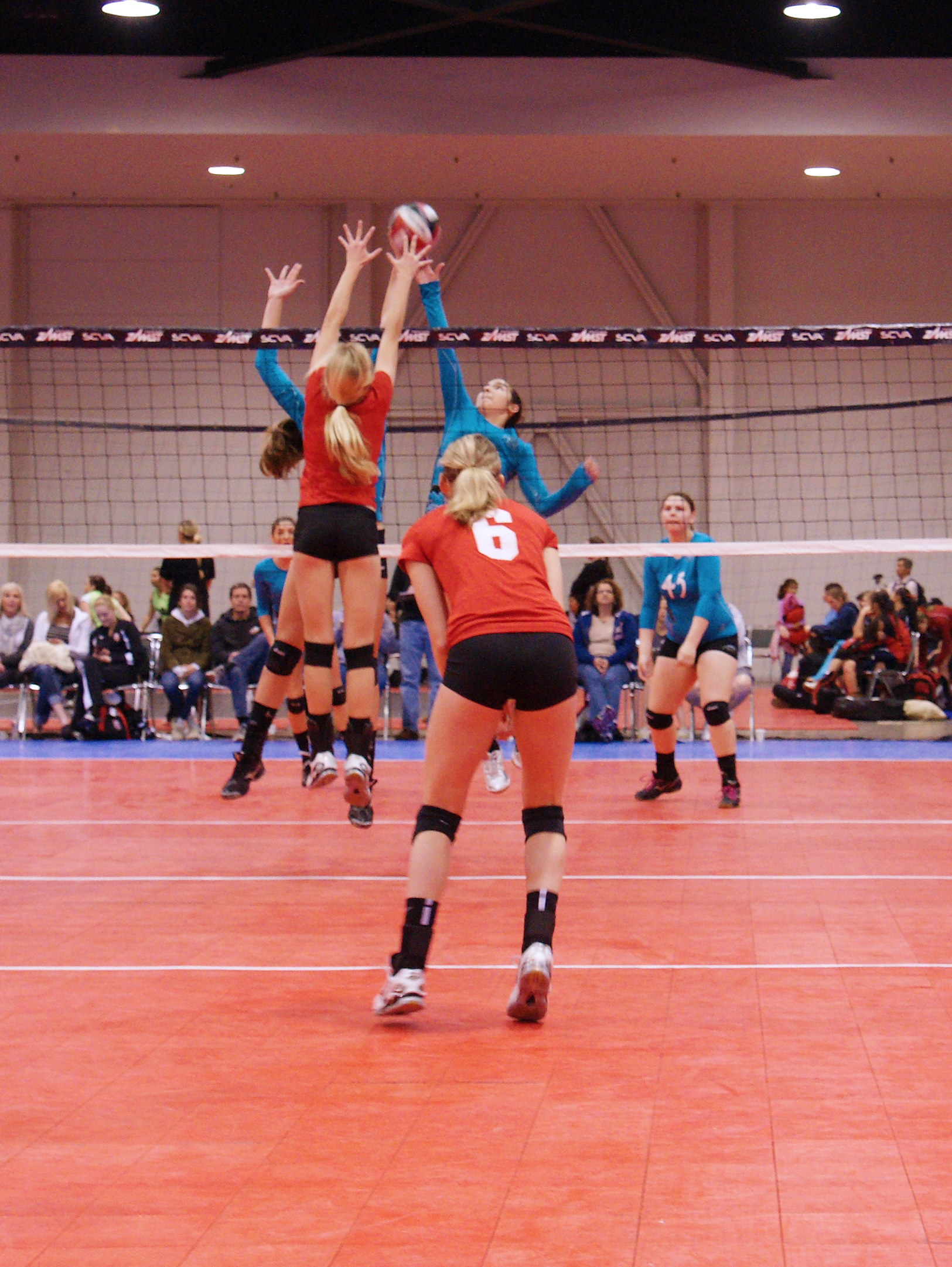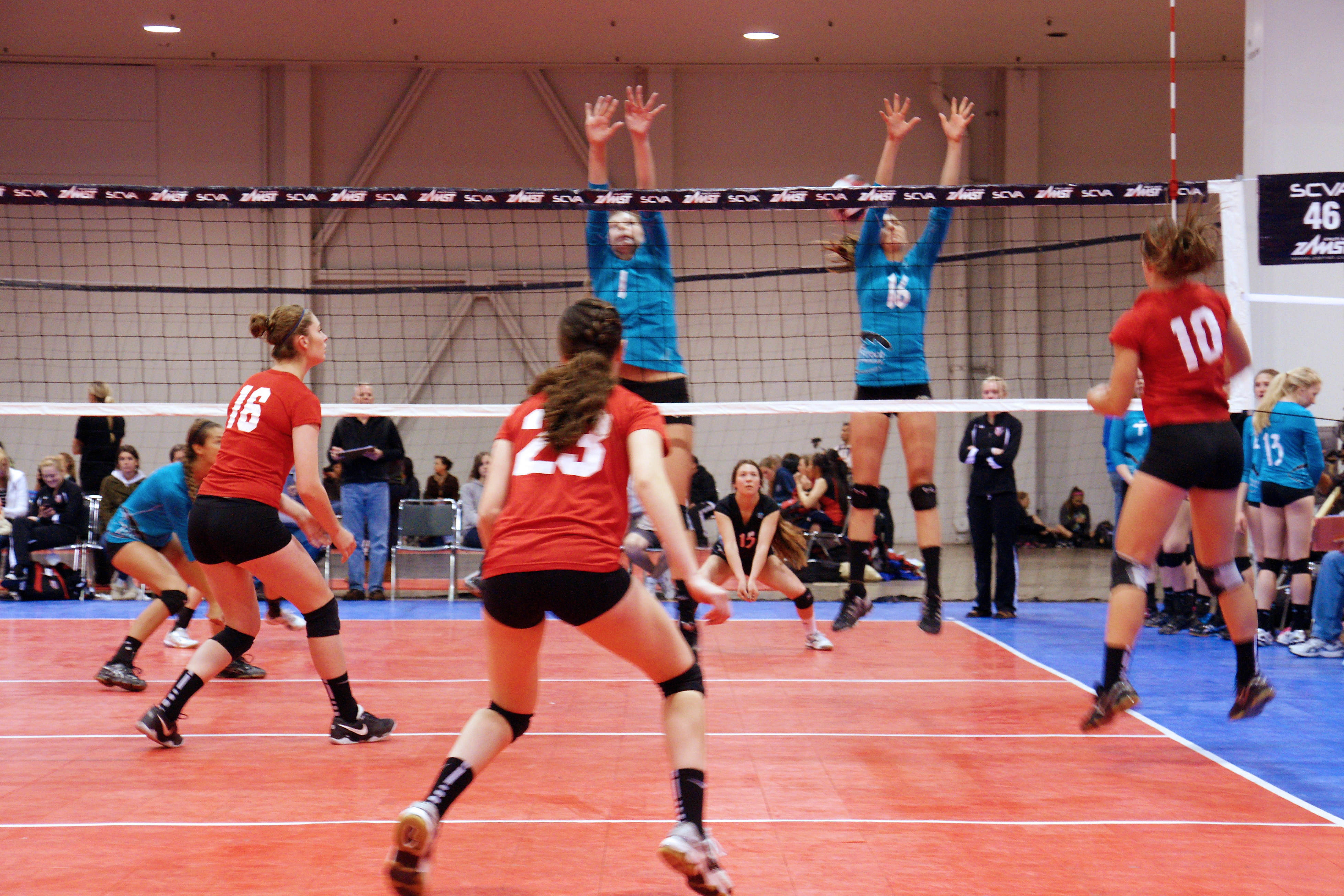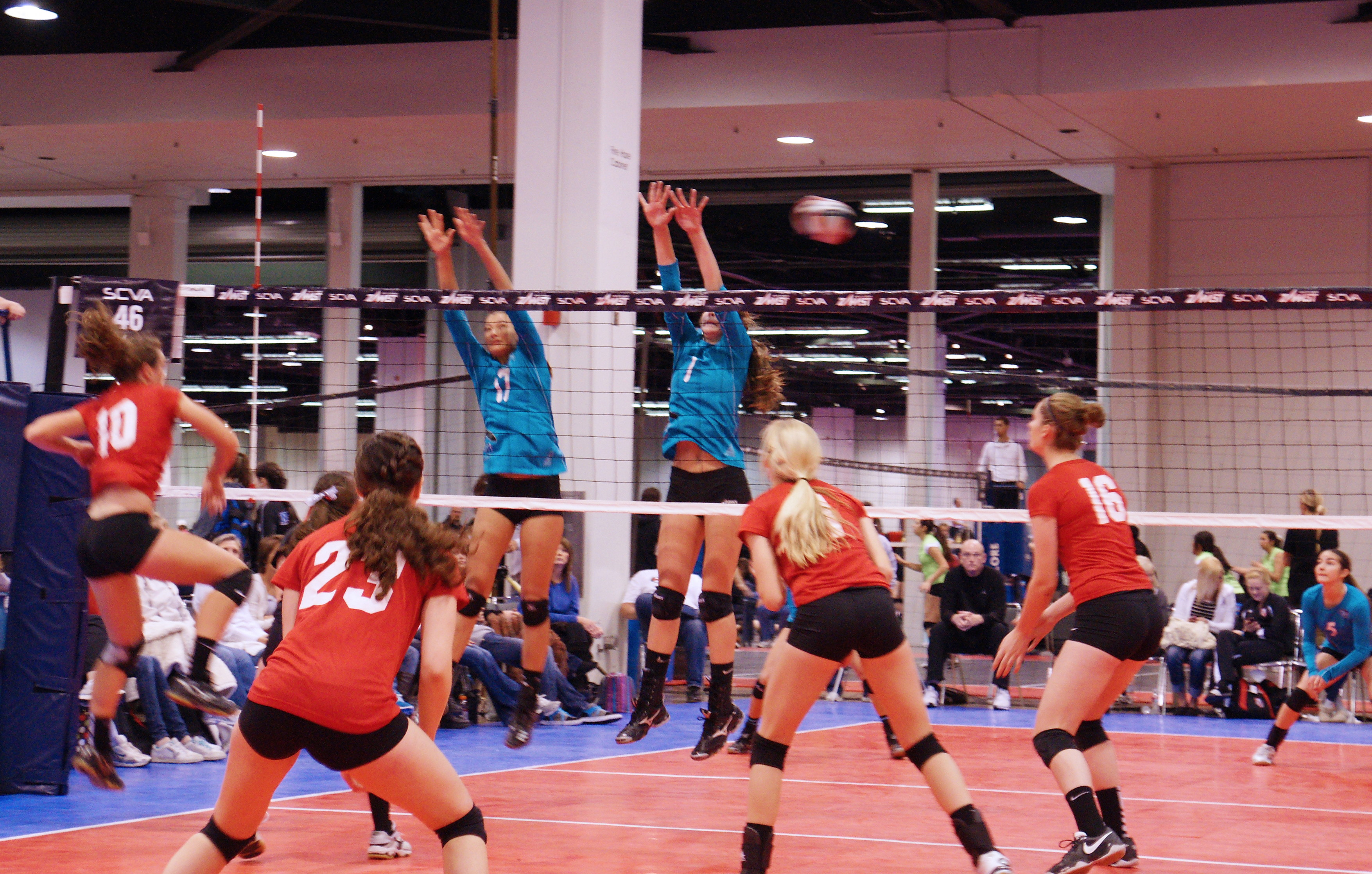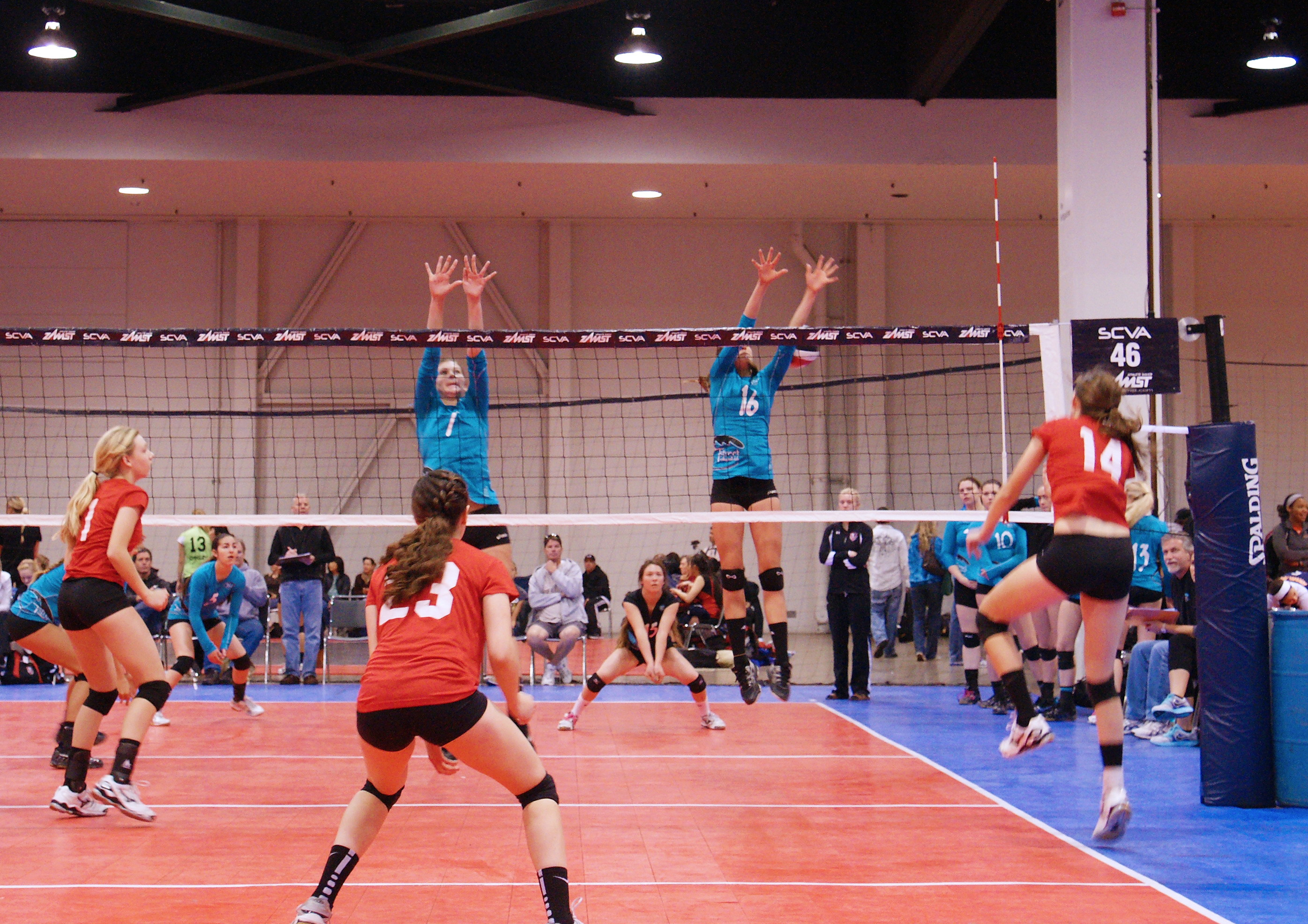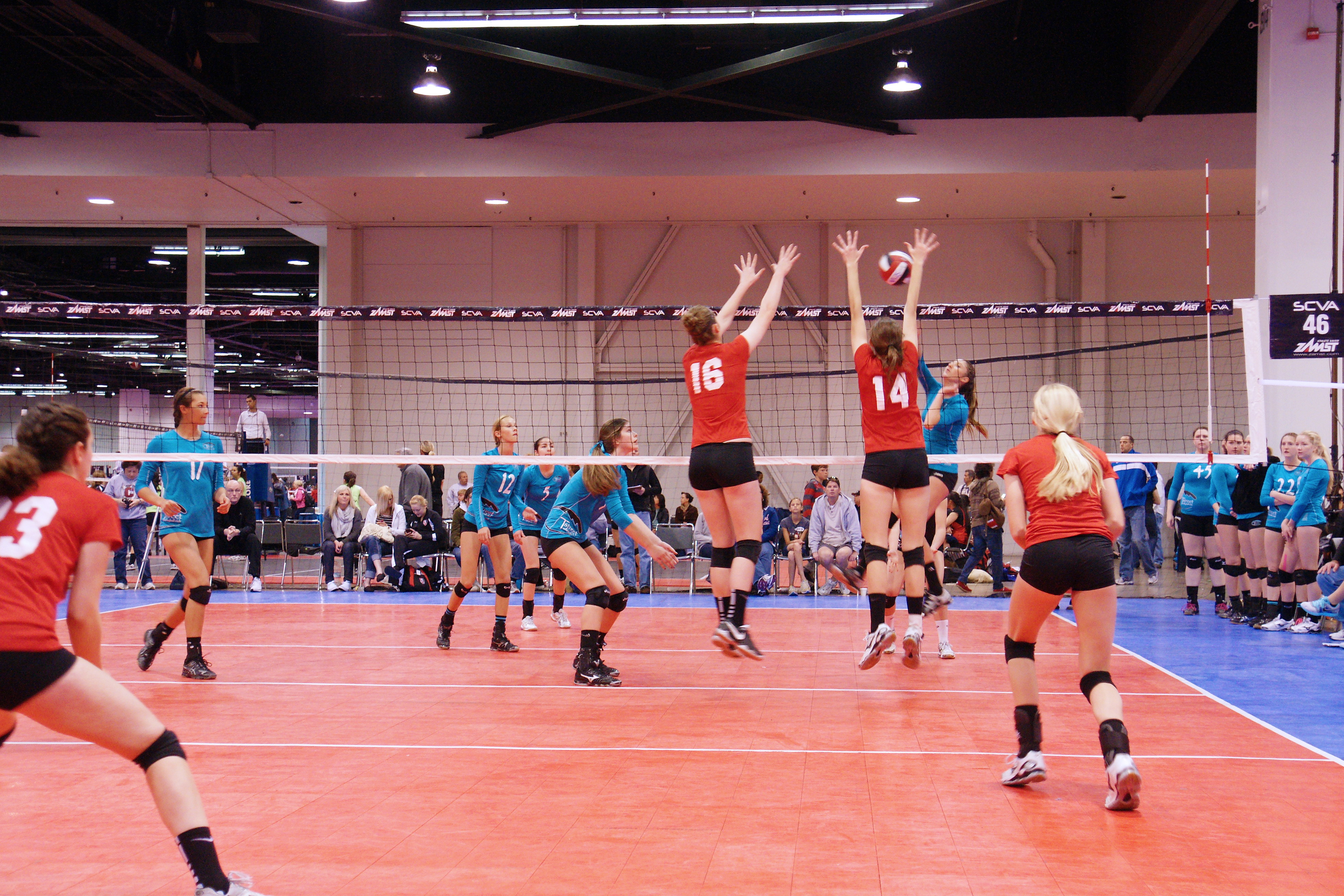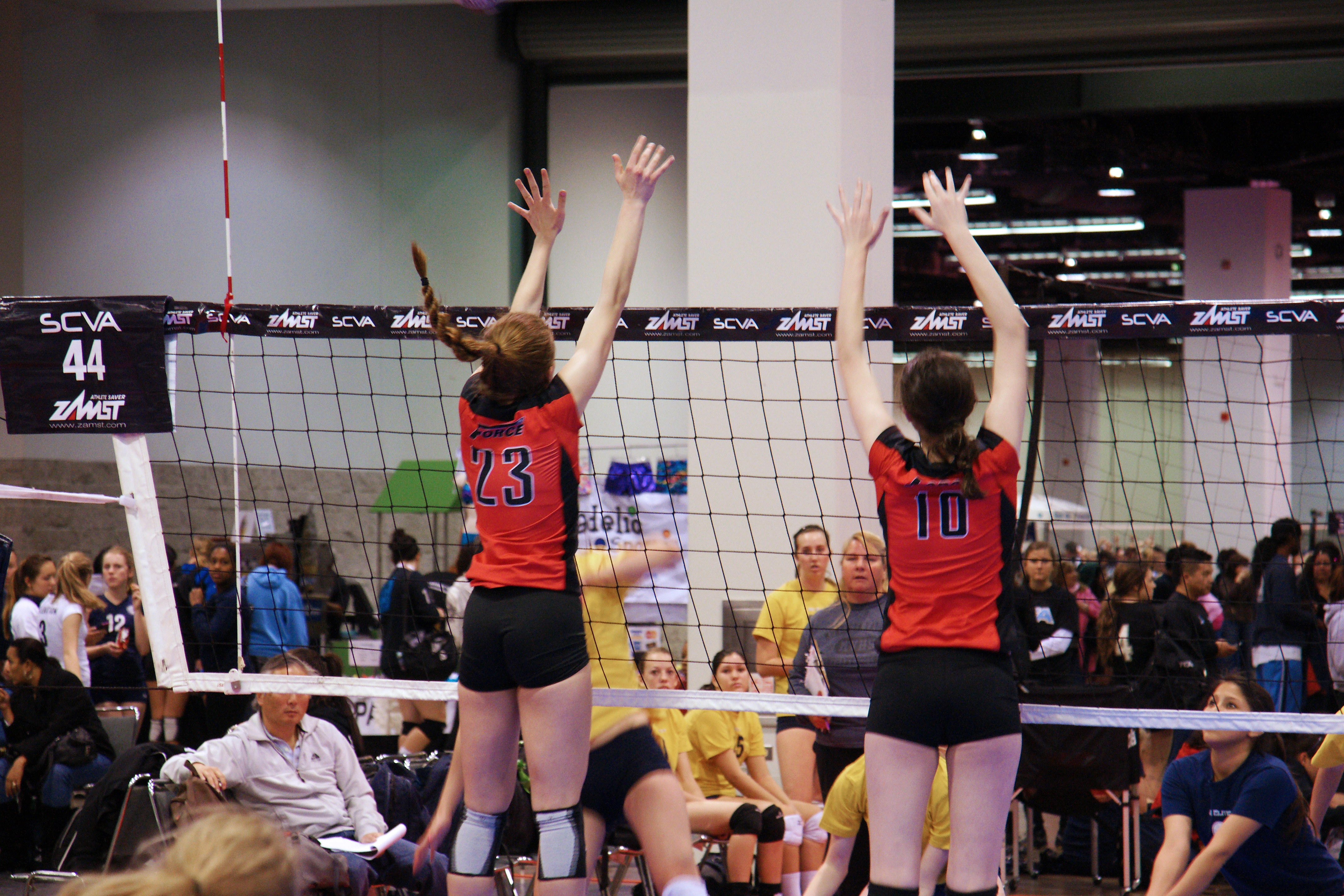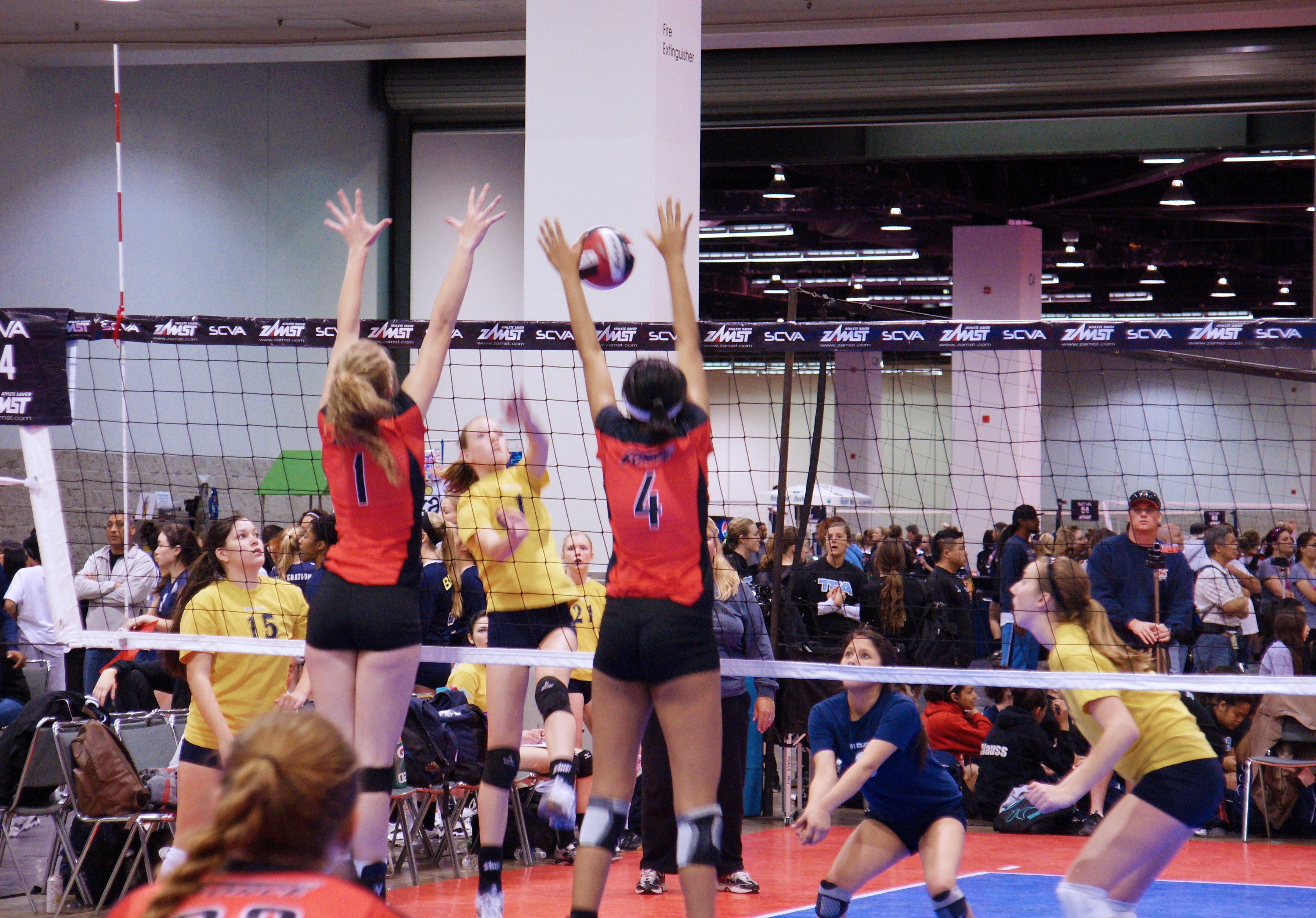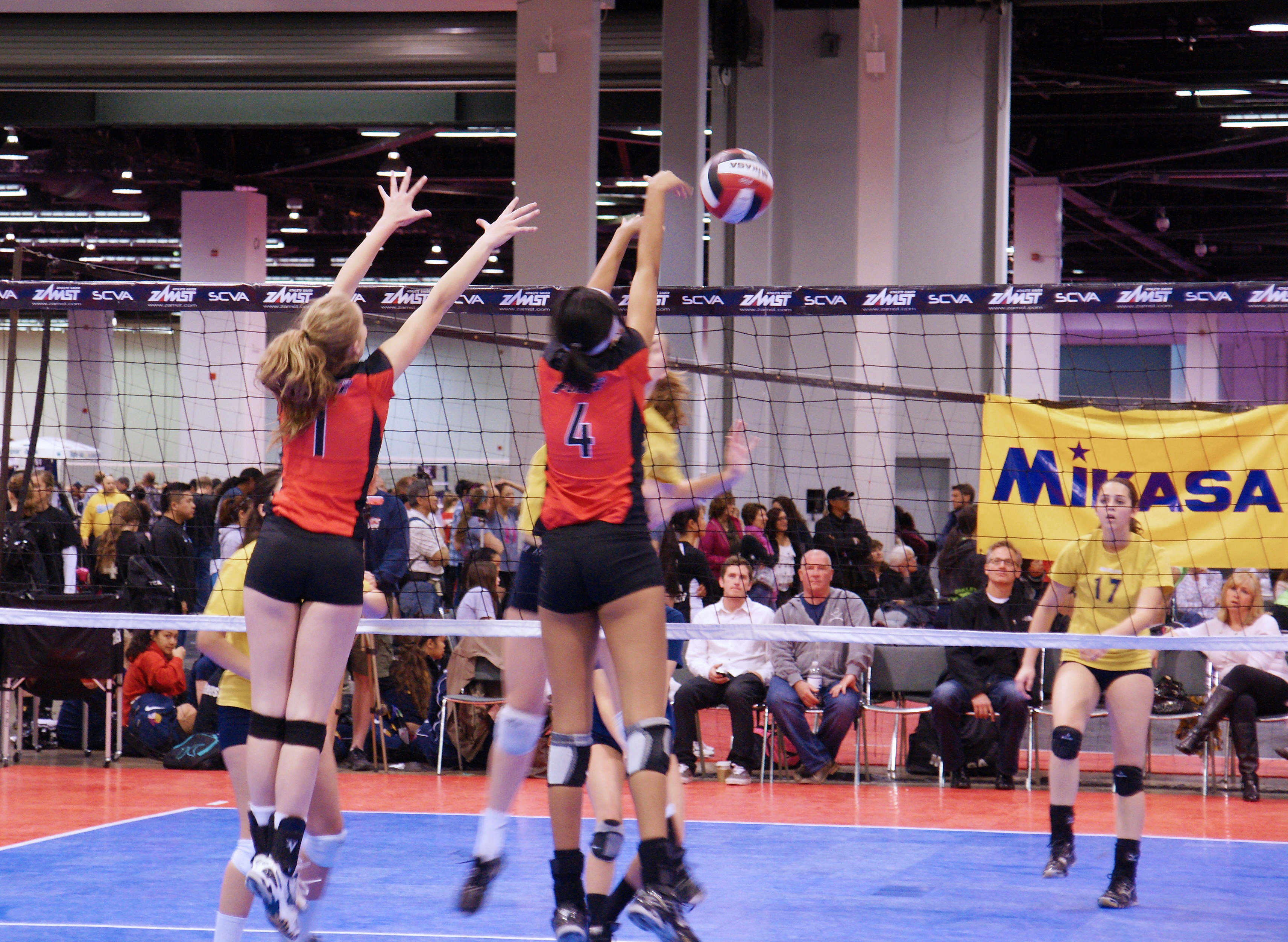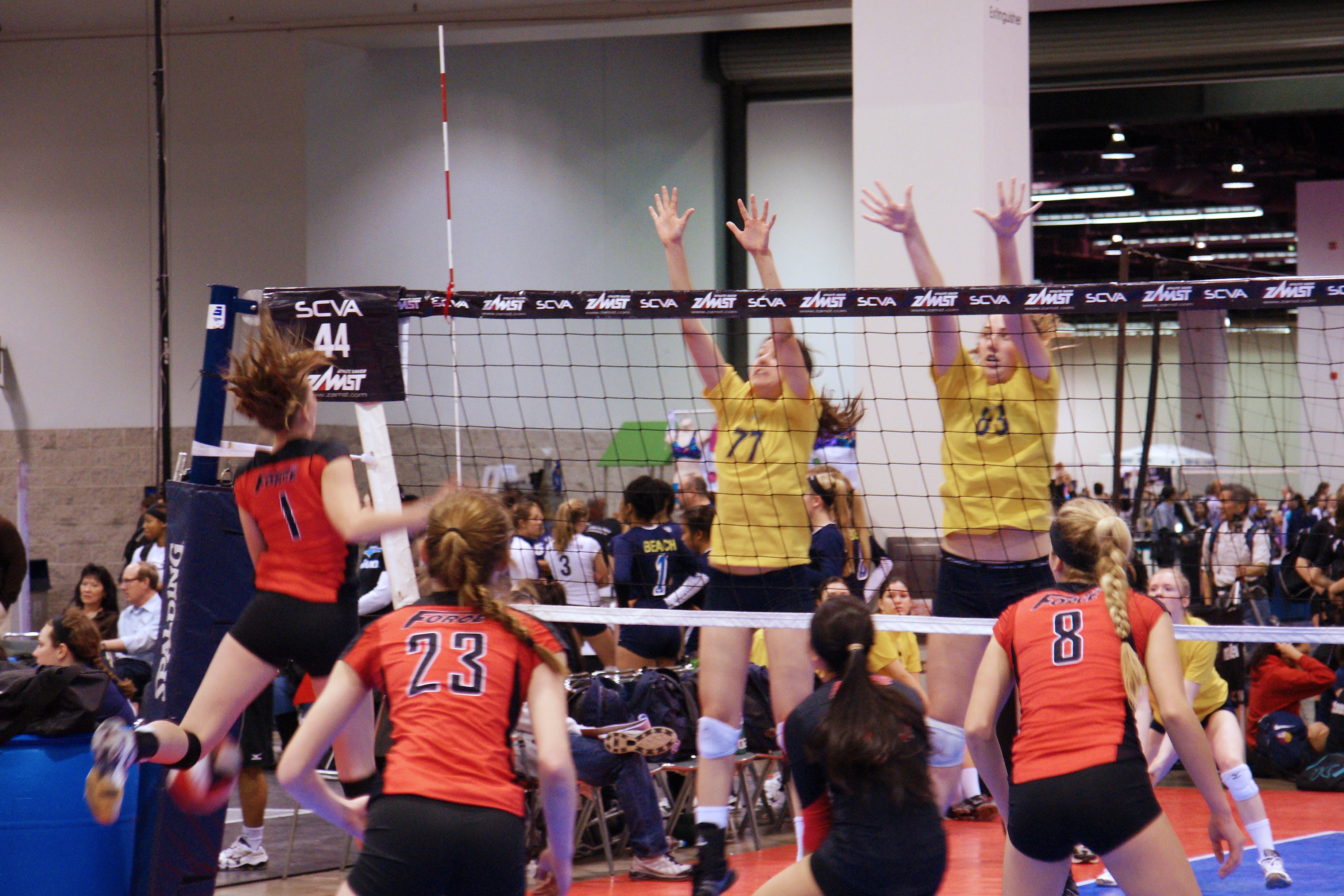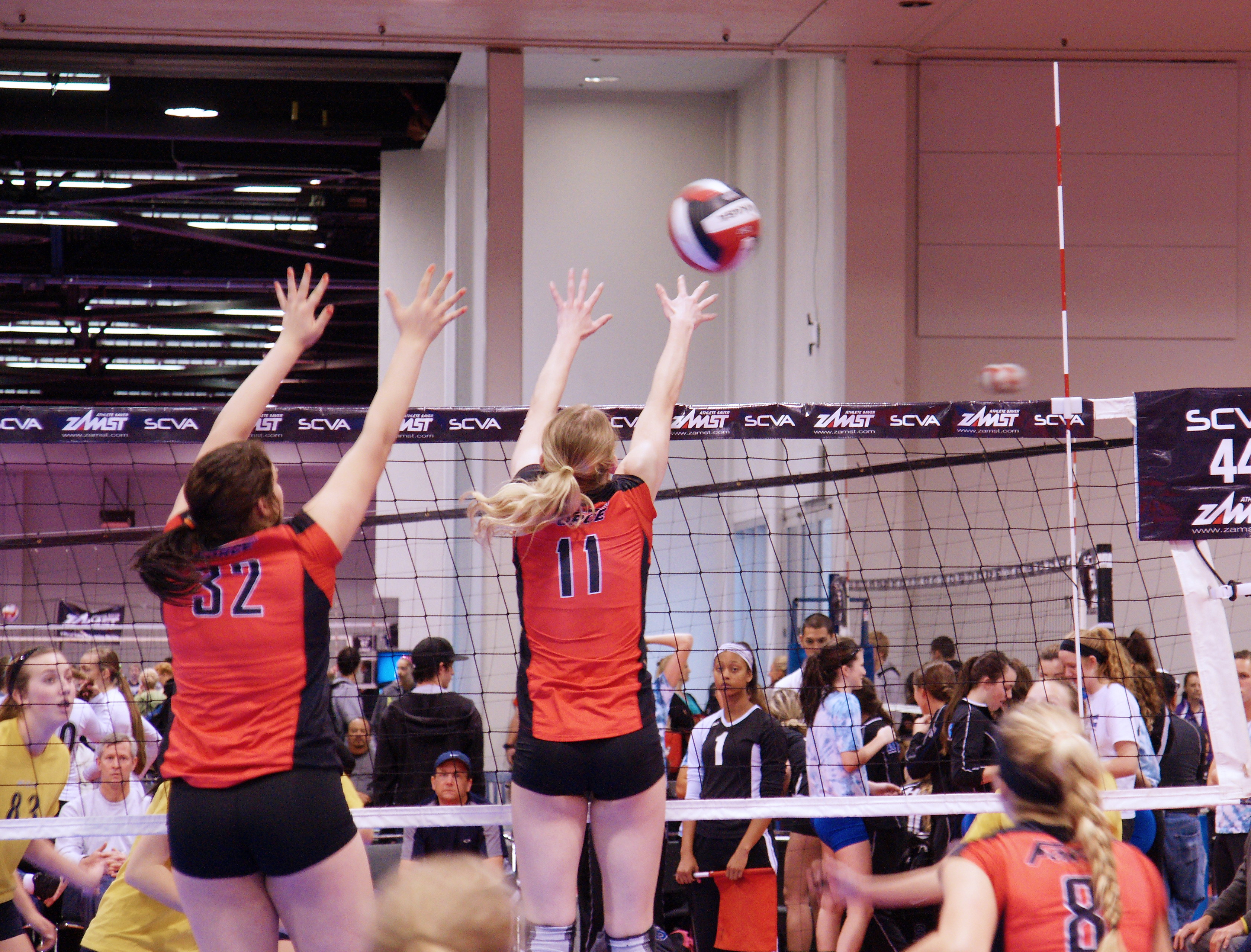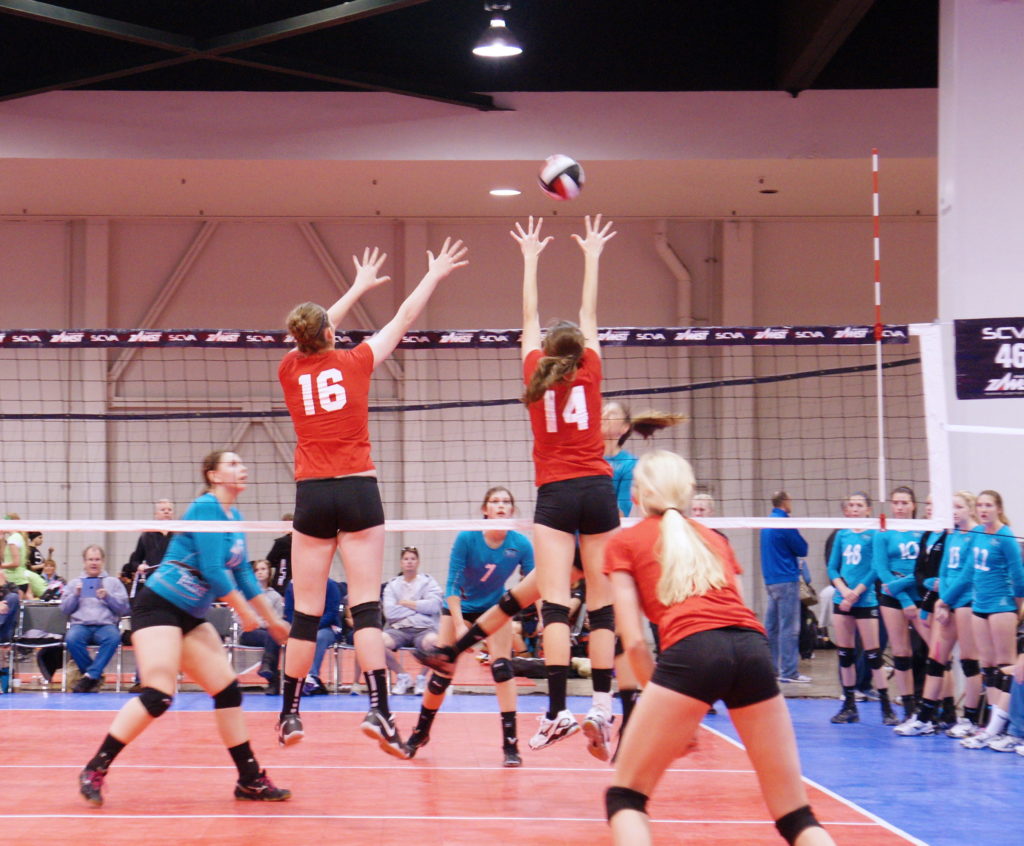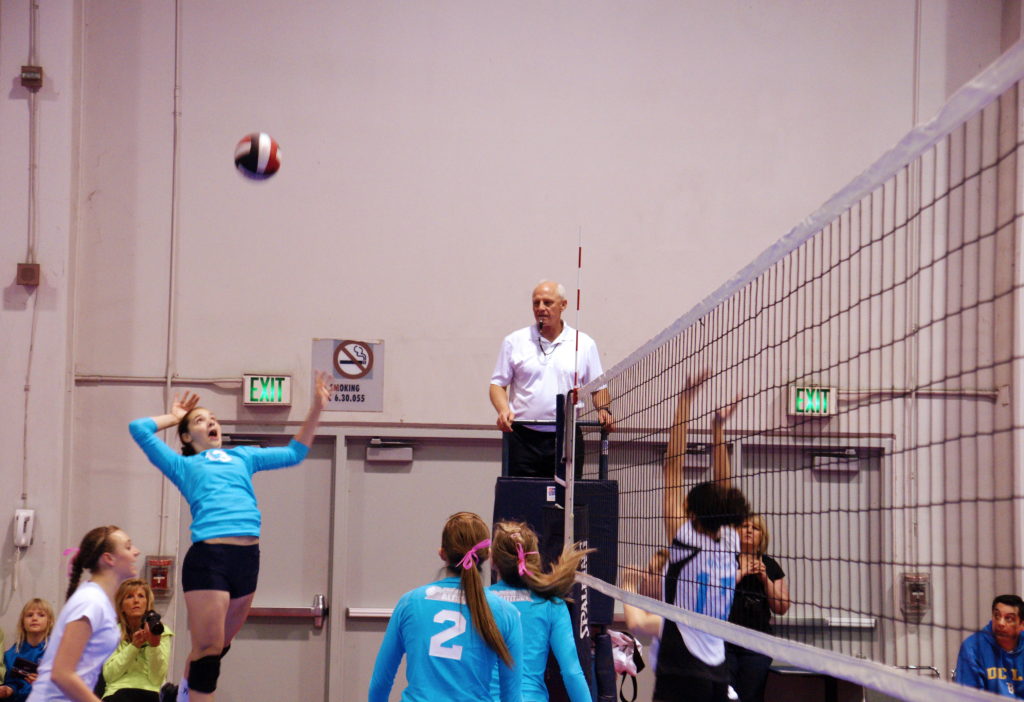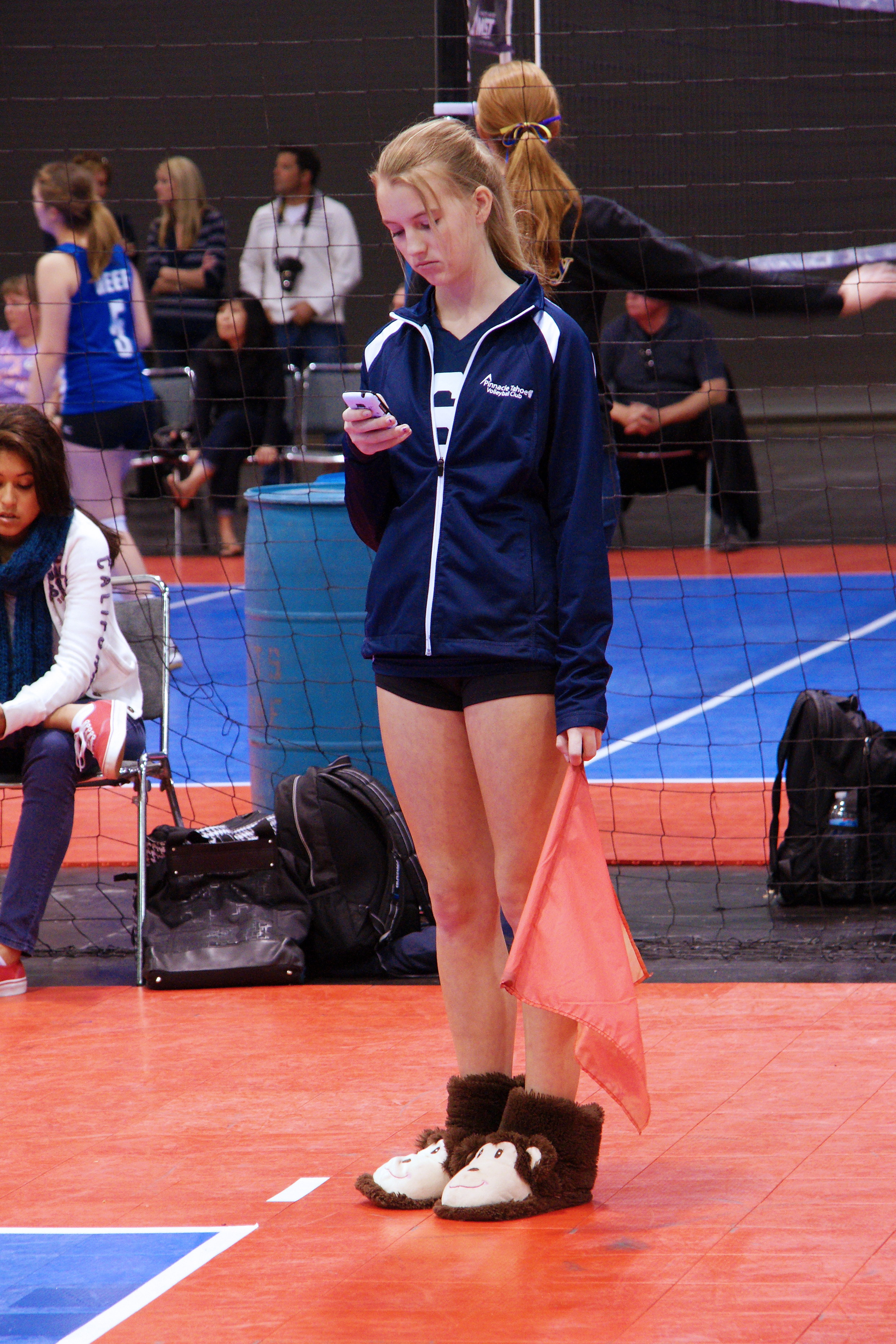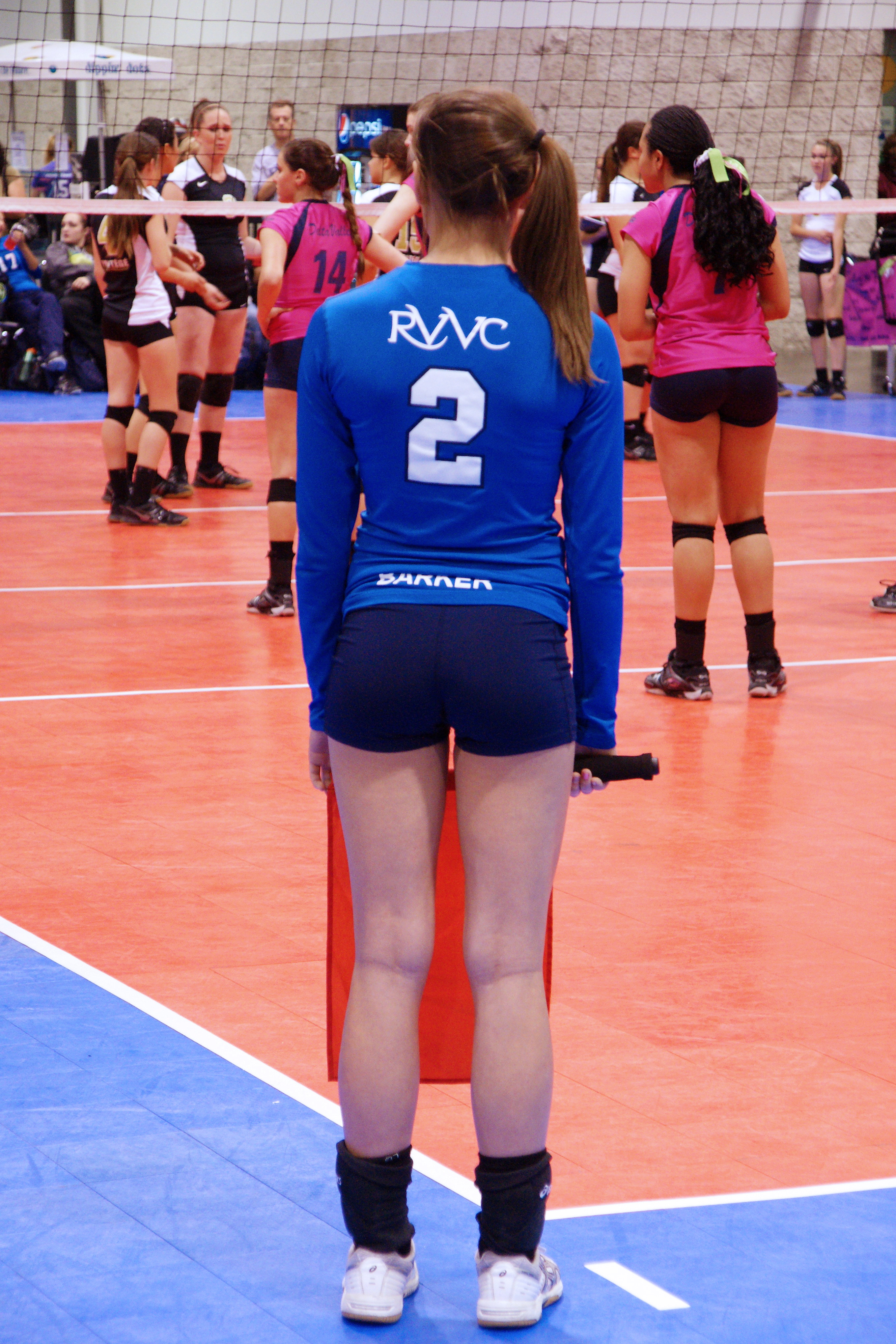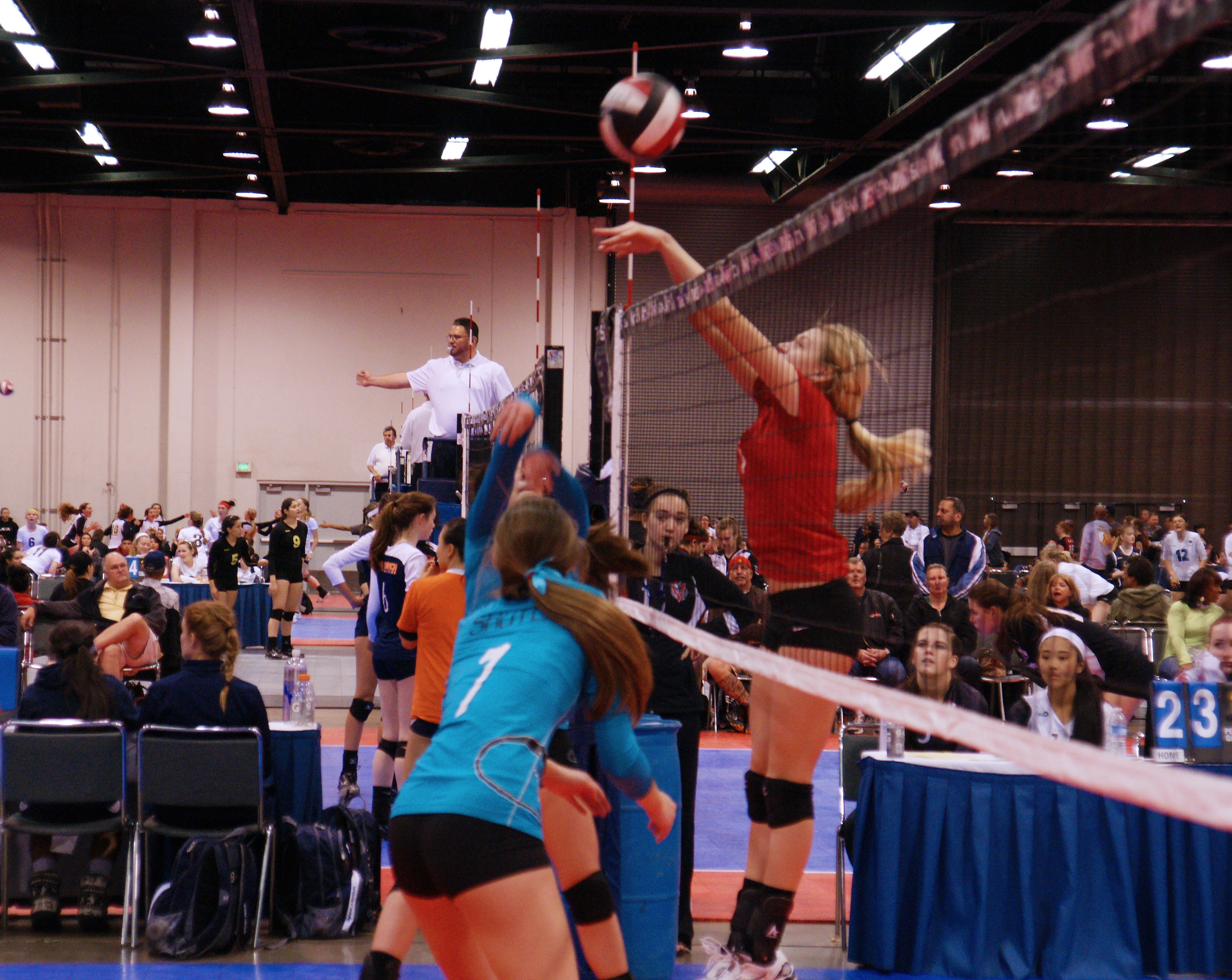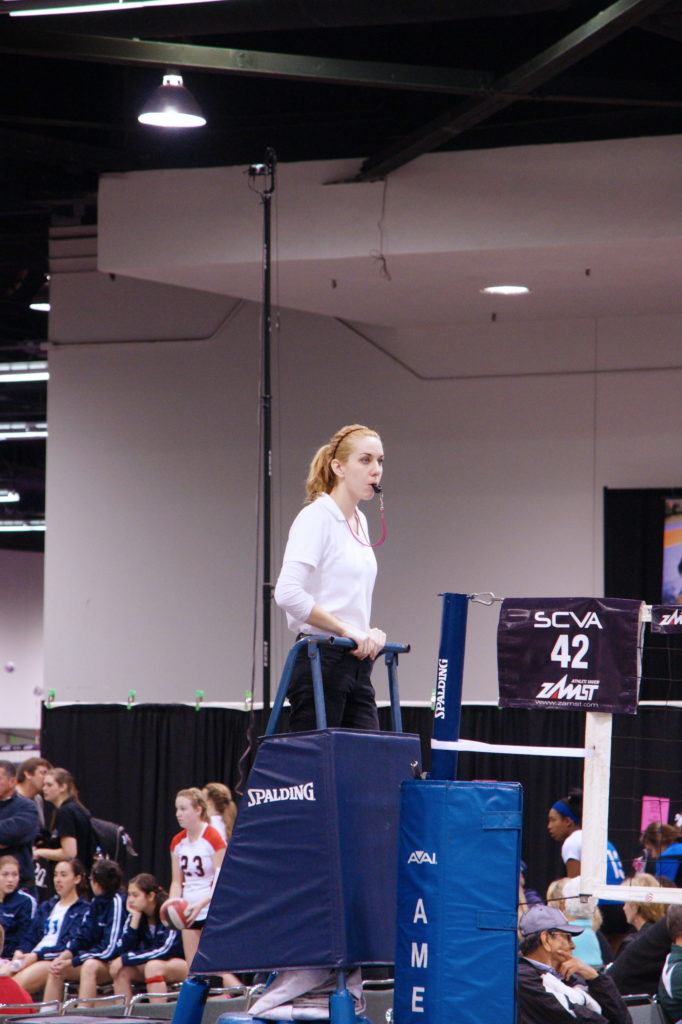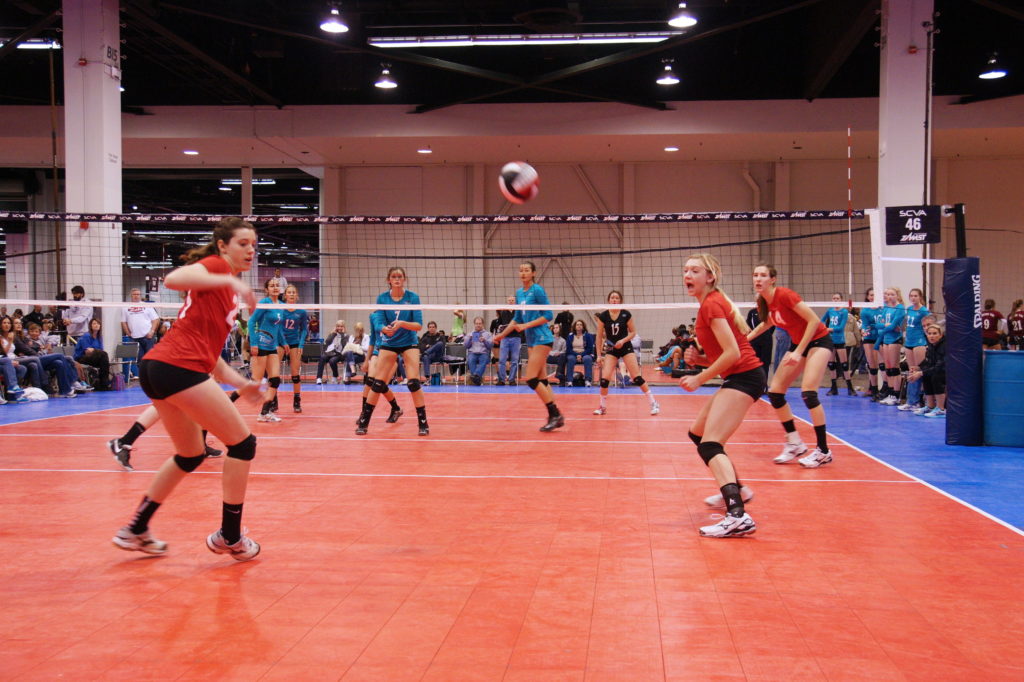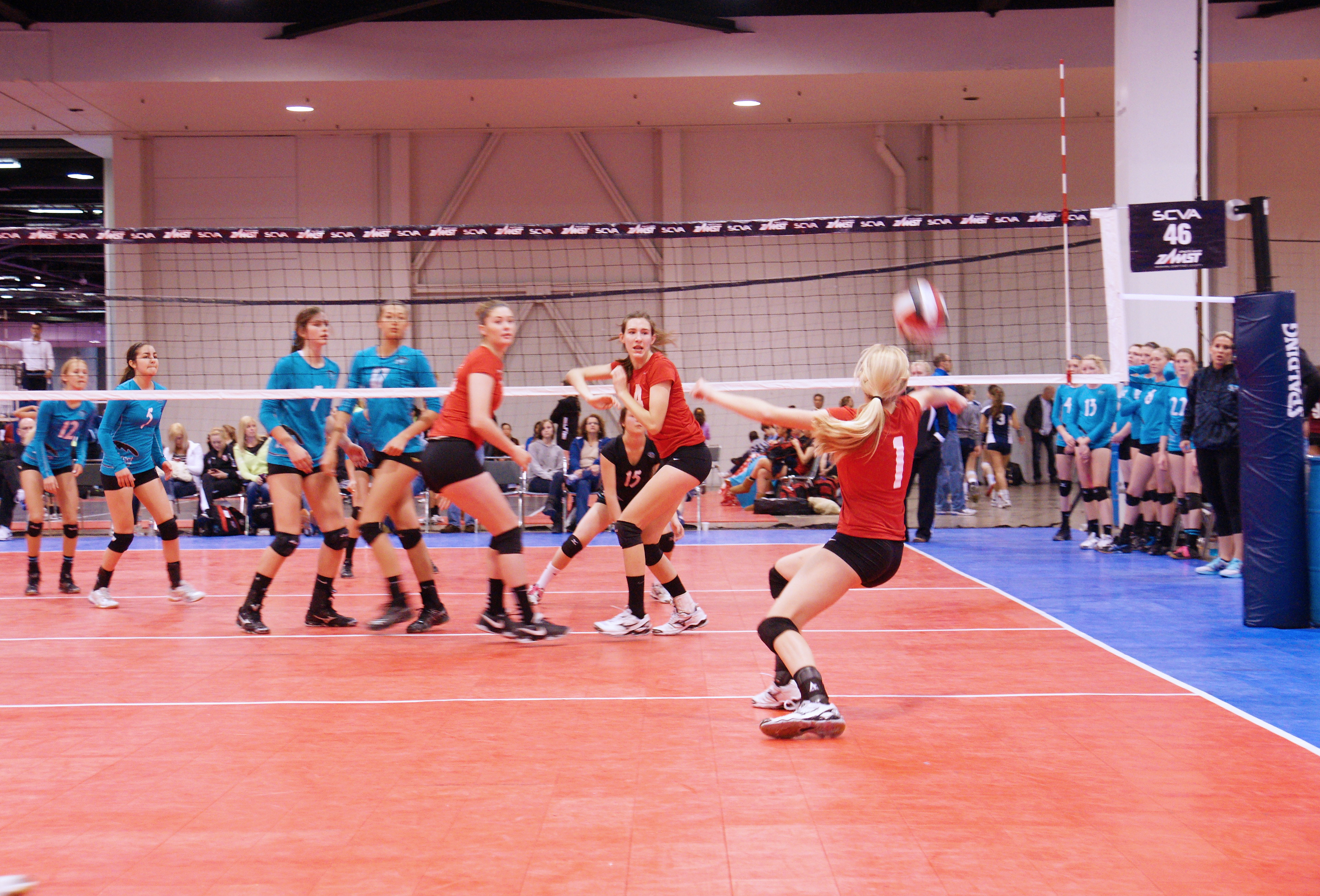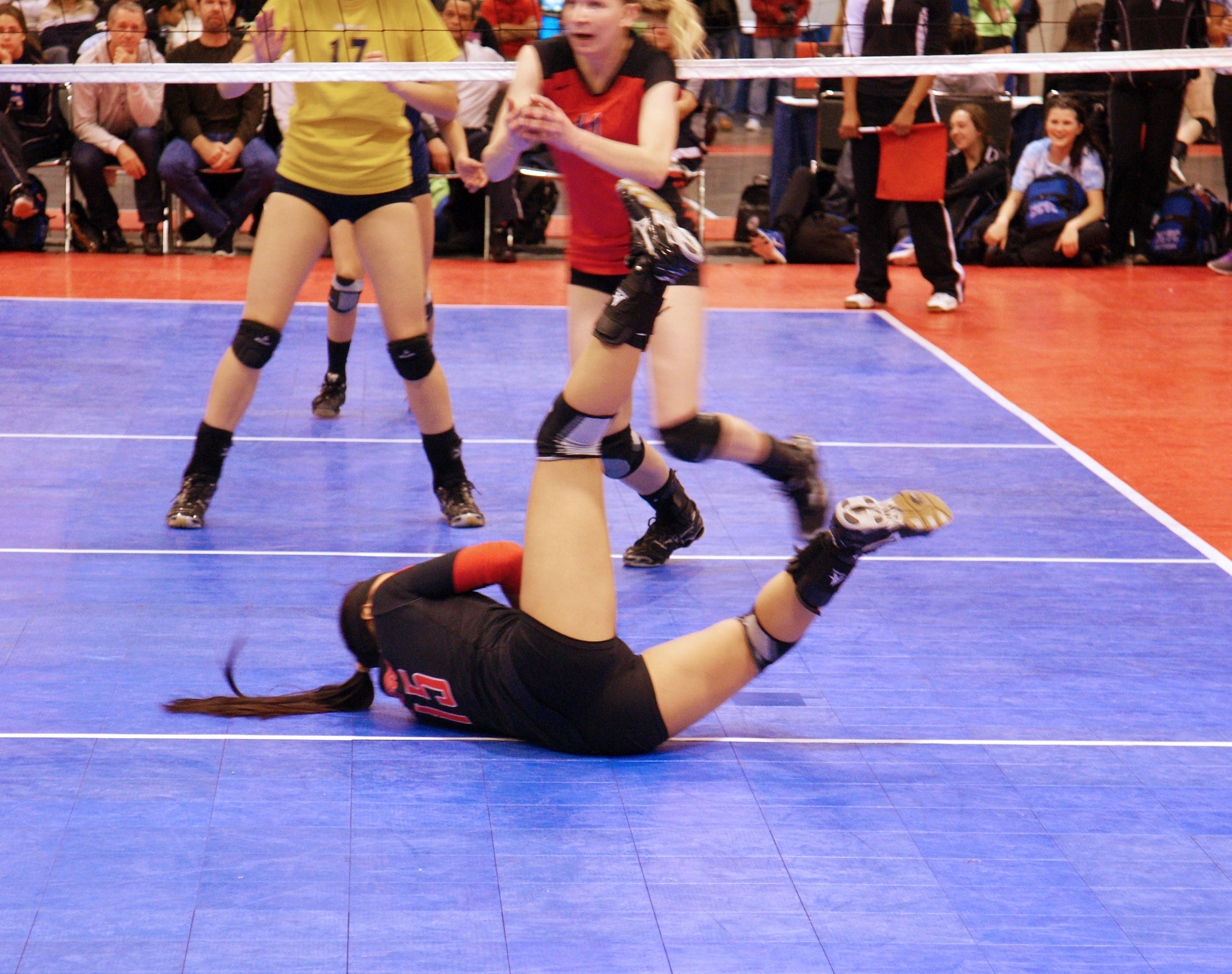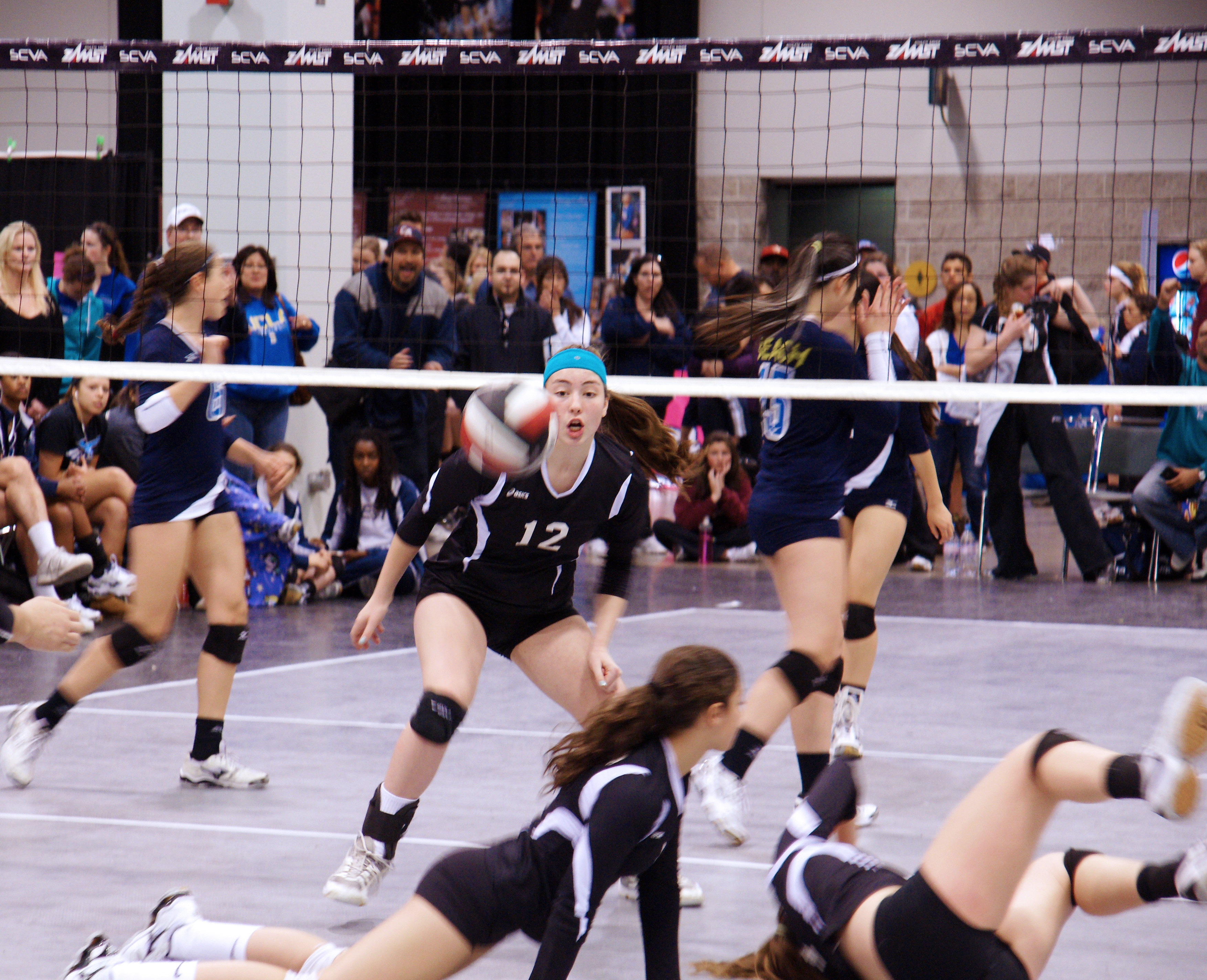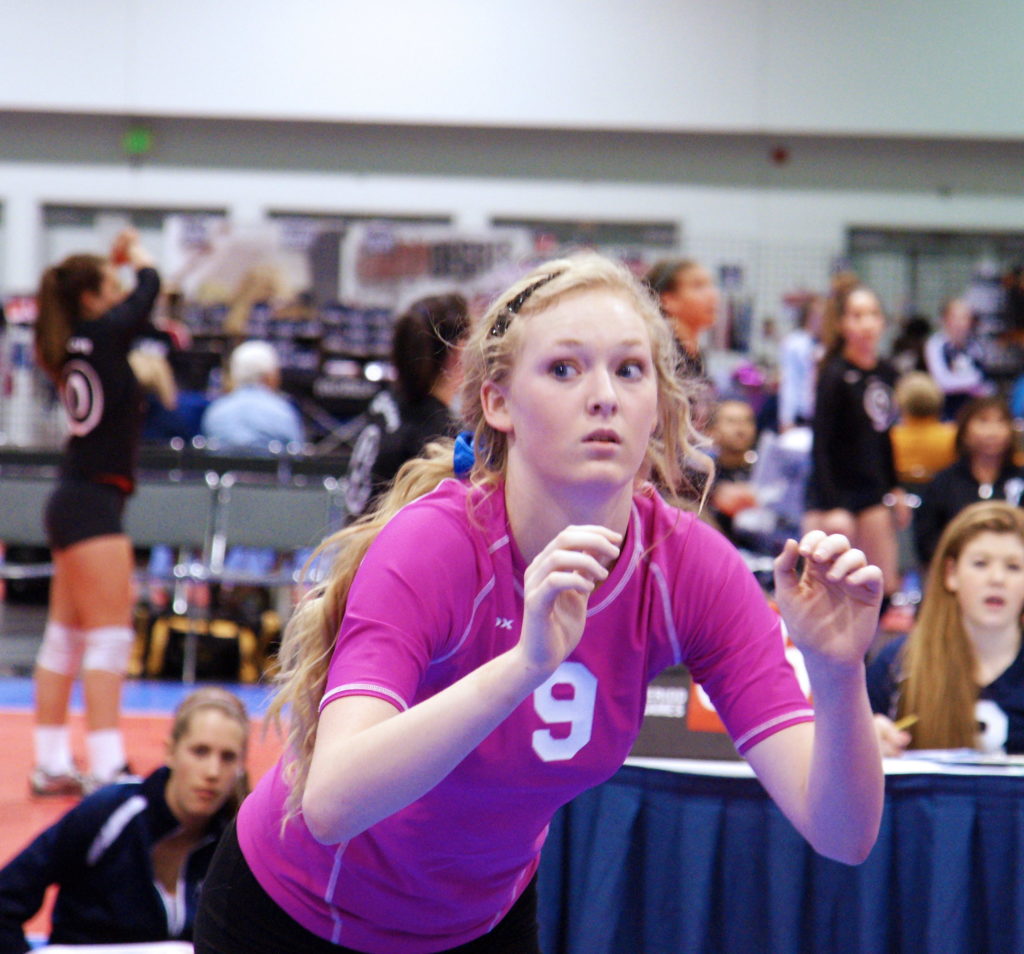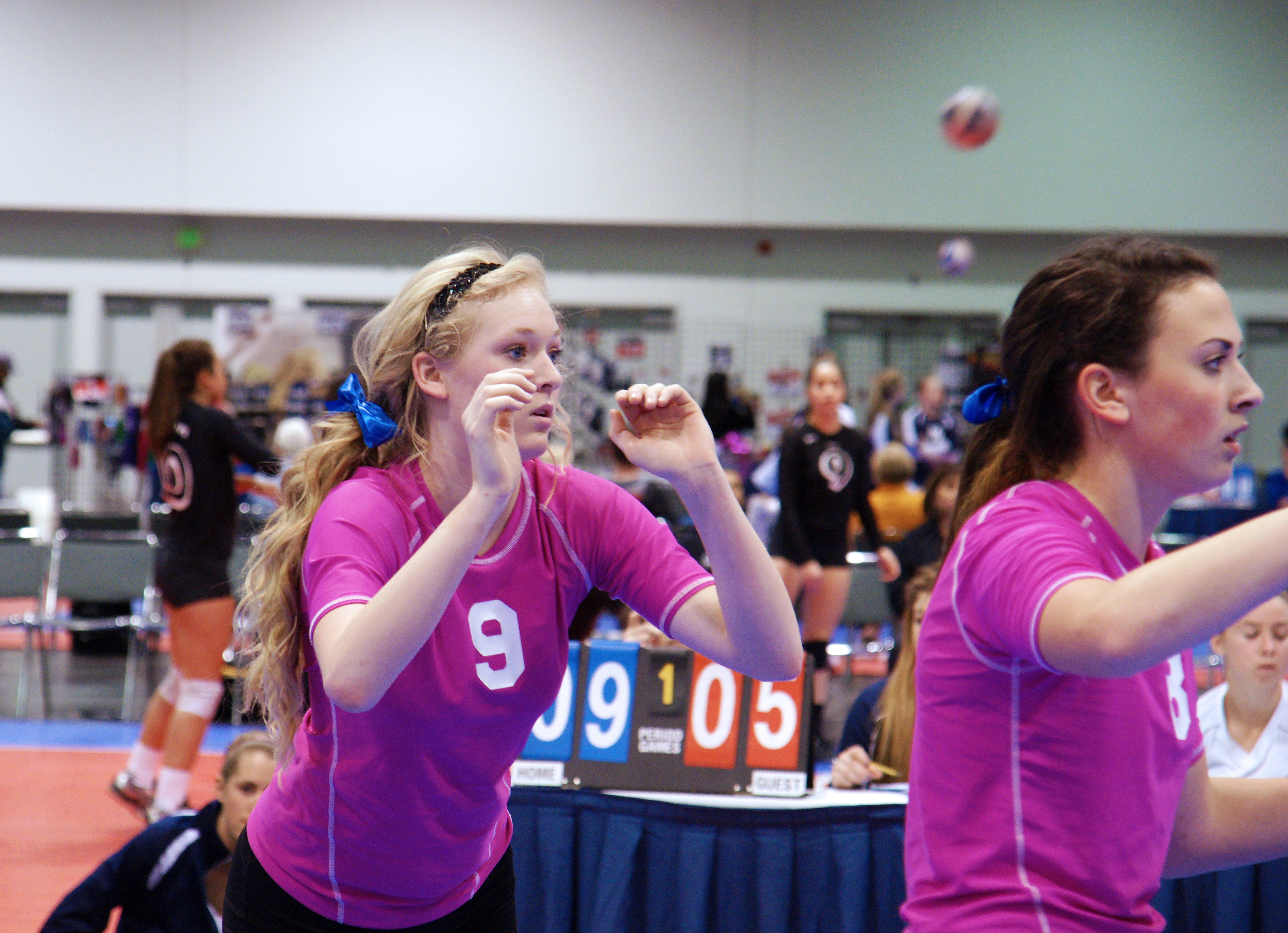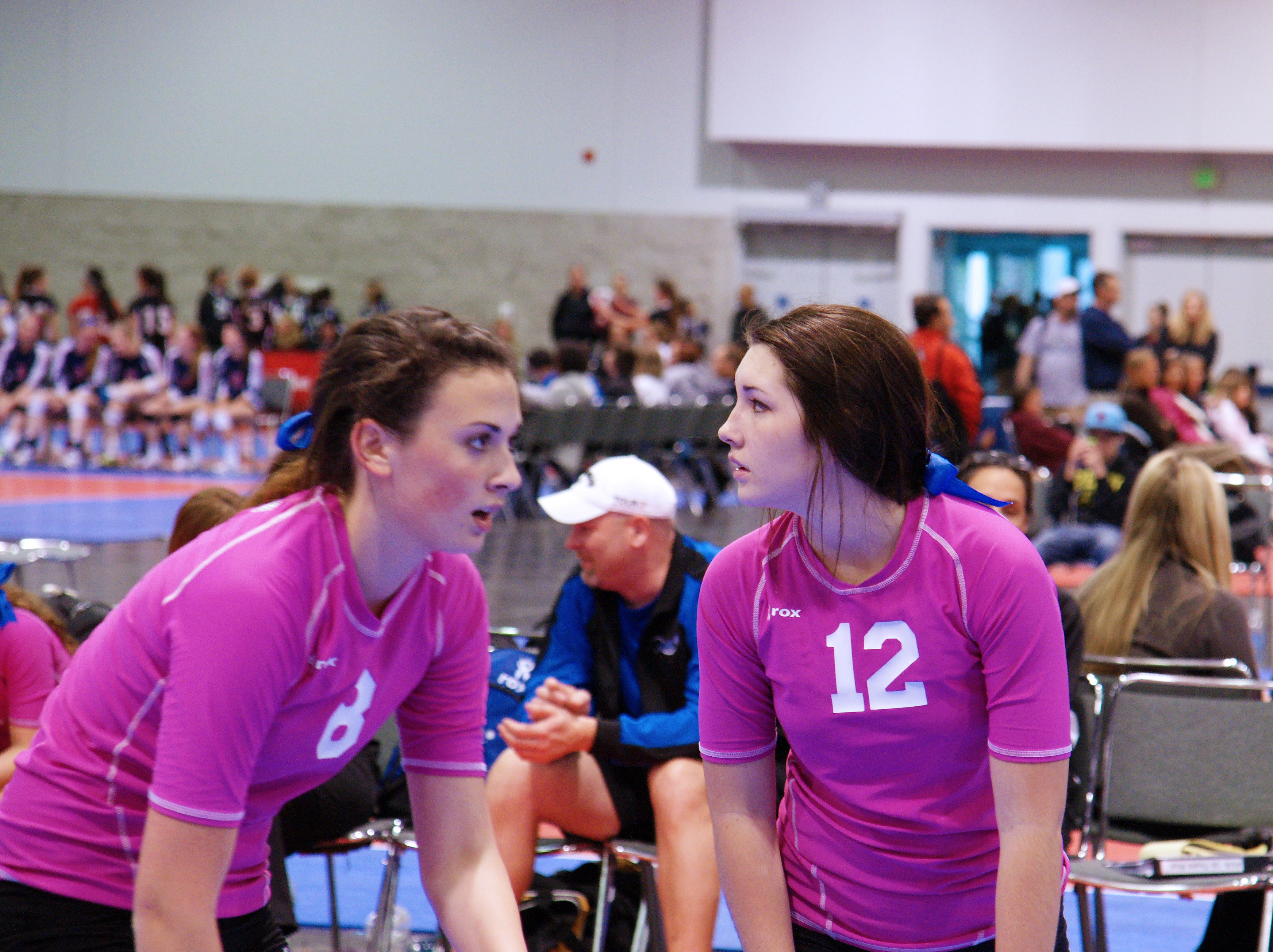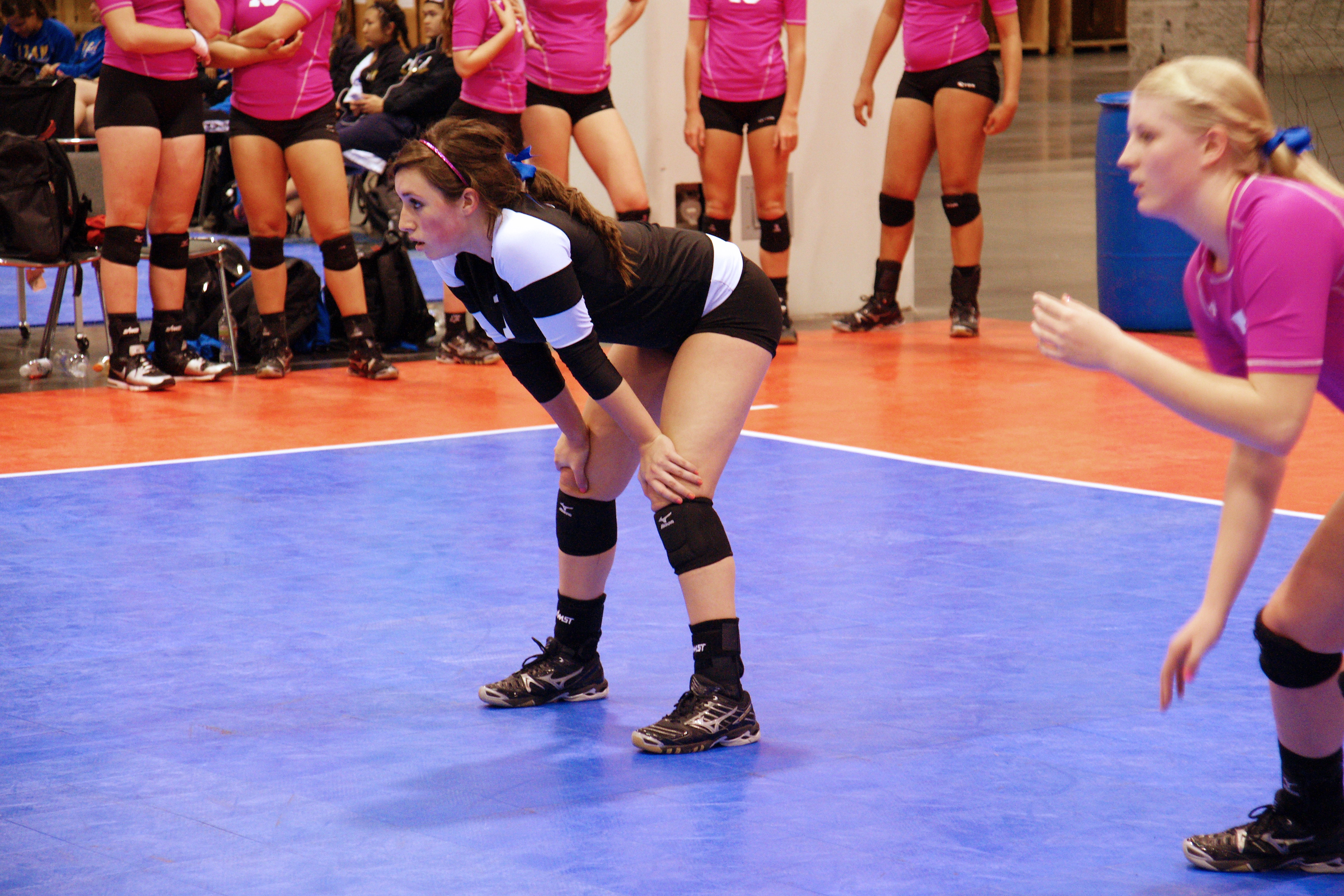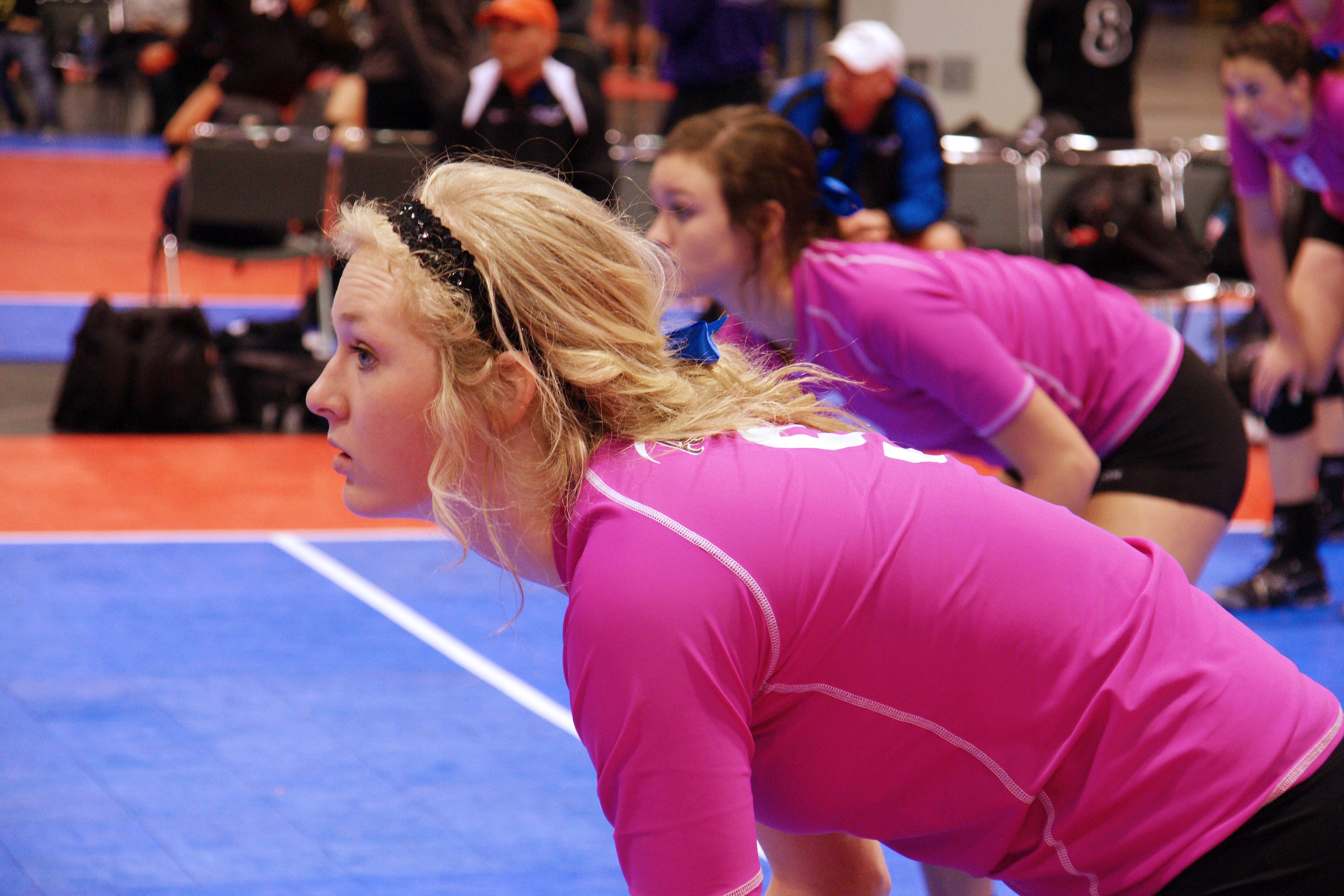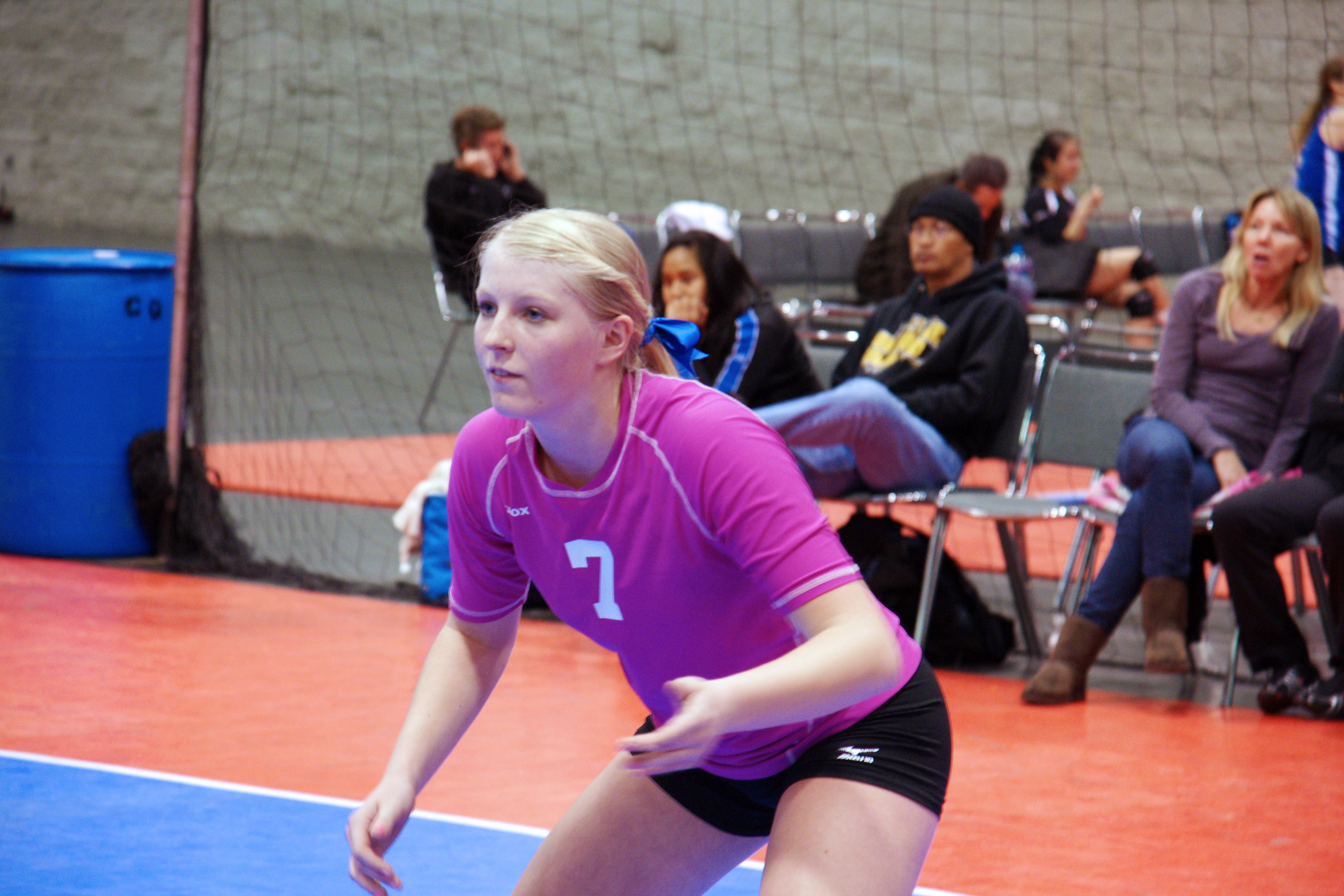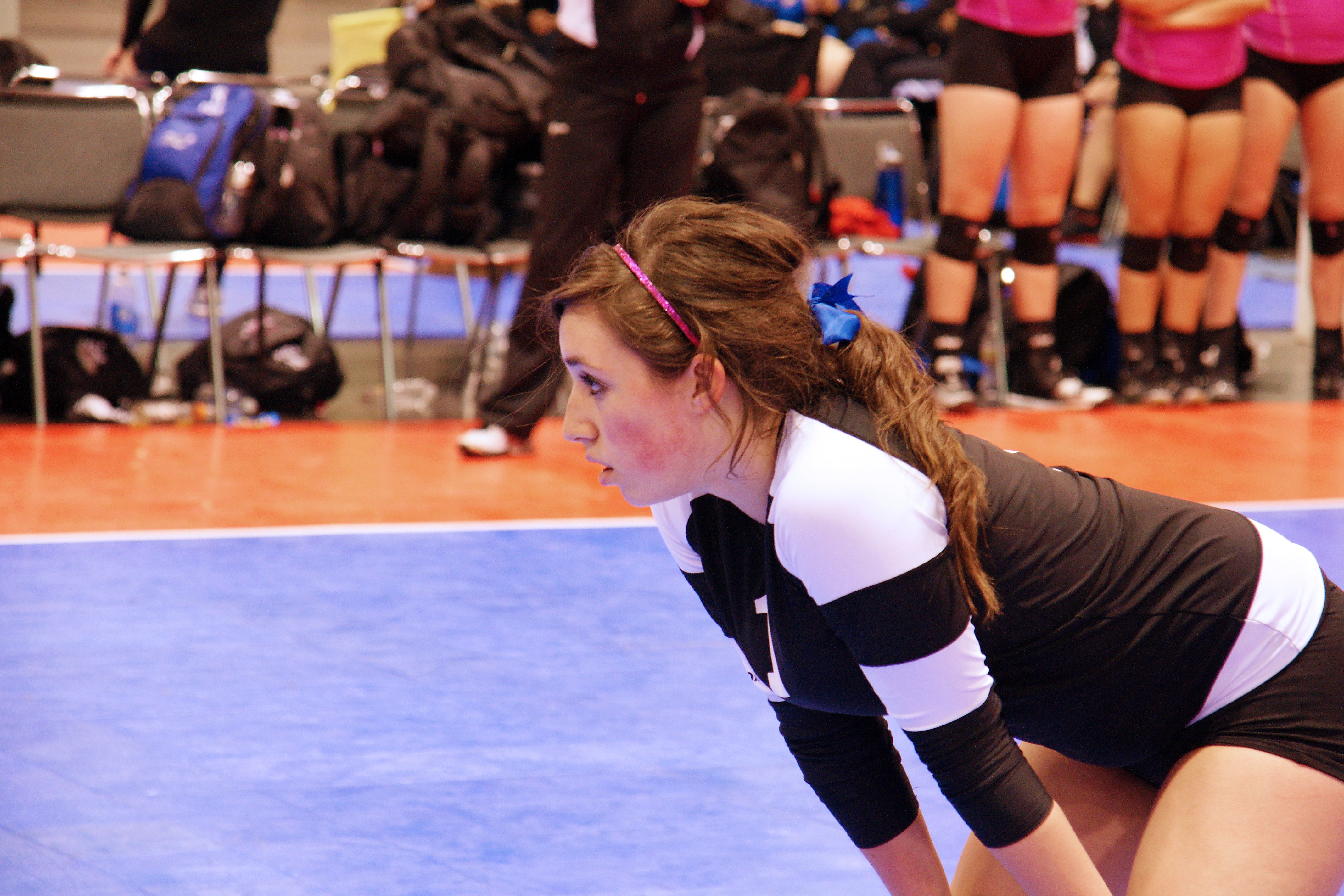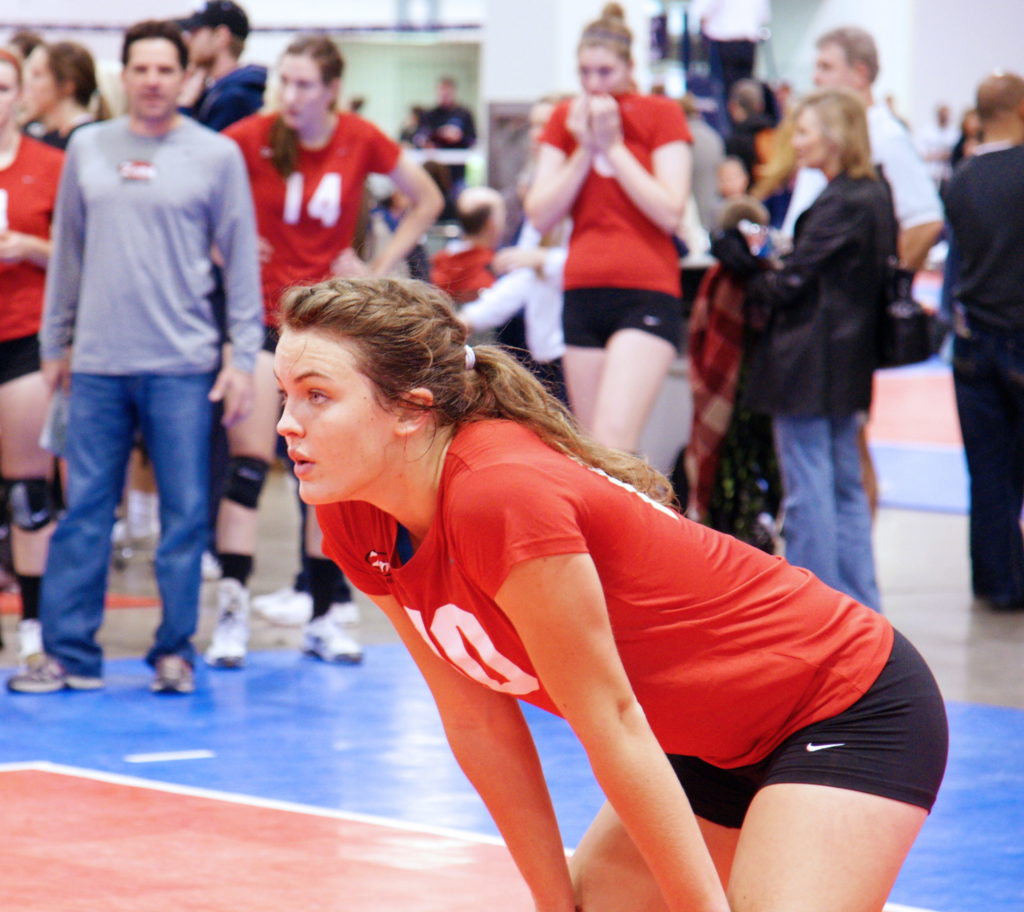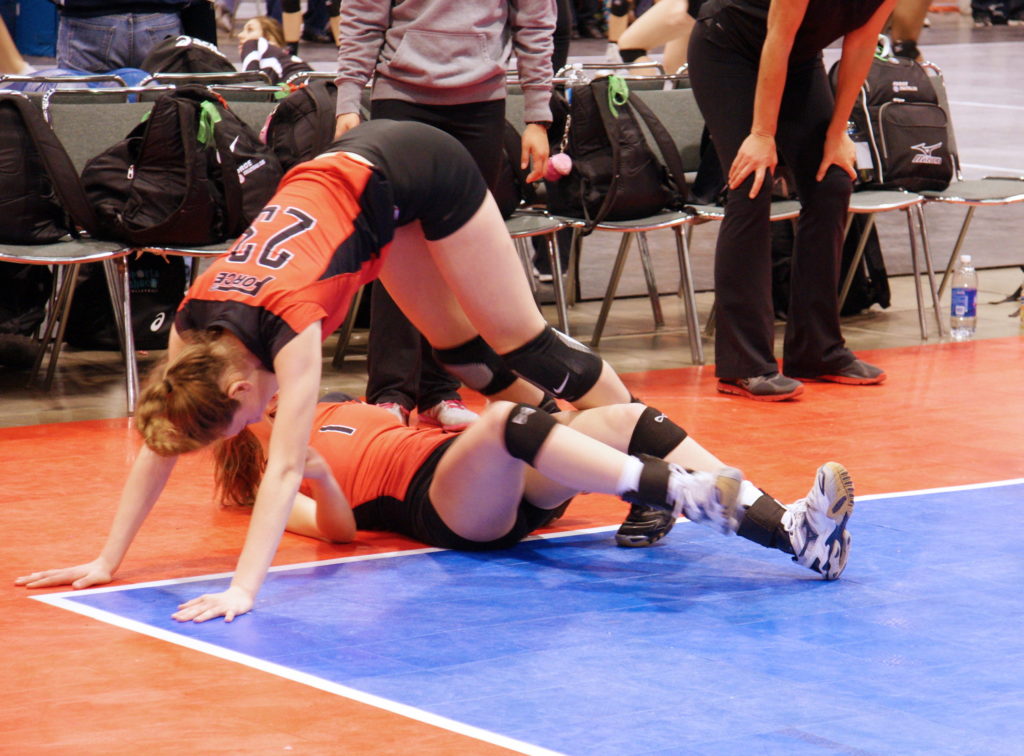The Southern California Volleyball Association (SCVA) is a non-profit organization affiliated with USA Volleyball – the national governing body for amateur volleyball. The primary objective of the SCVA is to furnish an opportunity for volleyball players to participate in an organized schedule of tournament play.
And since we live in southern California, we are attending one of the SCVA matches. 😉
These matches are much more intense than beach volleyball matches. “The participants involved in SCVA usually have had previous experience with volleyball at a club, high school, or collegiate level. Different divisions within each program allow the Program Coordinator to equalize the draw, allowing teams of equal strength to compete against one another.” Meaning, even though the players are not professional athletes, their level of skill is considerable.
In case you have never played or seen a volleyball game: Volleyball is a team sport in which two teams of six players are separated by a net. A player on one of the teams begins a ‘rally’ by serving the ball (tossing or releasing it and then hitting it with a hand or arm), from behind the back boundary line of the court, over the net, and into the receiving team’s court. The receiving team must not let the ball be grounded within their court. The team may touch the ball up to 3 times, but individual players may not touch the ball twice consecutively. Typically, the first two touches are used to set up for an attack, an attempt to direct the ball back over the net in such a way that the serving team is unable to prevent it from being grounded in their court.
The rally continues, with each team allowed as many as three consecutive touches, until either (1): a team makes a kill, grounding the ball on the opponent’s court and winning the rally; or (2): a team commits a fault and loses the rally. The team that wins the rally is awarded a point and serves the ball to start the next rally. A few of the most common faults include:
causing the ball to touch the ground or floor outside the opponent’s court or without first passing over the net;
catching and throwing the ball;
double hit: two consecutive contacts with the ball made by the same player;
four consecutive contacts with the ball made by the same team;
net foul: touching the net during play;
foot fault: the foot crosses over the boundary line when serving.
The ball is usually played with the hands or arms, but players can legally strike or push (short contact) the ball with any part of the body.
There. We got that out of the way. 😀
Planning
Volleyball is essentially a game of transition from one skills to the next, with choreographed team movement between plays on the ball. These team movements are determined by the teams chosen serve receive system, offensive system, coverage system, and defensive system.
As with any team sport, communication is key to success. Unlike American football, however, the team does not need to communicate between each play, but has an overall understanding that stays with them during the match.
A good coach knows the team and inspires them.
Coaches must be critical thinkers, not protectors of the status quo.” — Mike Herbert
Preparation
There are very specific positions for both teams in preparing for the serve.
The defensive team spreads out across the court, unsure of where the serve will direct the ball. The offensive team assumes their opponents will return the ball by spiking it, and congregate in the center near the net.
Notice how the team members backup other team members. Once the ball is in play, there is not much room for error.
“Volleyball is a game of intuition. Imagination. Improvisation. But most of all, of reciprocity. Of teamwork. There is no way to freelance in volleyball.” — Marv Dunphy
The Serve
Rule changes enacted in 2000 include allowing serves in which the ball touches the net, as long as it goes over the net into the opponent’s court. Also, the service area was expanded to allow players to serve from anywhere behind the end line but still within the theoretical extension of the sidelines.
A player stands behind the inline and serves the ball, in an attempt to drive it into the opponent’s court. The main objective is to make it land inside the court; it is also desirable to set the ball’s direction, speed and acceleration so that it becomes difficult for the receiver to handle it properly. A serve is called an “ace” when the ball lands directly onto the court or travels outside the court after being touched by an opponent; when the only player on the server’s team to touch the ball is the server.
In contemporary volleyball, many types of serves are employed: underhand, sky ball serve, topspin, float, jump serve, and jump float.
Once the ball has been served, the defenders must return the ball.
The Return
You will find different figures on the internet, but it’s safe to say that a volleyball serve can travel in excess of 100kph, or more than 90 feet per second. Since a court is only 59 feet in length (18 meters), the defenders have less than a second to react.
And now you understand why the ball is often blurry in photographs of volleyballs being served.
Notice that the return of a serve is frequently done with the forearms. Together, they offer a larger surface than the hands, and can probably withstand the impact better.
“Once you get the taste of ruining somebody’s great hit, it stays with you. And it changes the game. A great defensive play is worth about five points in emotion.” – Caren Kemner
The Dig
There is another type of return called the dig.
Digging is the ability to prevent the ball from touching one’s court after a spike or attack, particularly a ball that is nearly touching the ground. “It is especially important while digging for players to stay on their toes.”
A player may sometimes perform a “dive”, i.e., throw their body in the air with a forward movement in an attempt to save the ball, and land on their chest. When the player also slides their hand under a ball that is almost touching the court, this is called a “pancake”. The pancake is frequently used in indoor volleyball, but rarely if ever in beach volleyball because the uneven and yielding nature of the sand court limits the chances that the ball will make good, clean contact with the hand. When used correctly, it is one of the more spectacular defensive volleyball plays.
Sometimes a player may also be forced to drop their body quickly to the floor to save the ball. In this situation, the player makes use of a specific rolling technique to minimize the chances of injuries.
The Set
The set is usually the second contact that a team makes with the ball. The main goal of setting is to put the ball in the air in such a way that it can be driven by an attack into the opponent’s court.
Although the player appears to be holding the ball, she is not. Rather, she is gently pushing it with her fingertips, giving precise control to the ball’s placement.
You can see the amazing ability of these players to precisely find the intersection point between a moving ball and their hand.
“Be a leader. A setter should be high energy. It’s important that you learn how to give positive, constructive criticism. It’s crucial that you make your teammates feel comfortable. You should never be the most silent player in the gym.” — Lindsey Berg
The Spike
“The object of attacking is to handle the ball so that it lands on the opponent’s court and cannot be defended.” Yeah, but it’s a little more exciting than that.
The hitter uses arm swing, wrist snap, and a rapid forward contraction of the entire body to drive the ball.
Volleyball comprises a number of attacking techniques: backcourt (or back row), line and cross-court shot, dip/dink/tip/cheat/dump, tool/wipe/block-abuse, off-speed hit, quick hit/ “one”, slide, and double quick hit/ “stack” / “tandem”.
While one team is spiking the ball, then other team is blocking the attack.
Blocking
A well-executed offensive block is performed by jumping and reaching to penetrate with one’s arms and hands over the net and into the opponent’s area.
A block that is aimed at completely stopping an attack, thus making the ball remain in the opponent’s court, is called offensive. By contrast, it is called a defensive, or “soft” block if the goal is to control and deflect the hard-driven ball up so that it slows down and becomes easier to defend. A well-executed soft-block is performed by jumping and placing one’s hands above the net with no penetration into the opponent’s court and with the palms up and fingers pointing backwards.
The jump should be timed so as to intercept the ball’s trajectory prior to it crossing over the plane of the net. Palms are held deflected downward roughly 45–60 degrees toward the interior of the opponent’s court. A “roof” is a spectacular offensive block that redirects the power and speed of the attack straight down to the attacker’s floor as if the attacker hit the ball into the underside of a peaked house roof. Successful blocking does not always result in a “roof” and many times does not even touch the ball. While it is obvious that a block was a success when the attacker is roofed, a block that consistently forces the attacker away from their ‘power’ or preferred attack into a more easily controlled shot by the defense is also a highly successful block.
“Effective blockers are unquestionably the keystone of a successful defense.” — Don Shondell
Referee
A volleyball match is presided over by a first referee, who observes action from a stand, providing a clear view of action above the net and looking down into the court. The second referee, who assists the first referee, is at floor level on the opposite side of the net—and in front of the scorers’ table. They are often referred to informally as the “up referee” and “down referee,” respectively. While the first referee watches over actions involving the ball (and thus the attacking team), the second referee usually judges errors committed by the defending team, like touching the net.
It is the first referee that starts play by whistling and signaling (beckoning) the server to serve the ball.
The second referee’s main responsibility is to manage the court, that is, communicate effectively with players and coaches at the team bench area, the work crew at the scores table, the line judges, and first referee. The second referee should assist the first referee (hand signaling the first referee or blowing the whistle to make calls) in order for the match to run as smoothly as possible.
The first referee is the official in charge. If they feel it’s necessary to do so, the first referee has the authority to overrule any of the other officials (second referee scorekeeper, libero (a player specialized in defensive skills) tracker, or line judges). Also, the first referee may have officials replaced if it is needed.
Oops
Of course, there are winners and there are losers, and sometimes the ball hits the ground.
When one team hits the ball where the other team isn’t, well, that’s the way the ball bounces.
Each side of the court is about 870 square feet. That’s 145 square feet per player, or a square about 12 feet by 12 feet. It’s not surprising that a few balls don’t get returned.
According to VolleyBallAdvice.com, “There are a couple of situations where chants and cheers shouldn’t be performed. (1) When a player is hurt. (2) When there is a dispute with the referee and/or the officials are trying to determine the right call.” Good advice, in case you were thinking of cheering for an injured player. 🙄
Focus
As with all sports, focus is very important and, given the speed of the ball, even a blink might spell disaster.
If you’ll remember, when the ball is served, it can travel at more than 90 feet per second, reaching the opponent’s side in just over 1/2 of a second.
The players are almost hypnotic as they focus on the game.
“There’s nothing worse than the feeling of wishing you had another chance at a play because you weren’t ready. Every athlete has those feelings to mull over, and over and over … Don’t even expose yourself to the possibility to being caught off-guard.” — Karch Kiraly
There are six people around the court and it’s literally like a ballet. And fundamentals are at the core of everything you do.” — Caren Kemner

